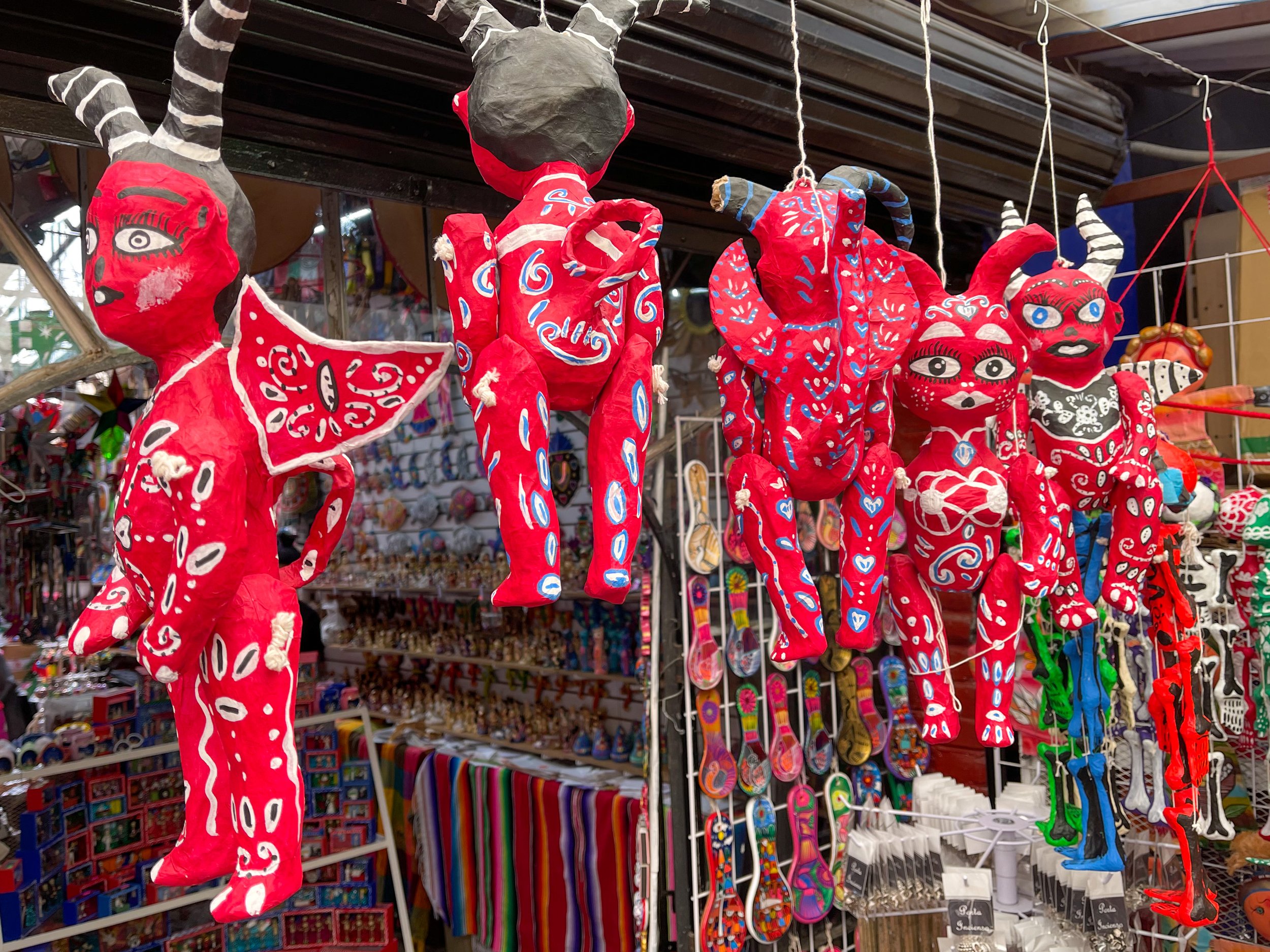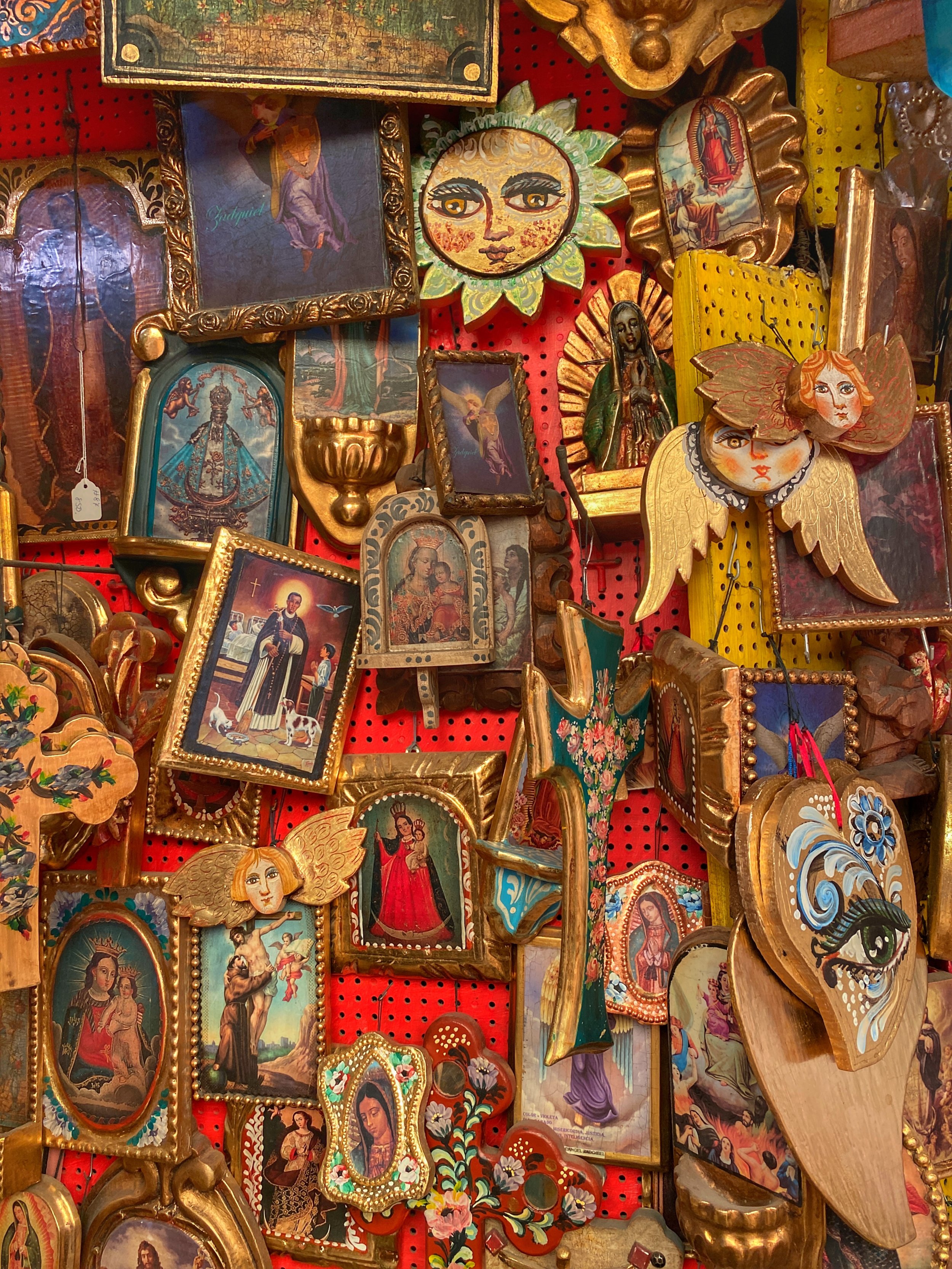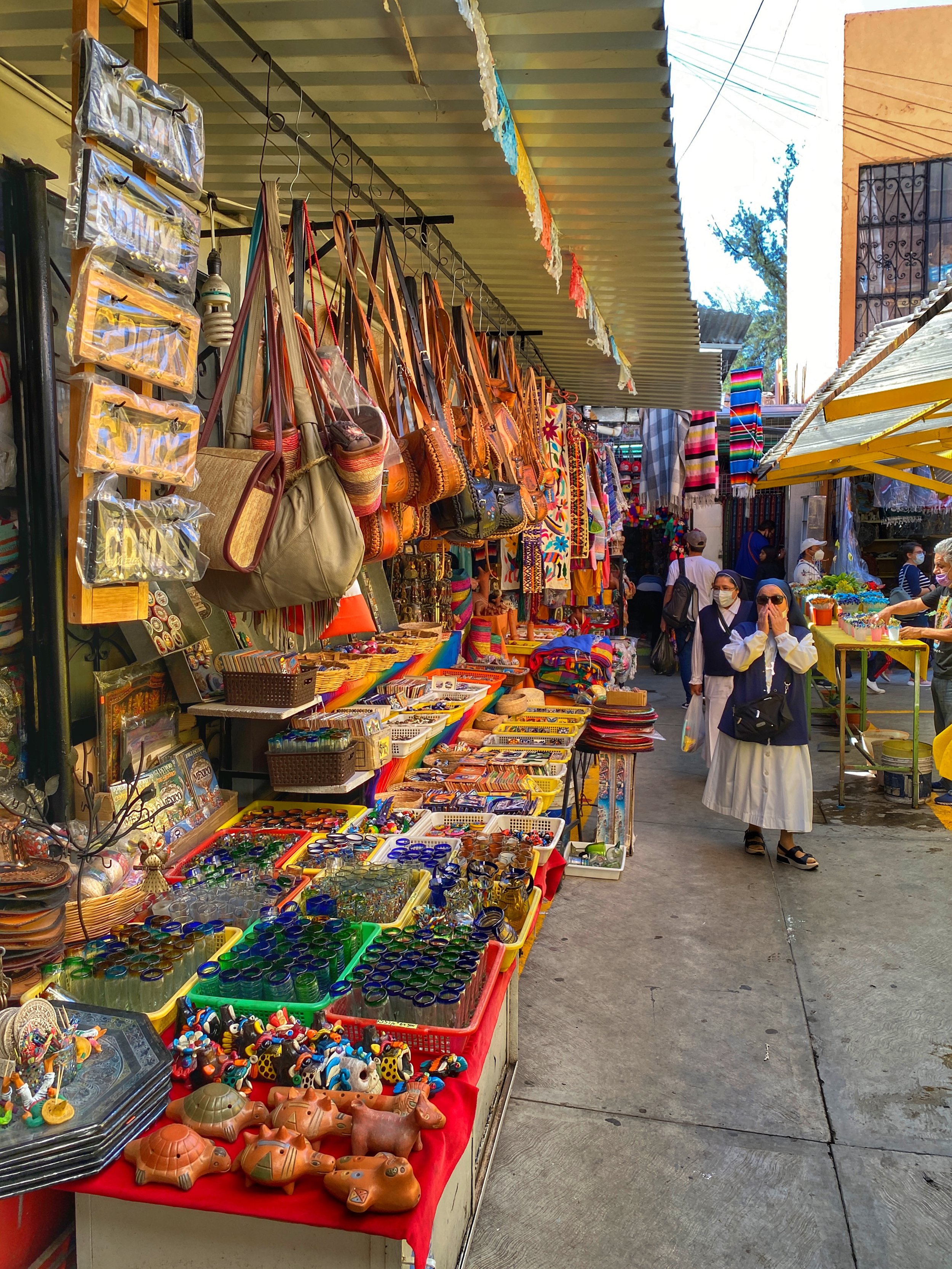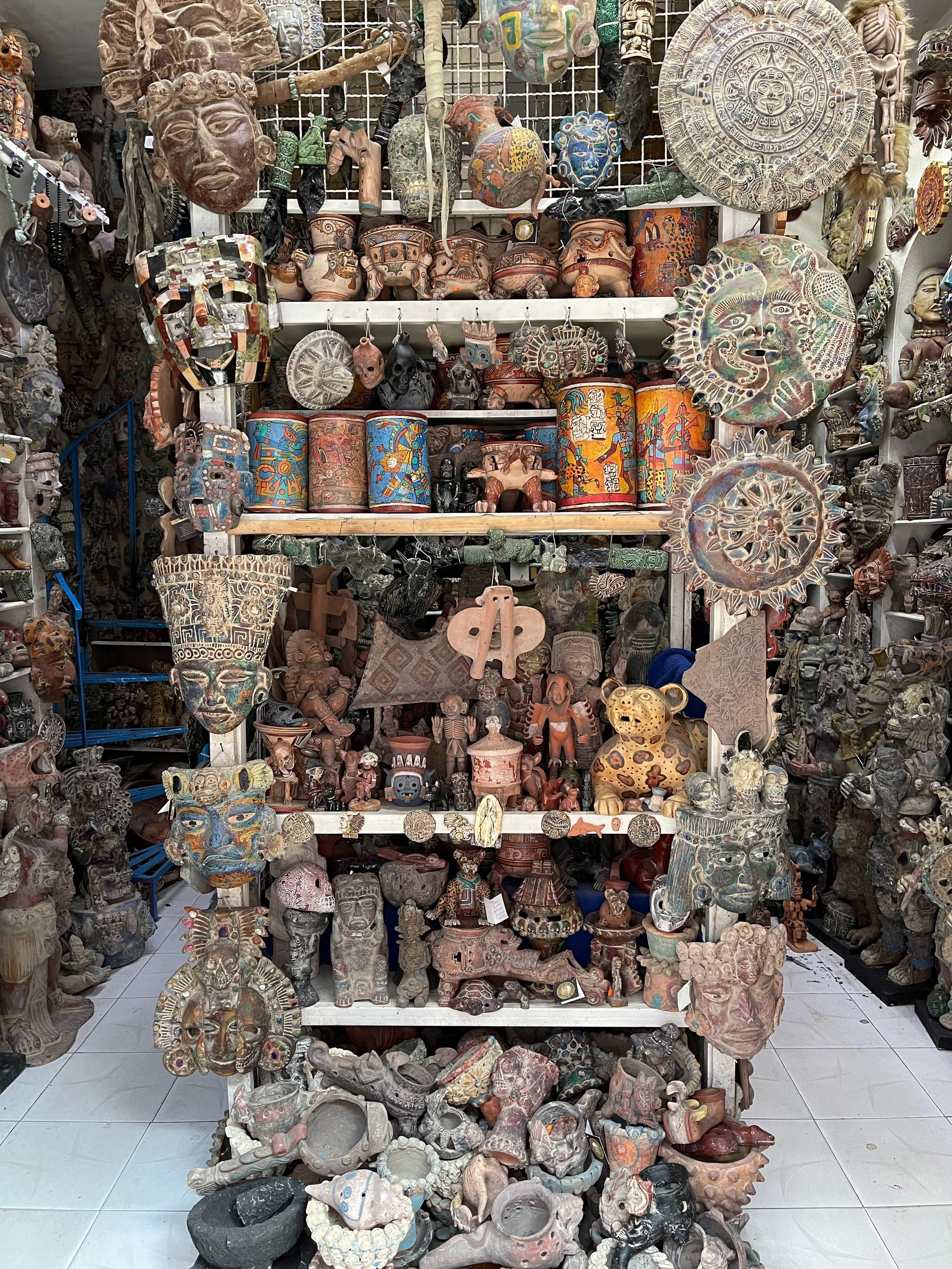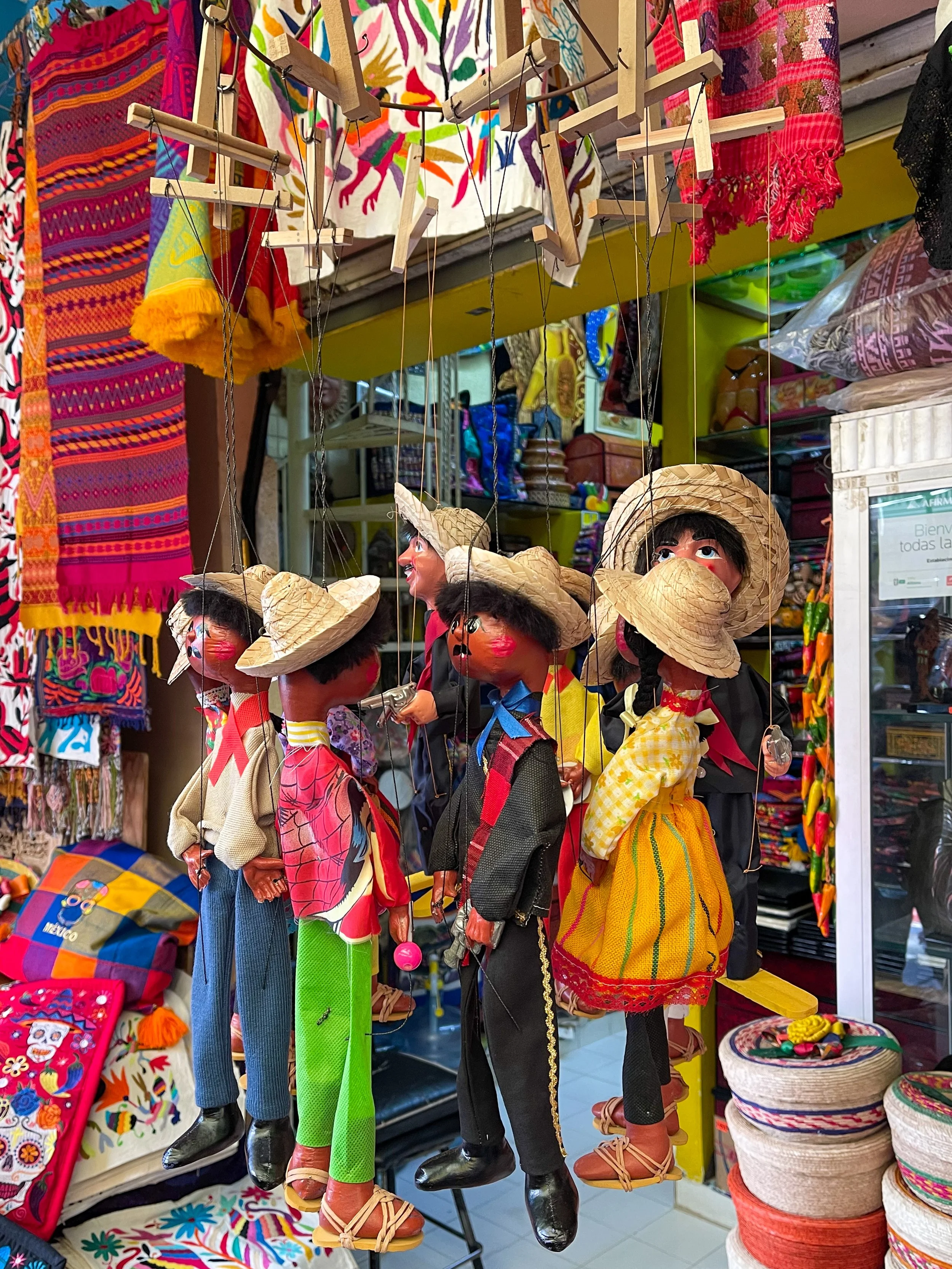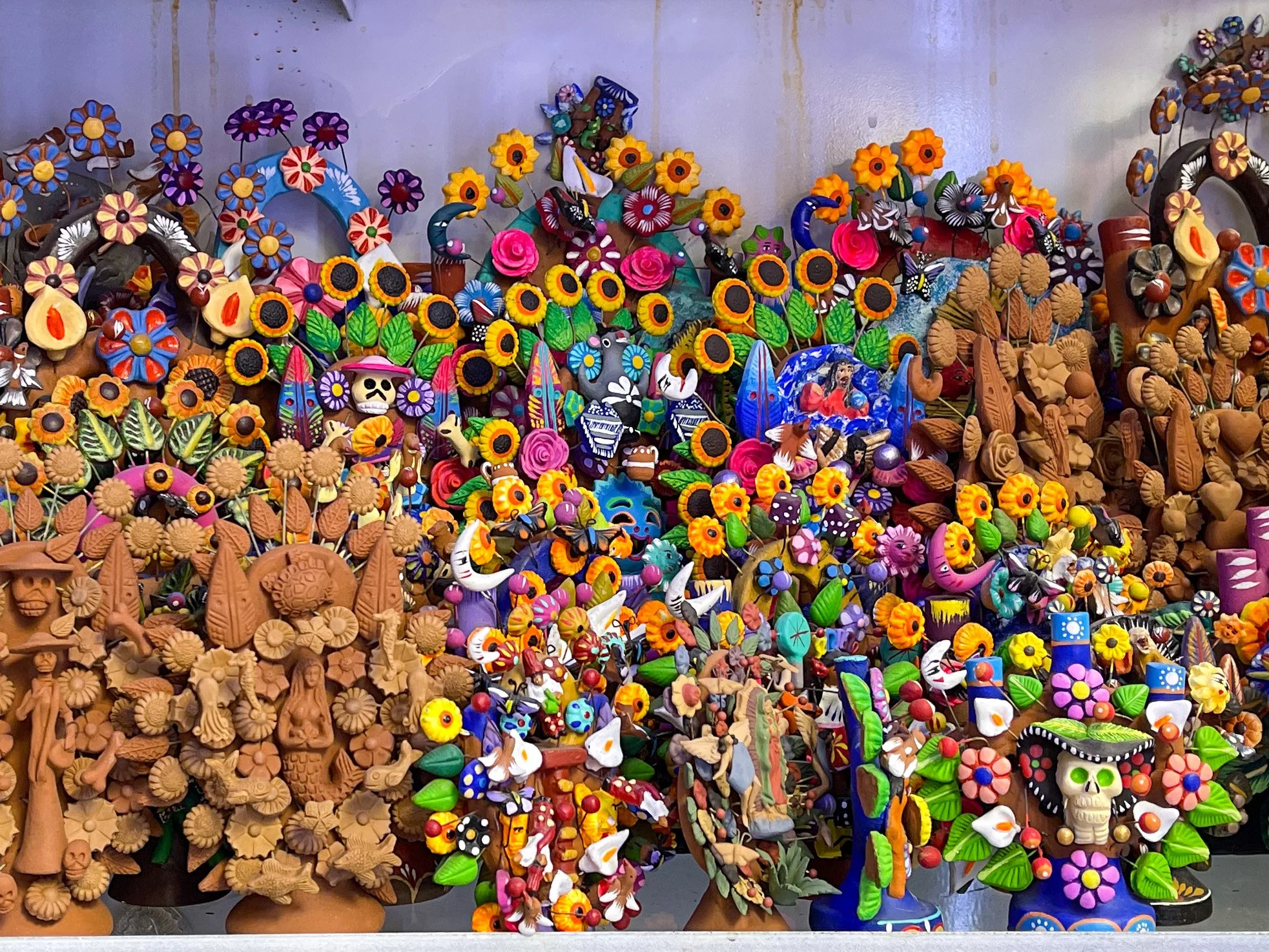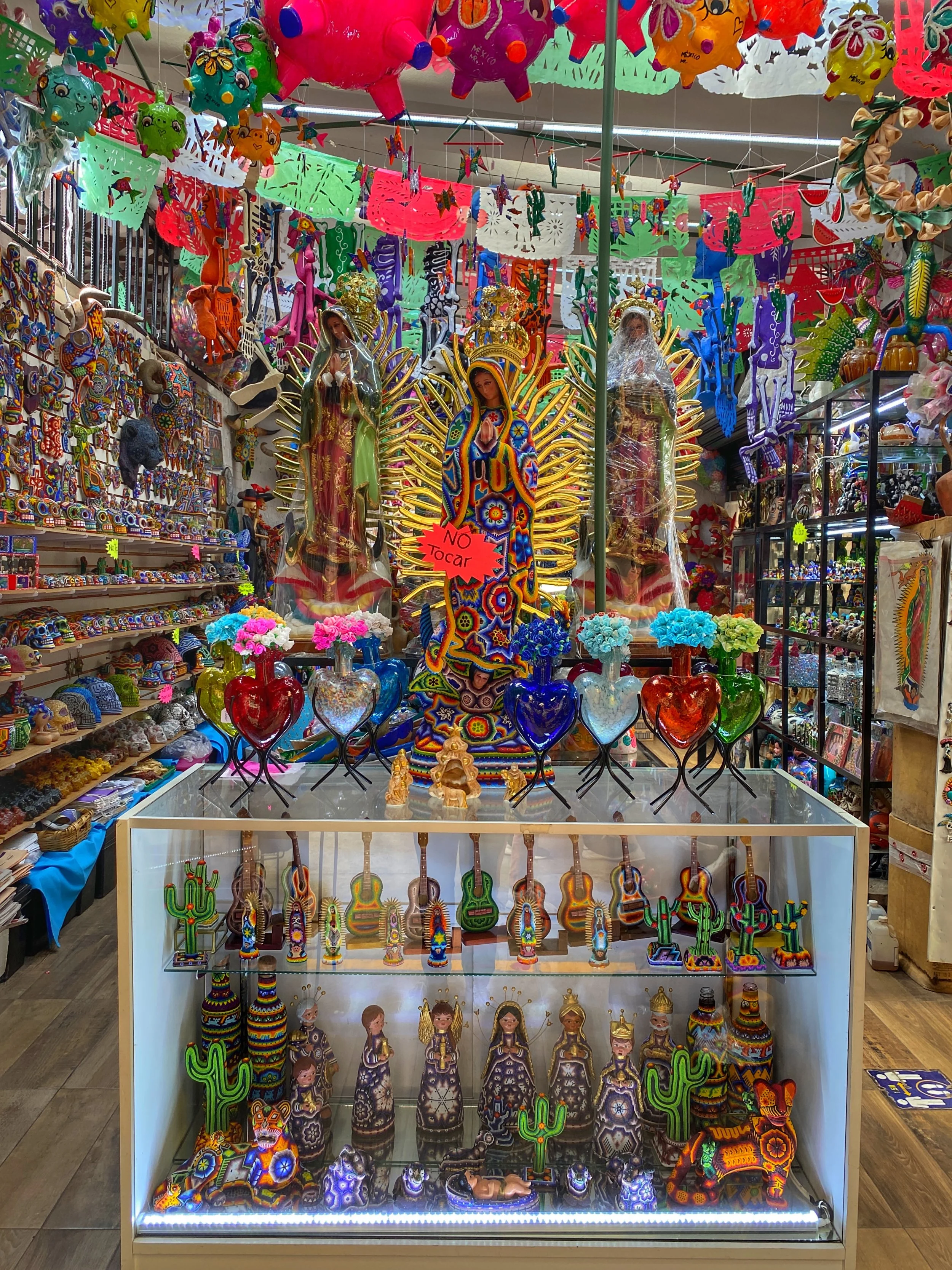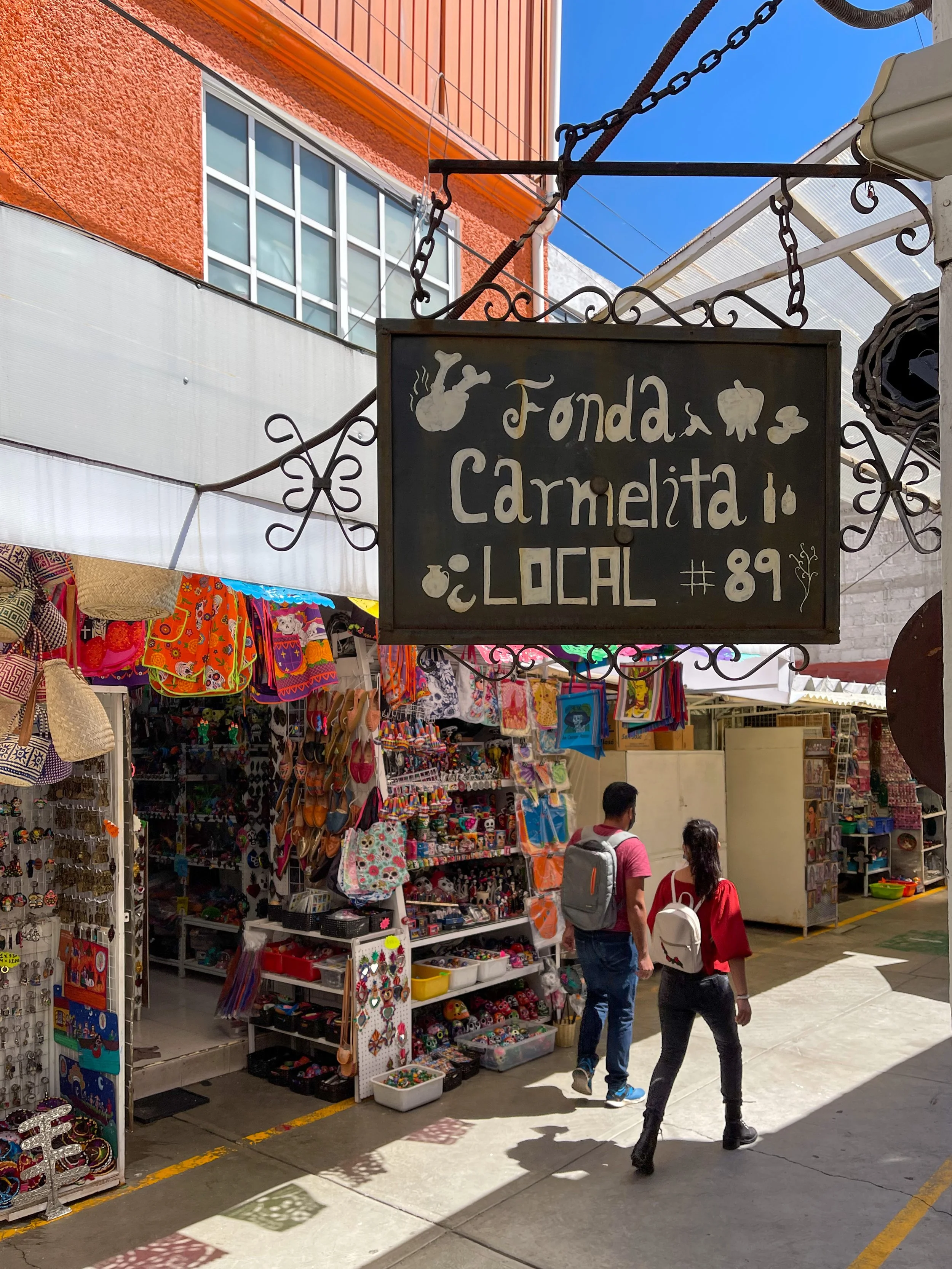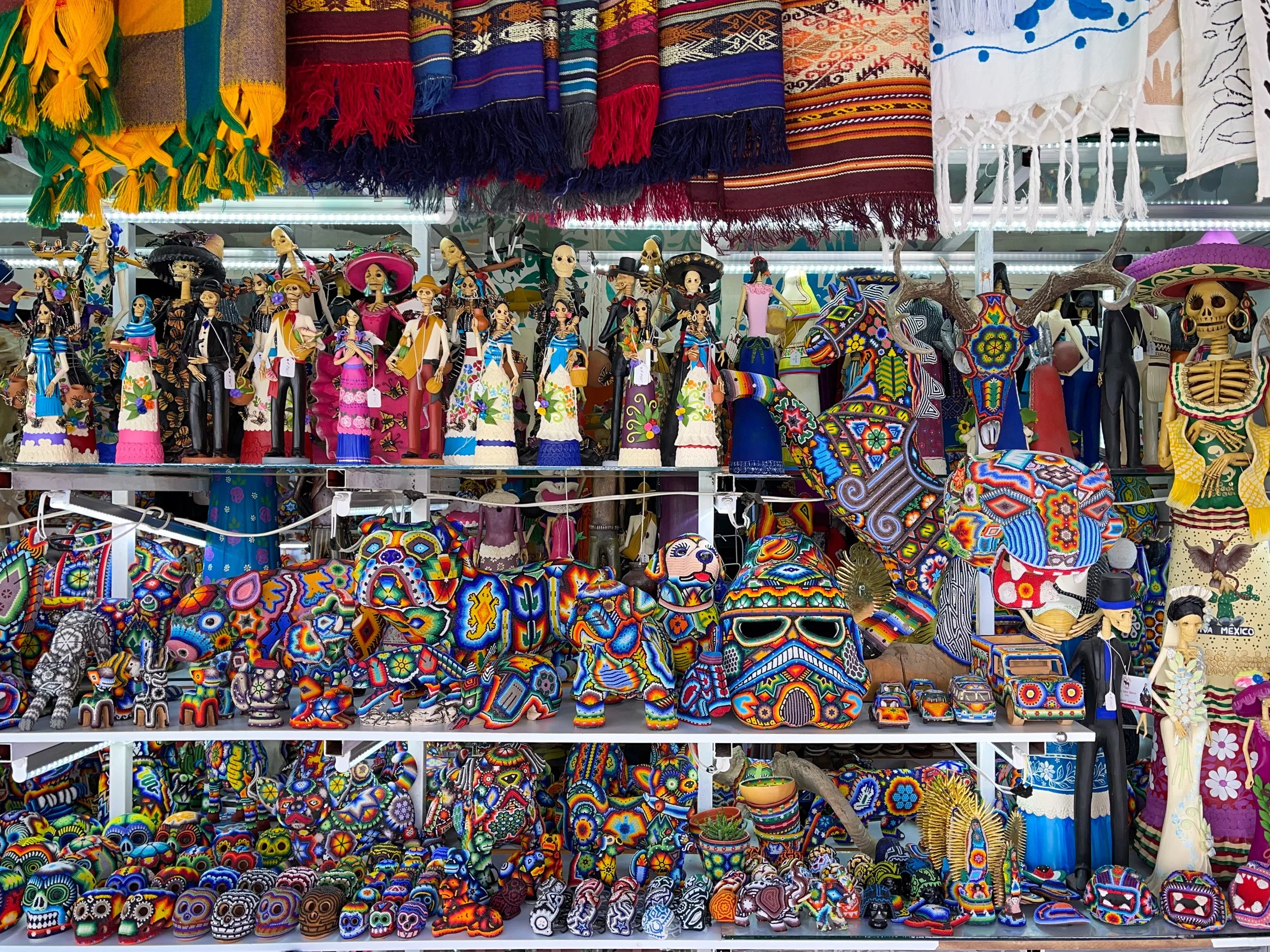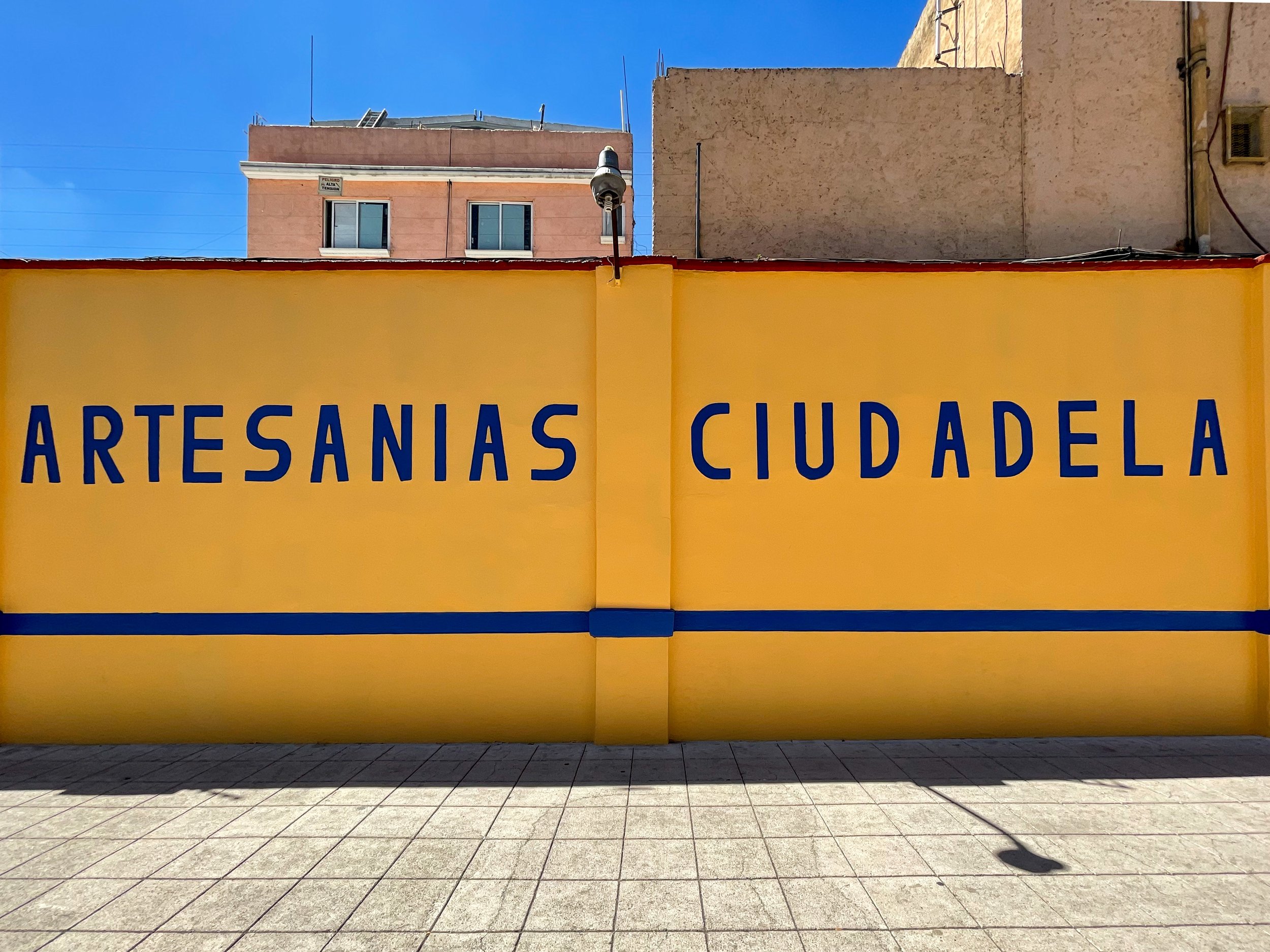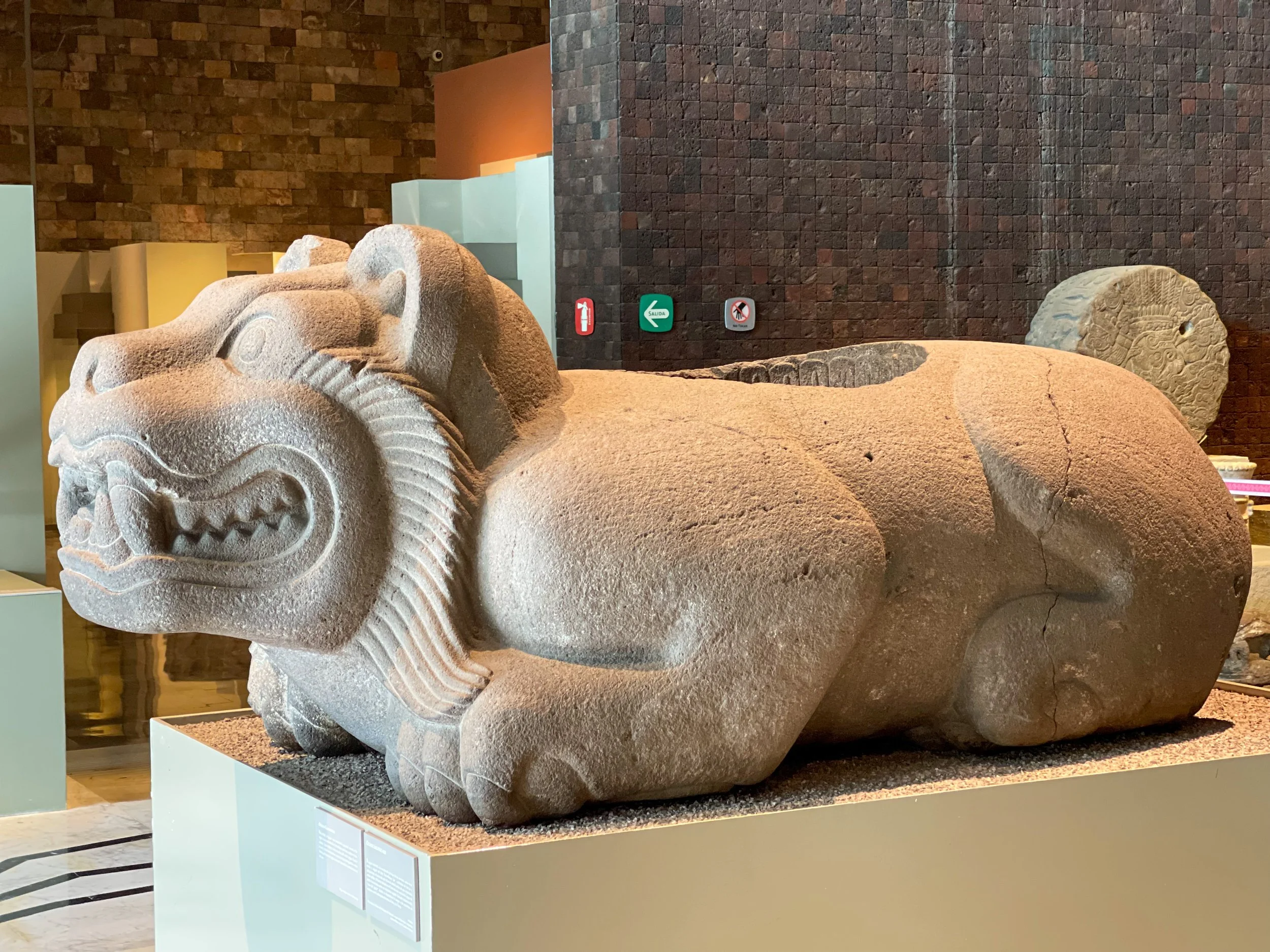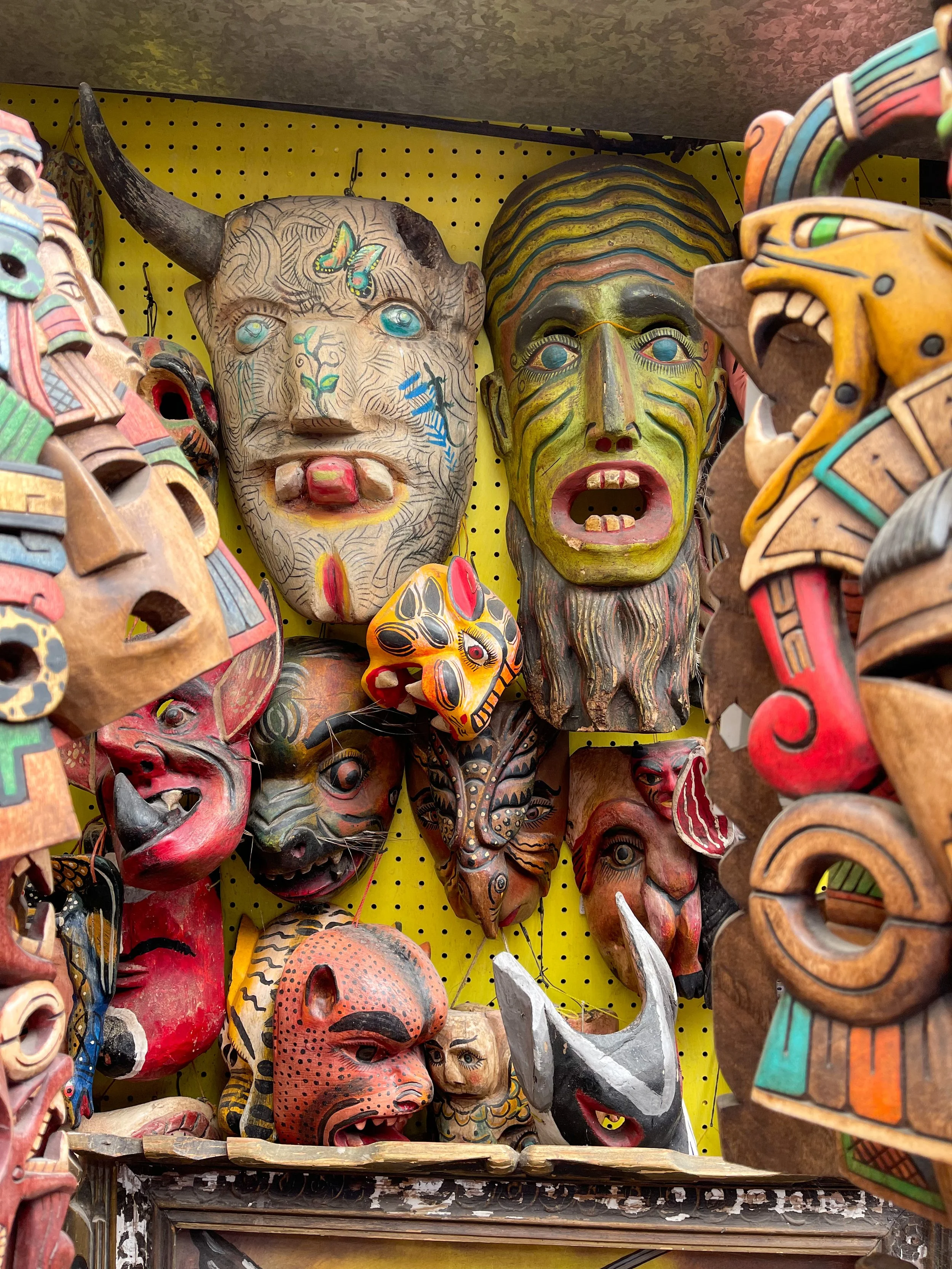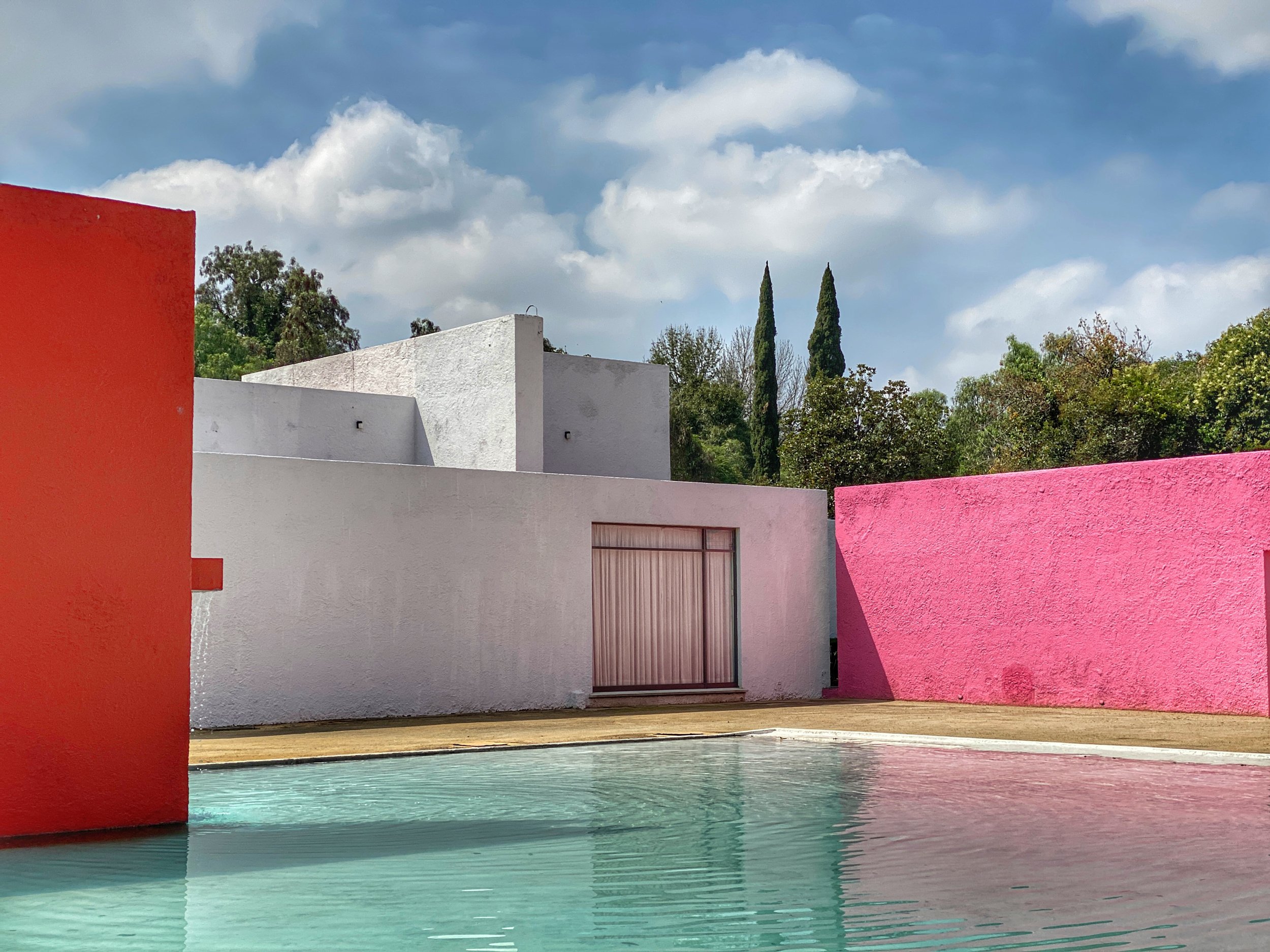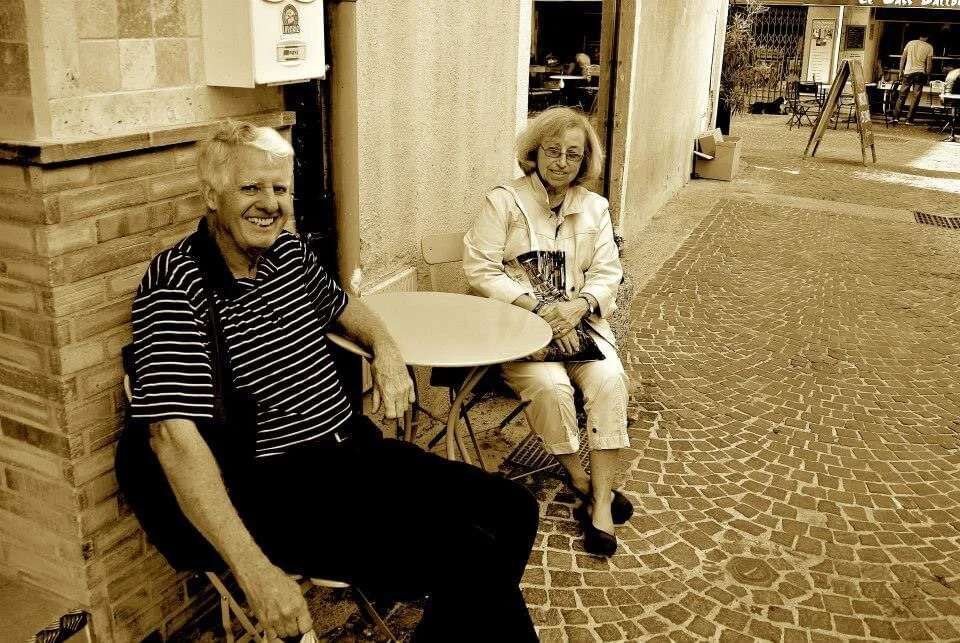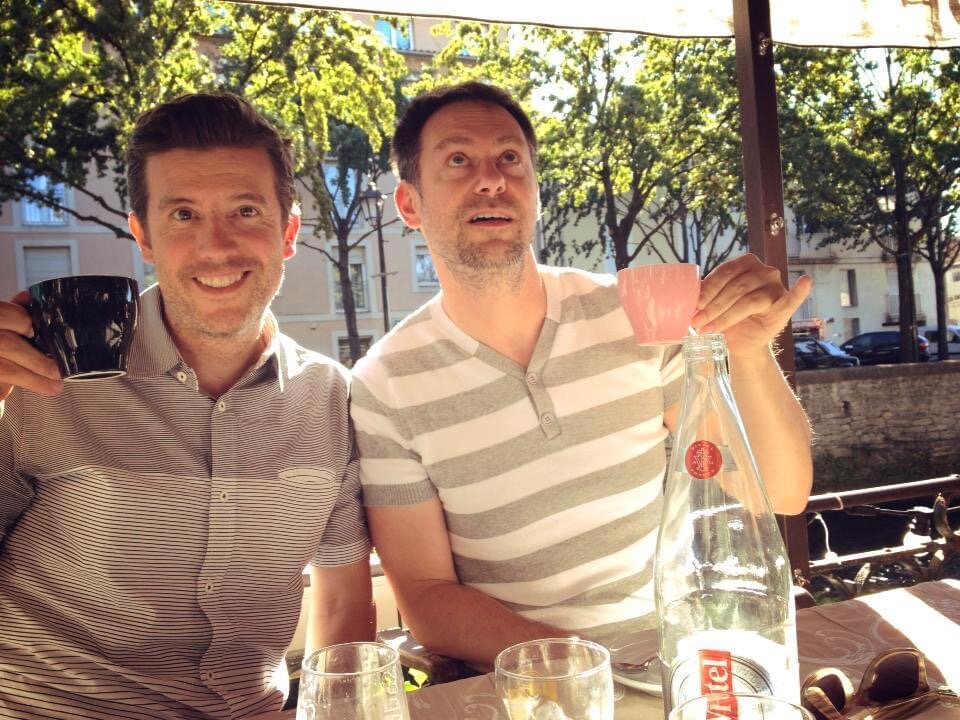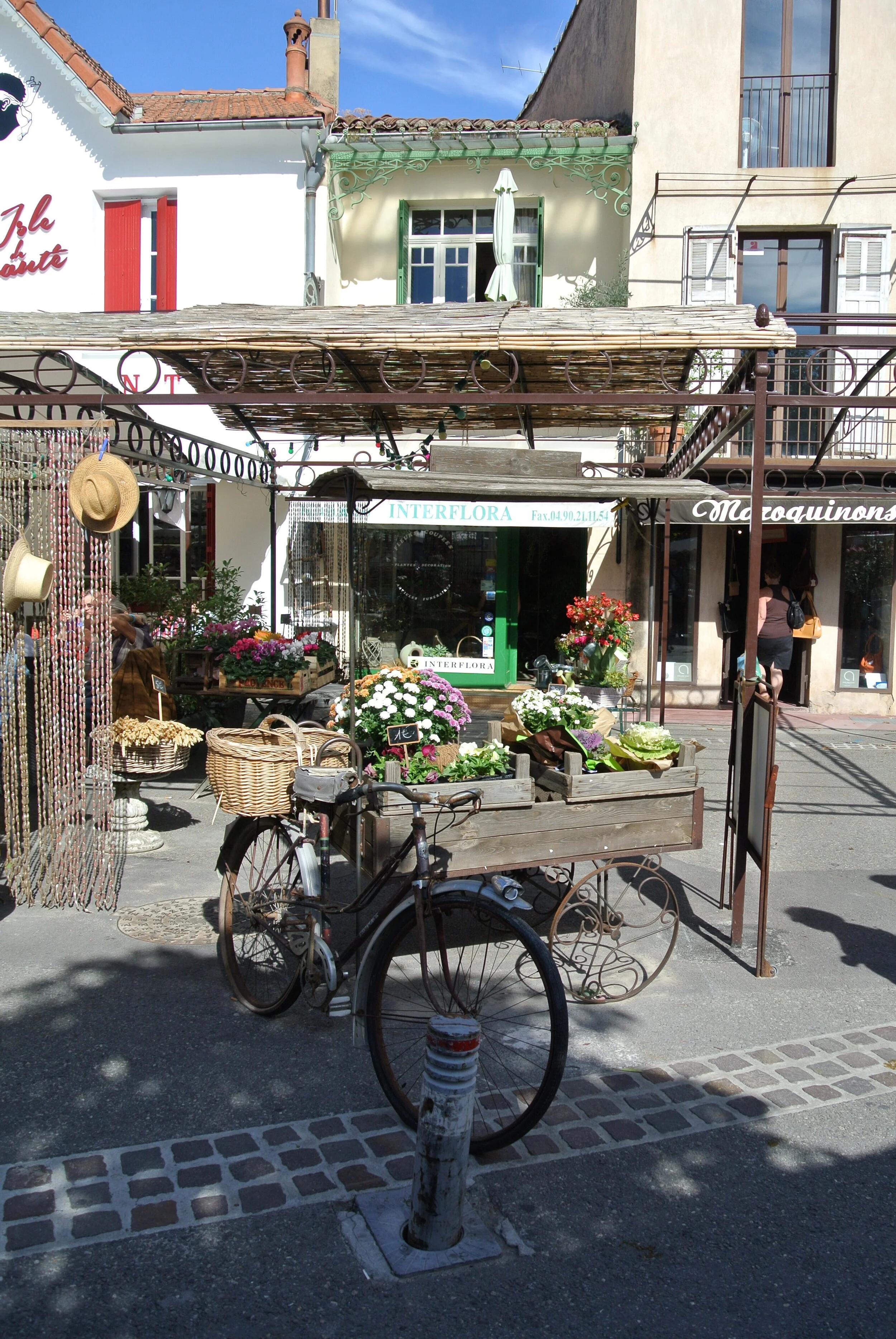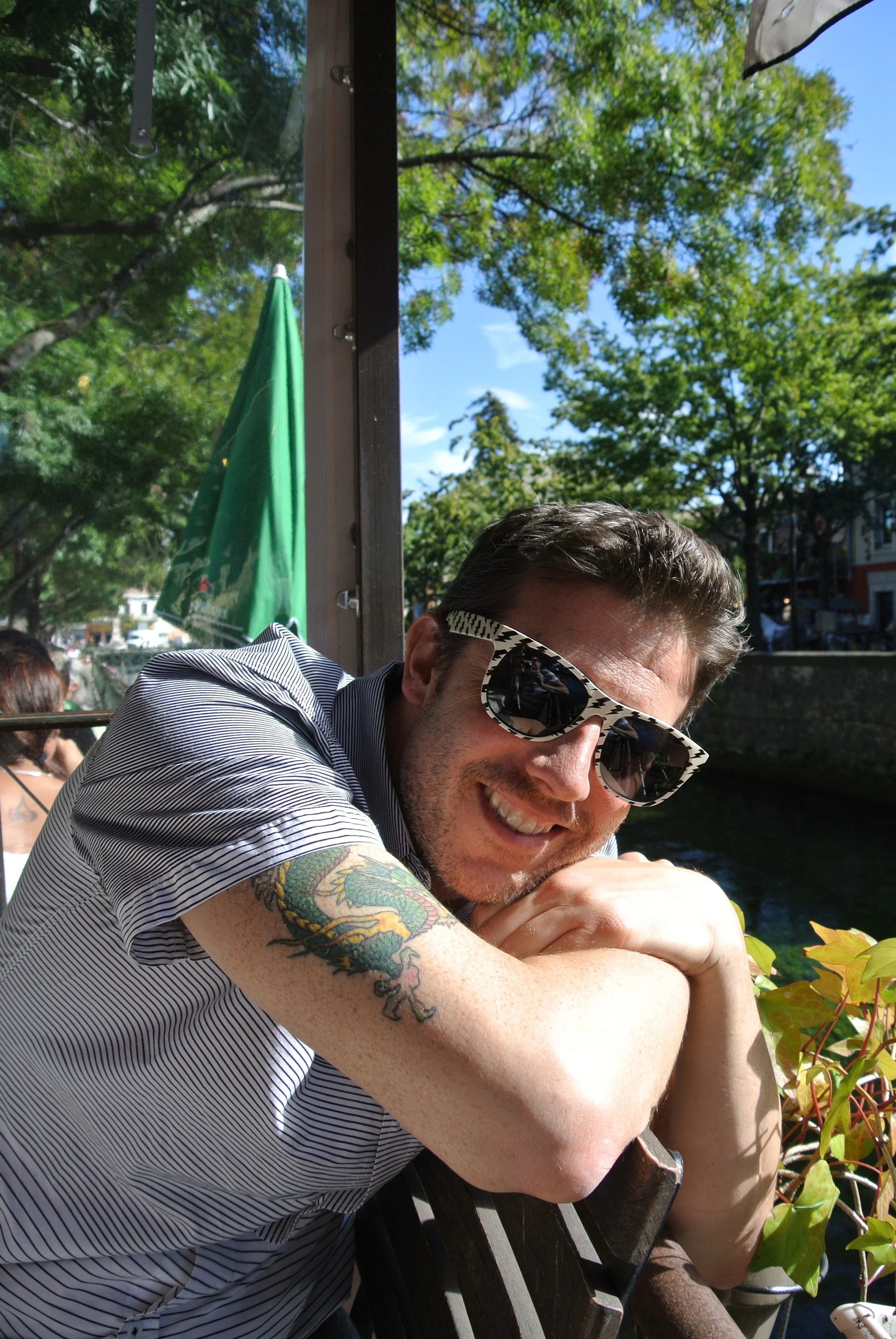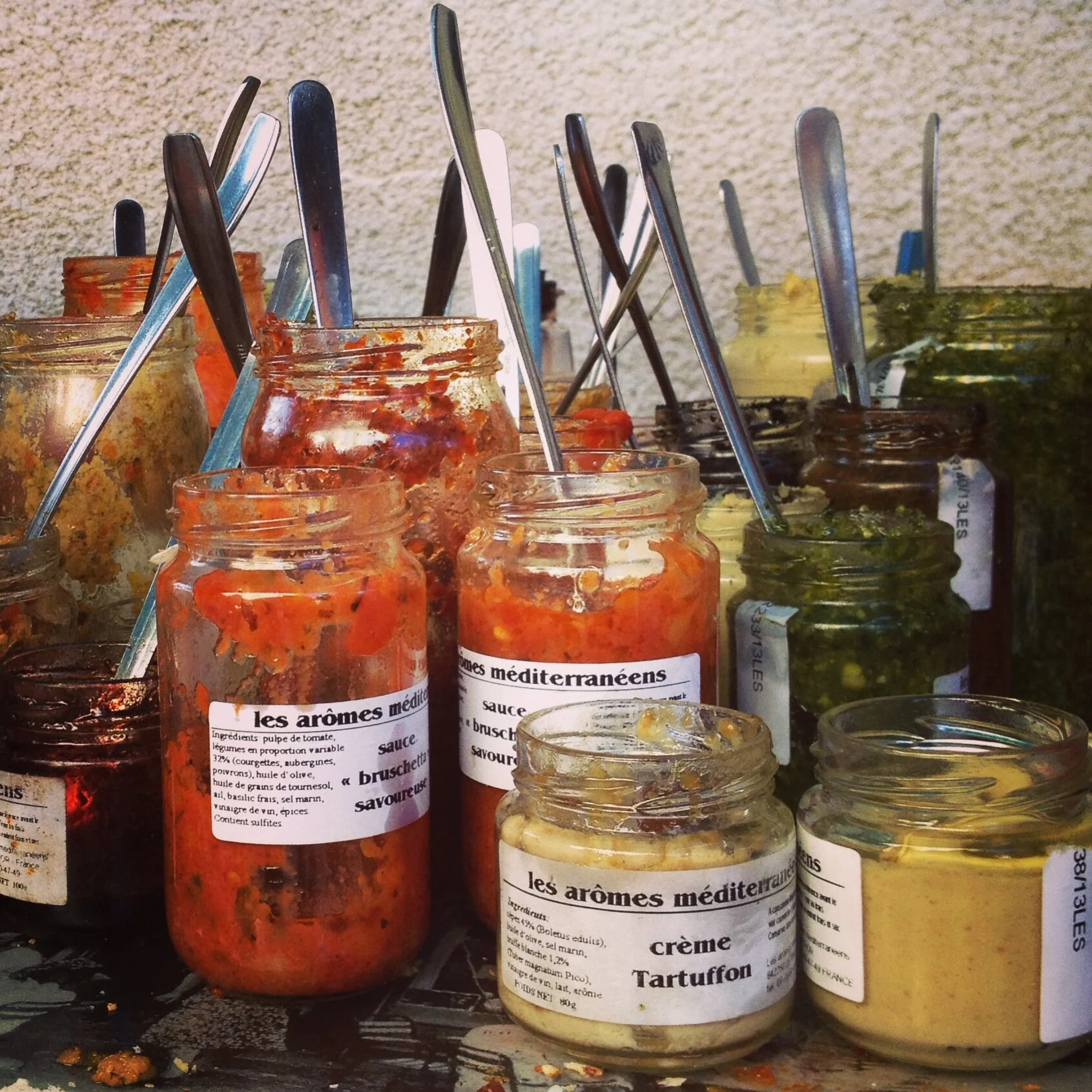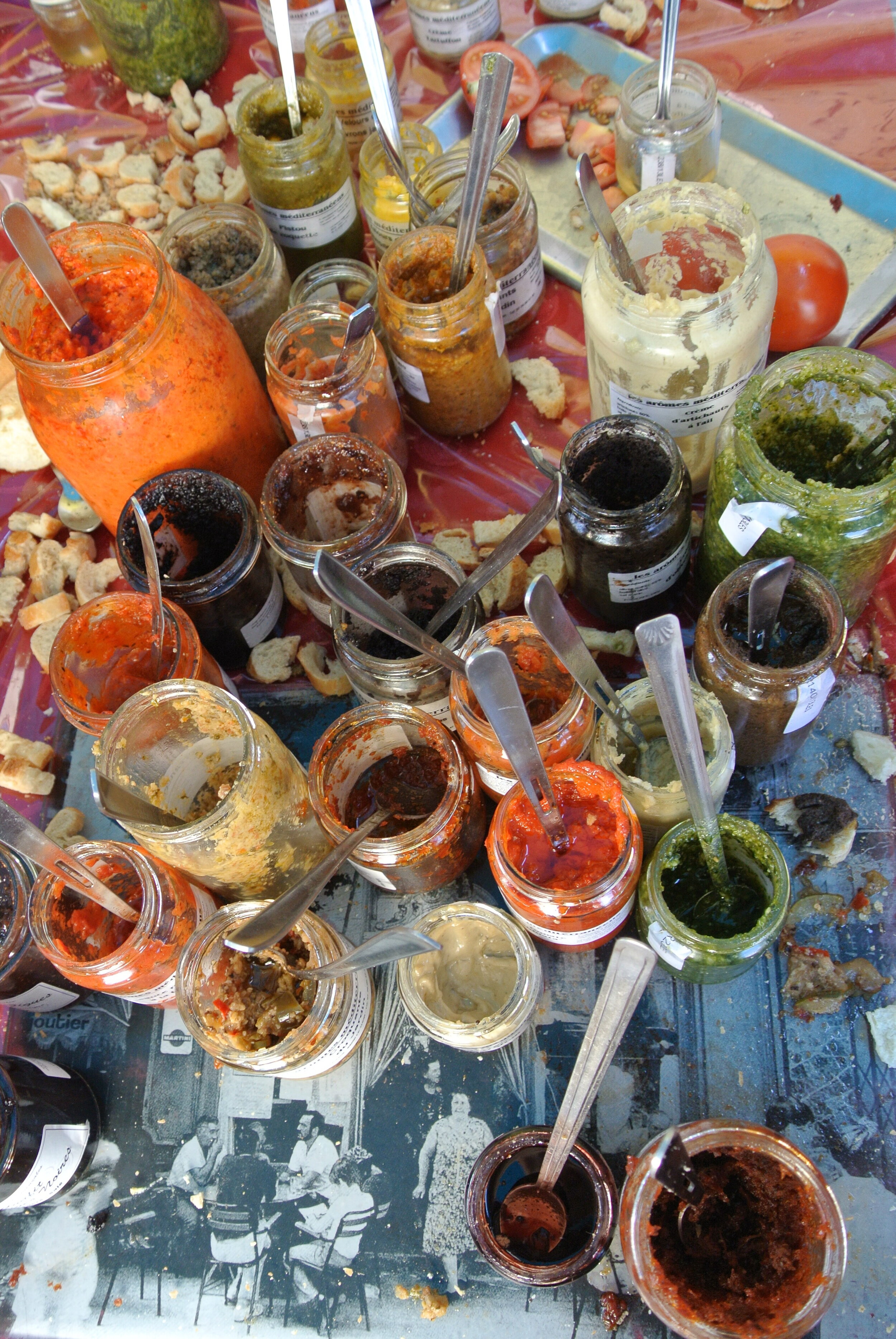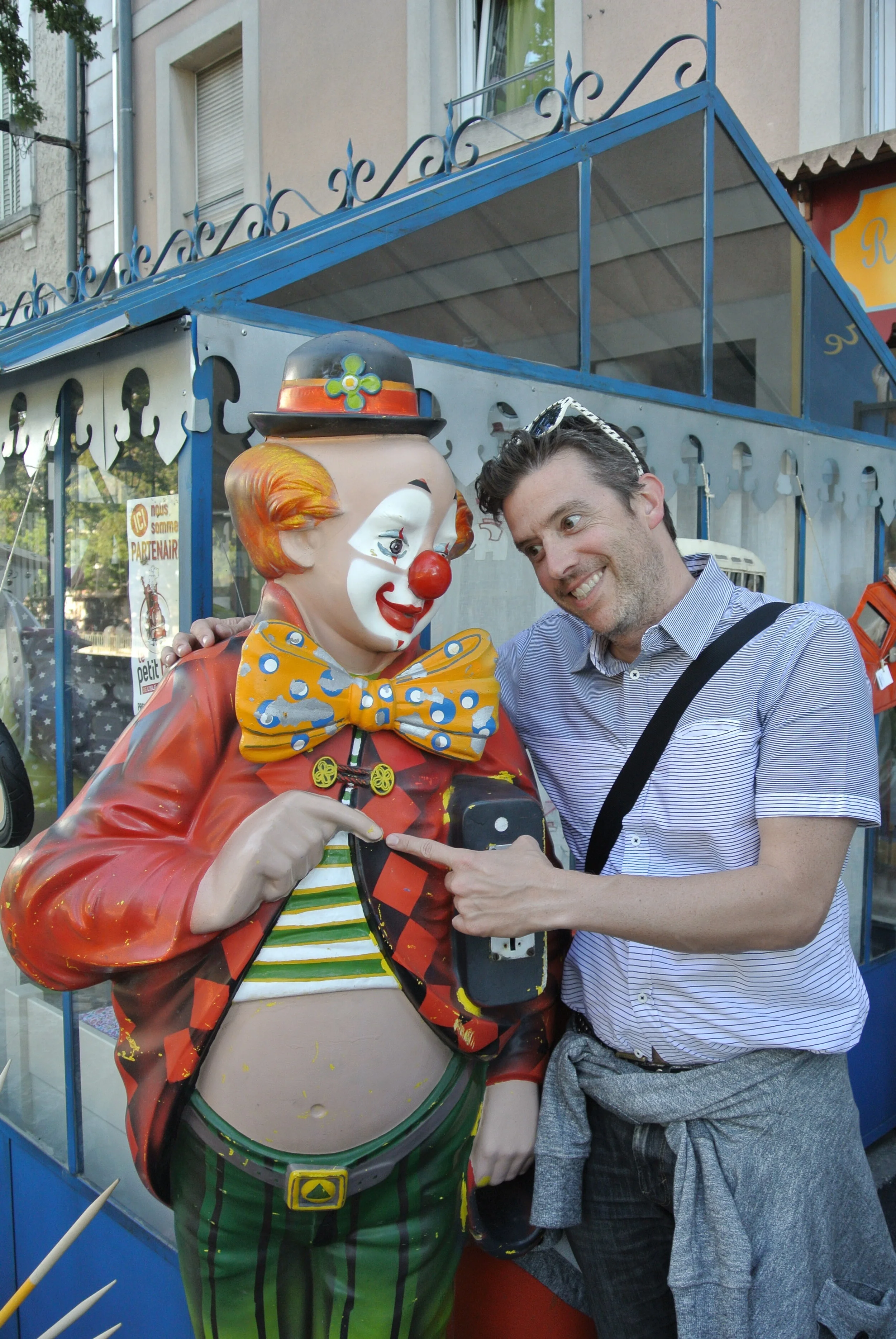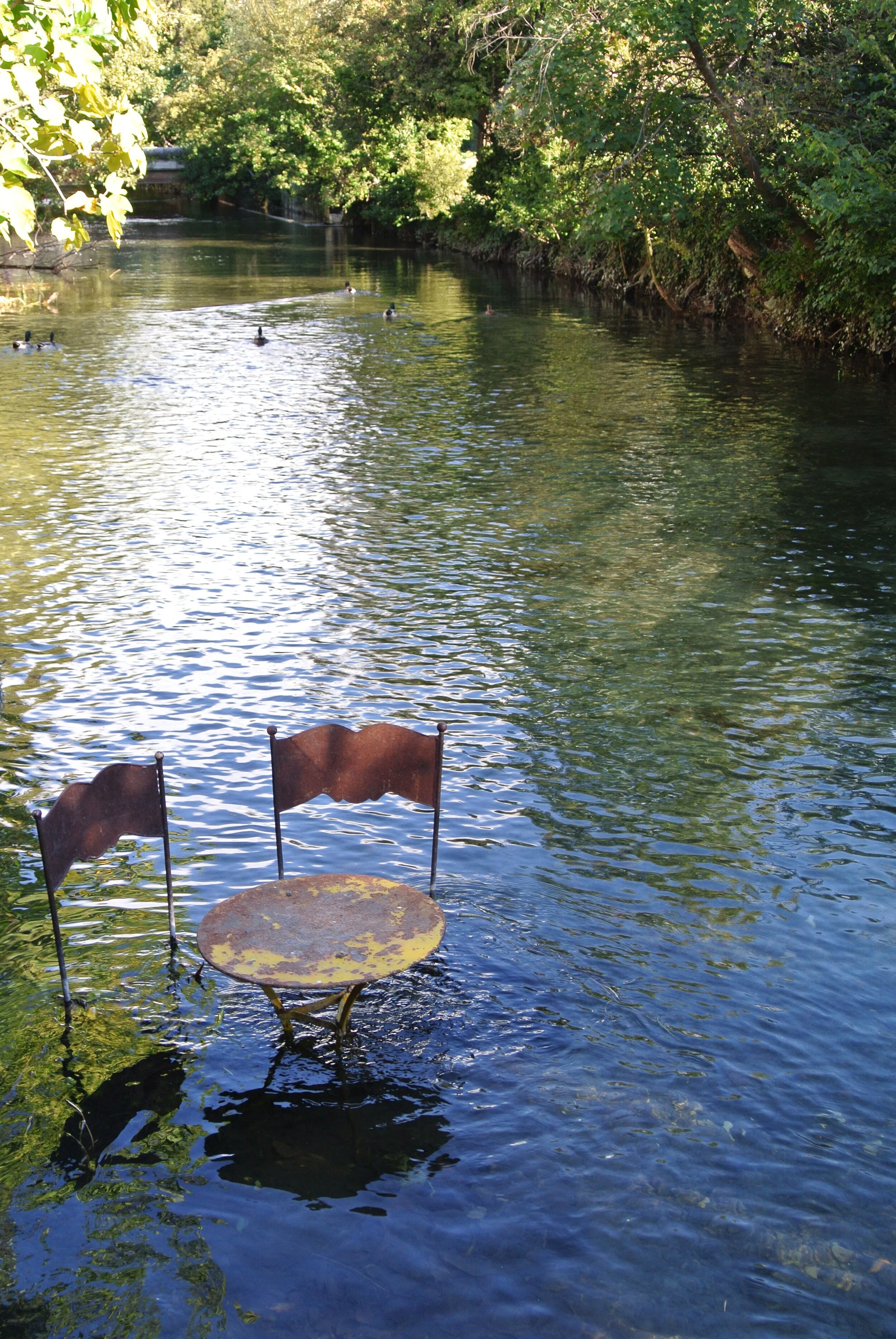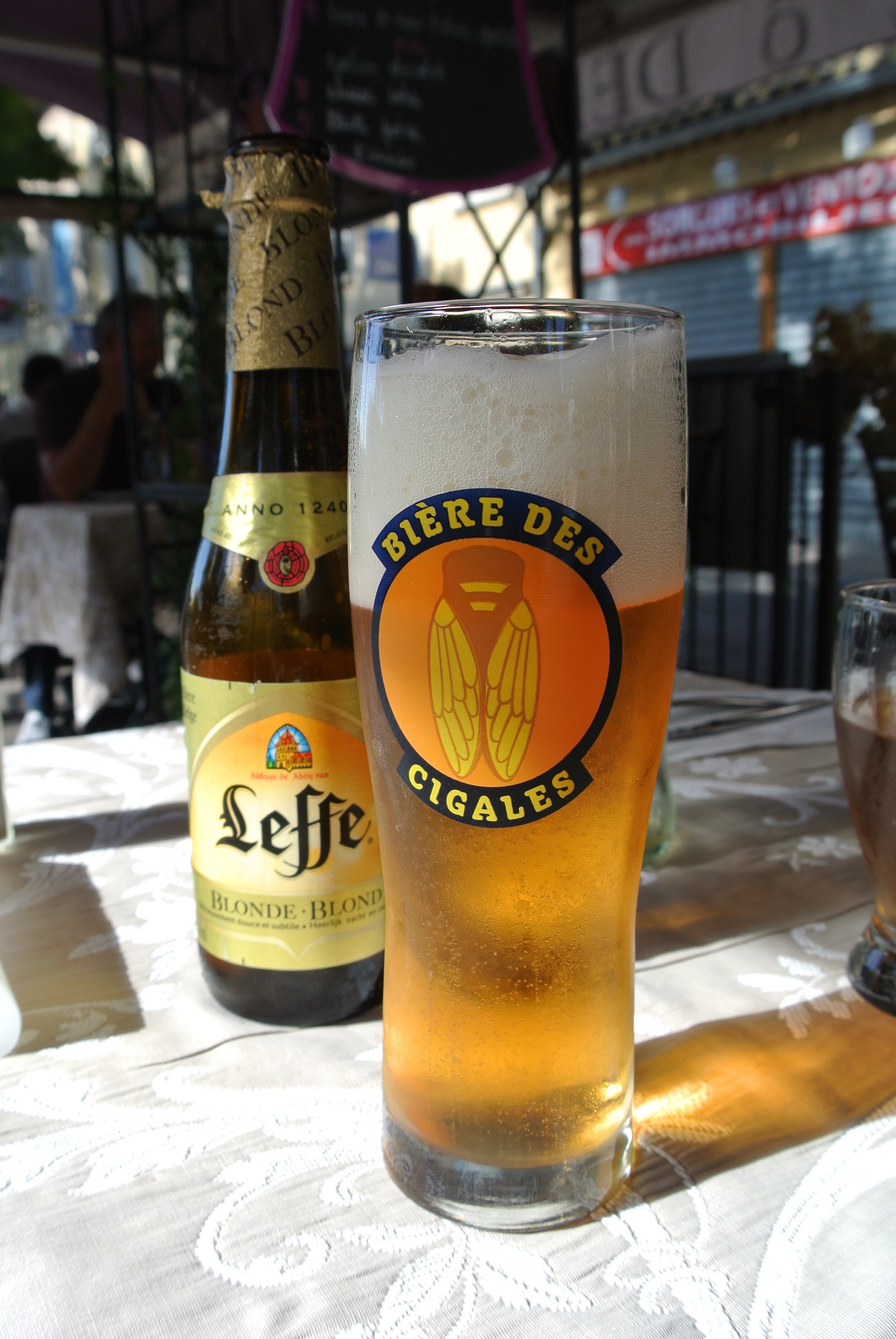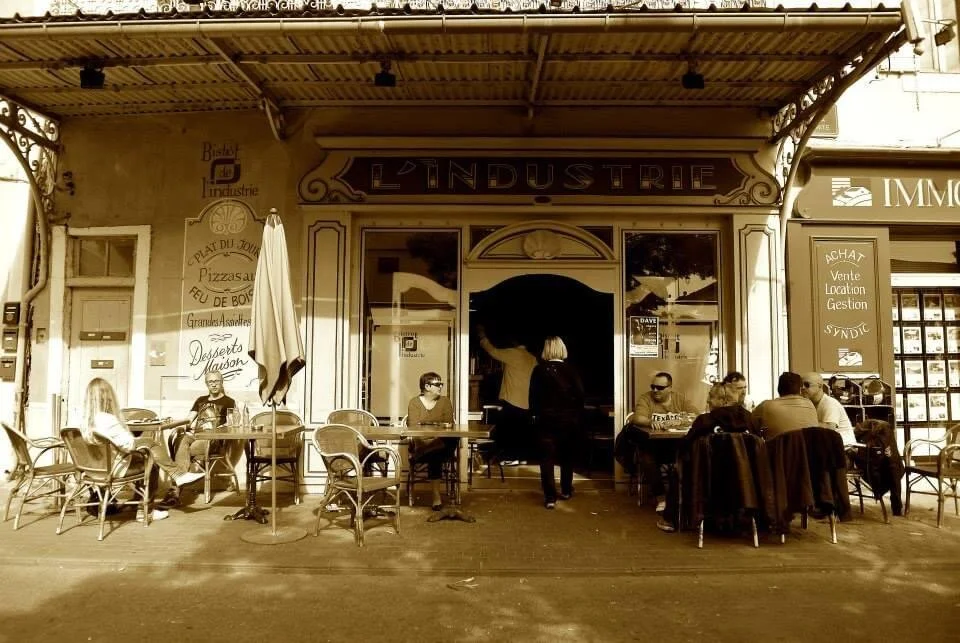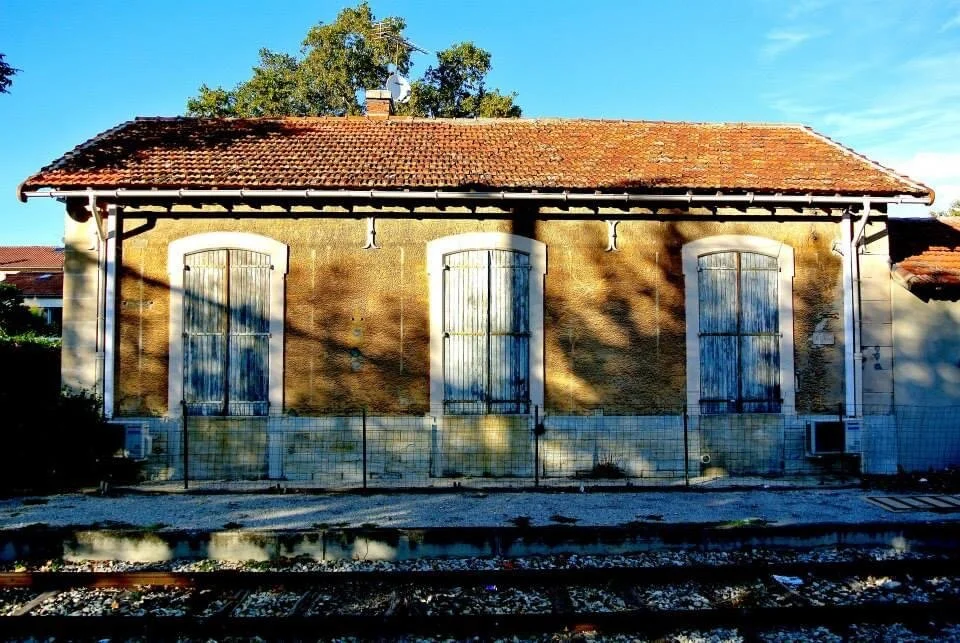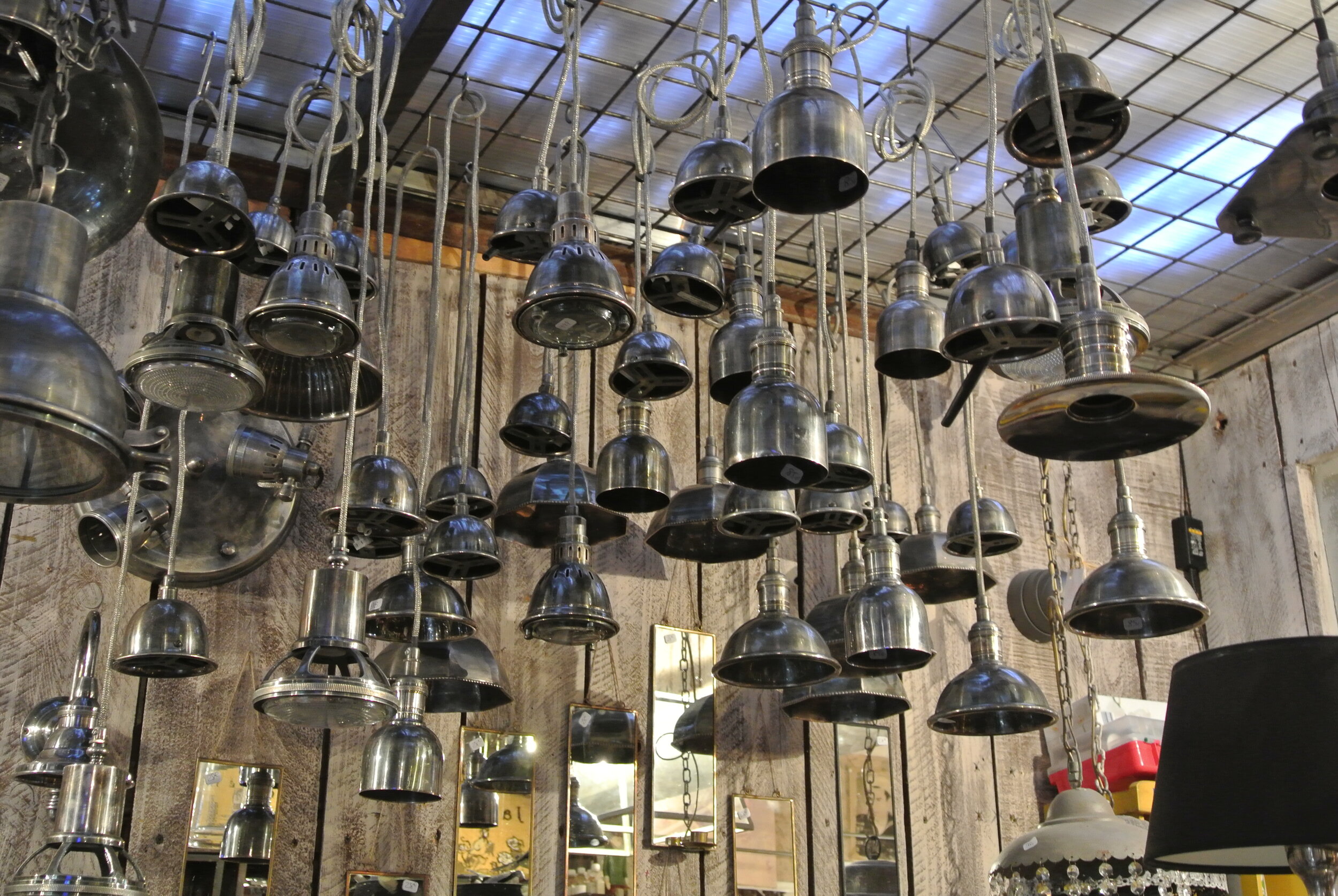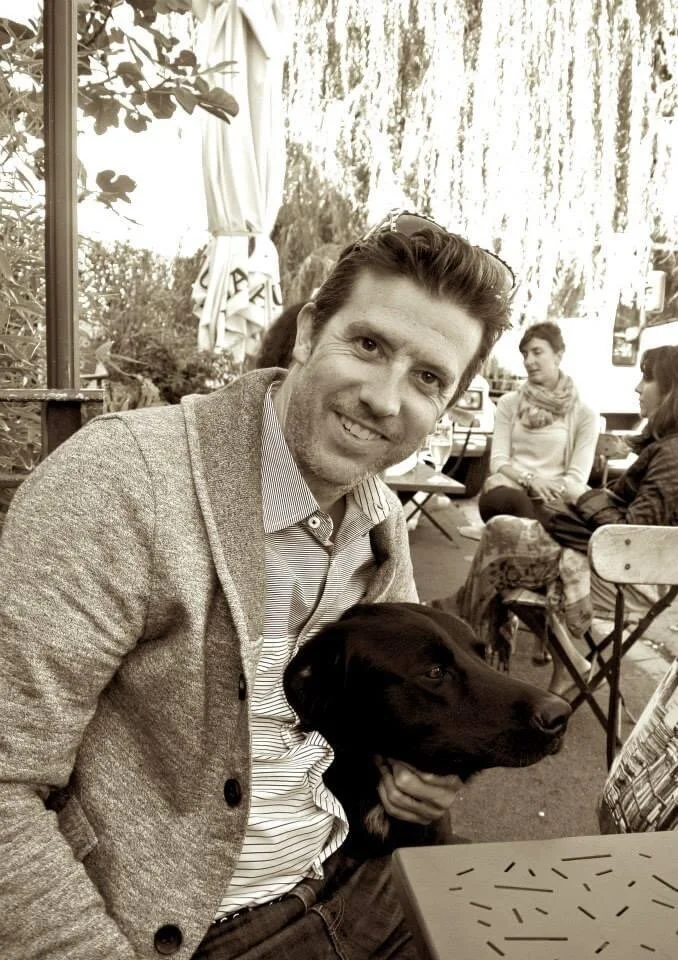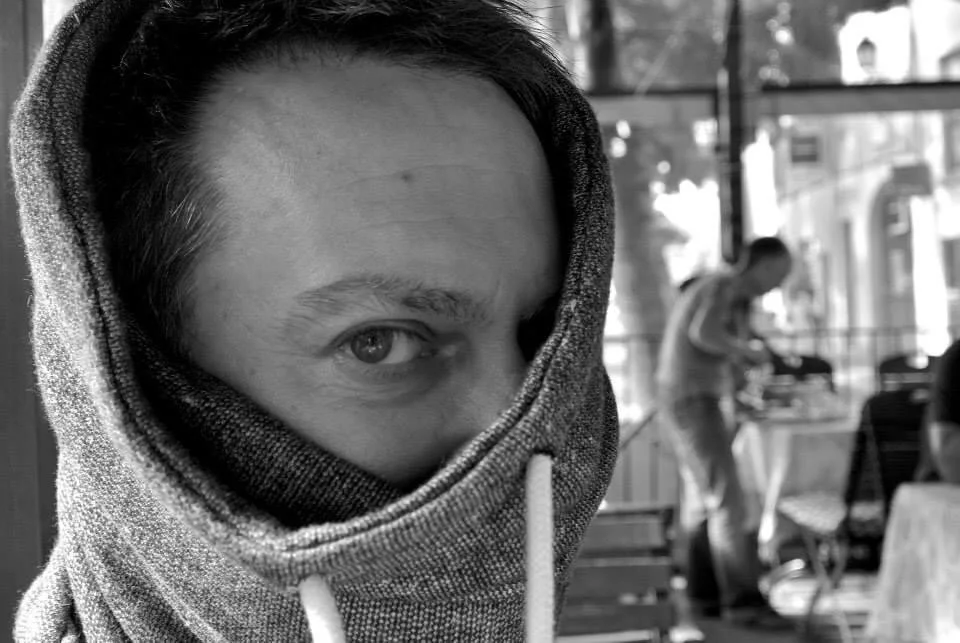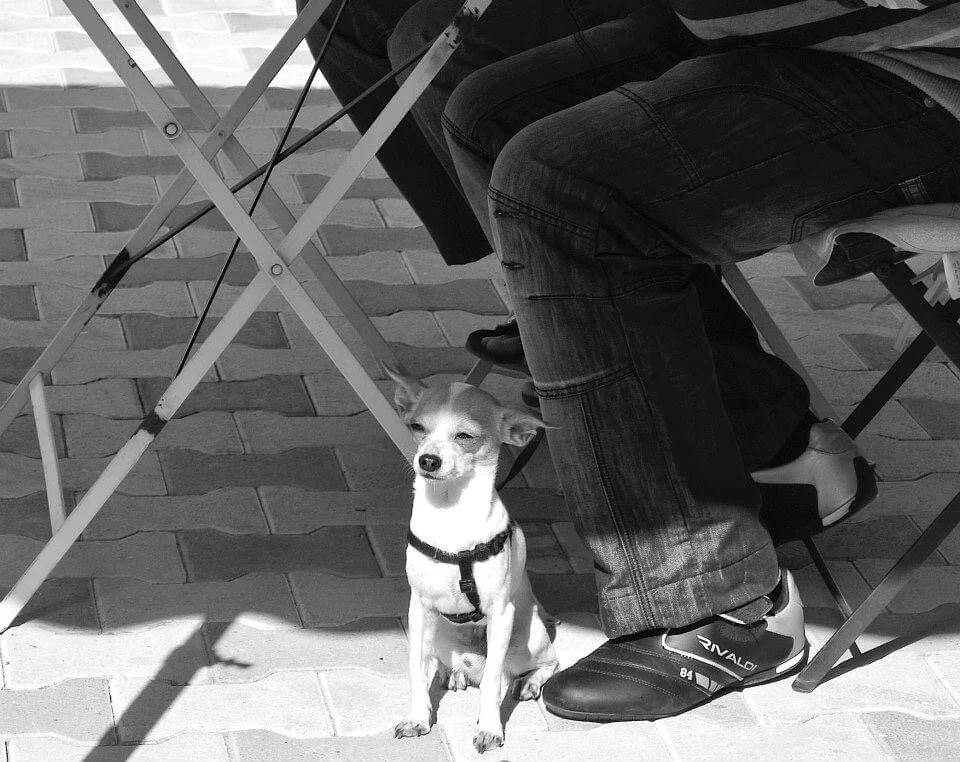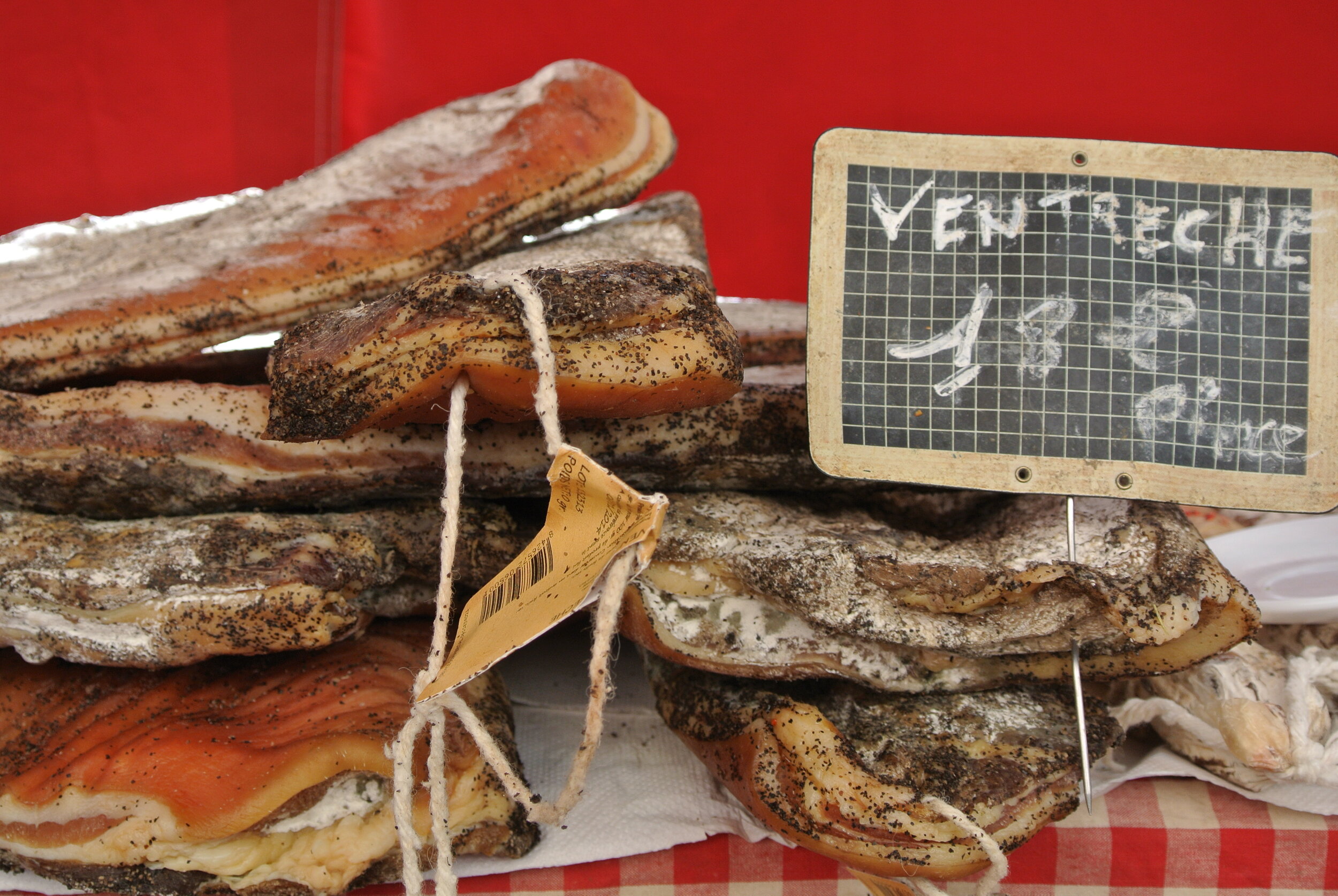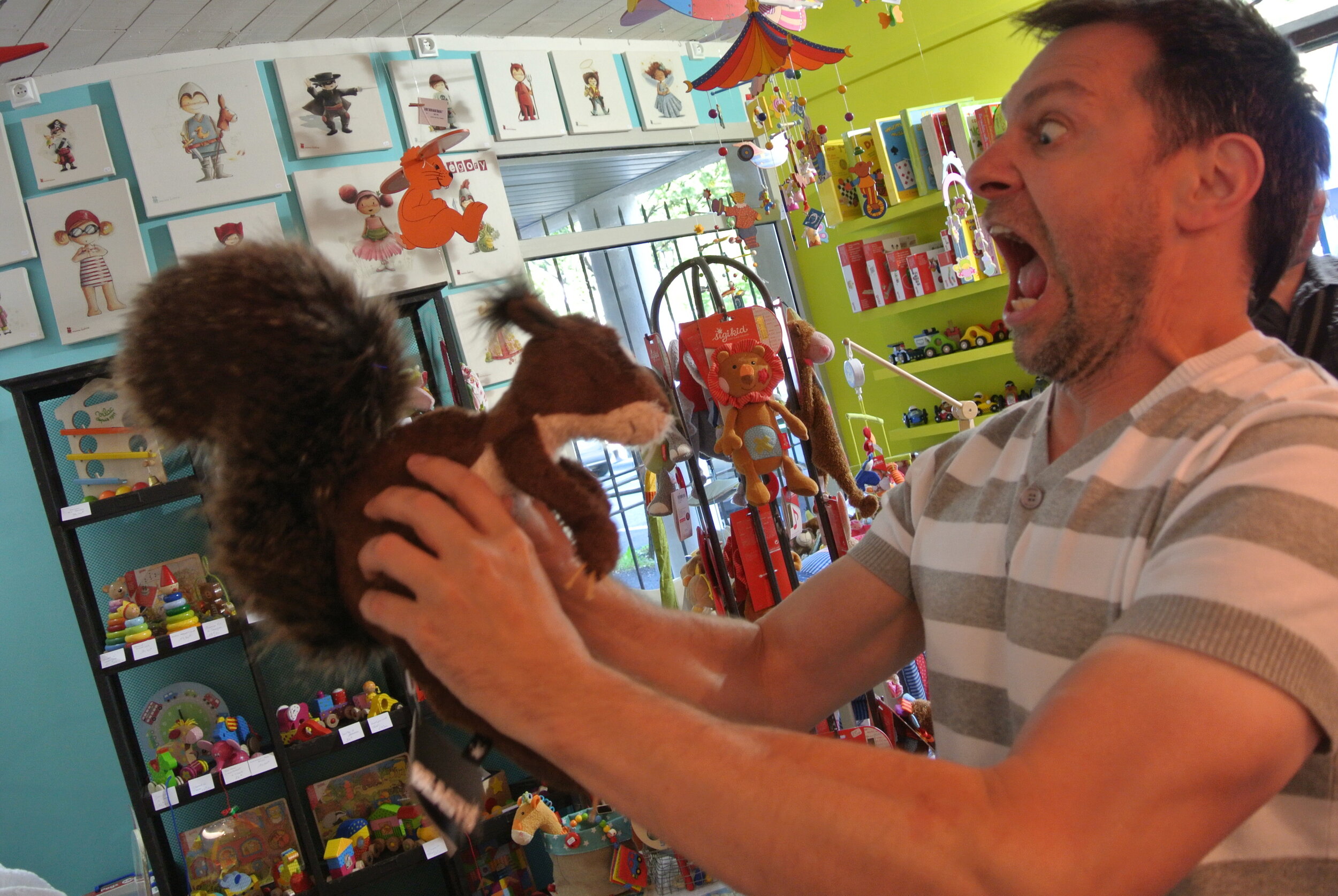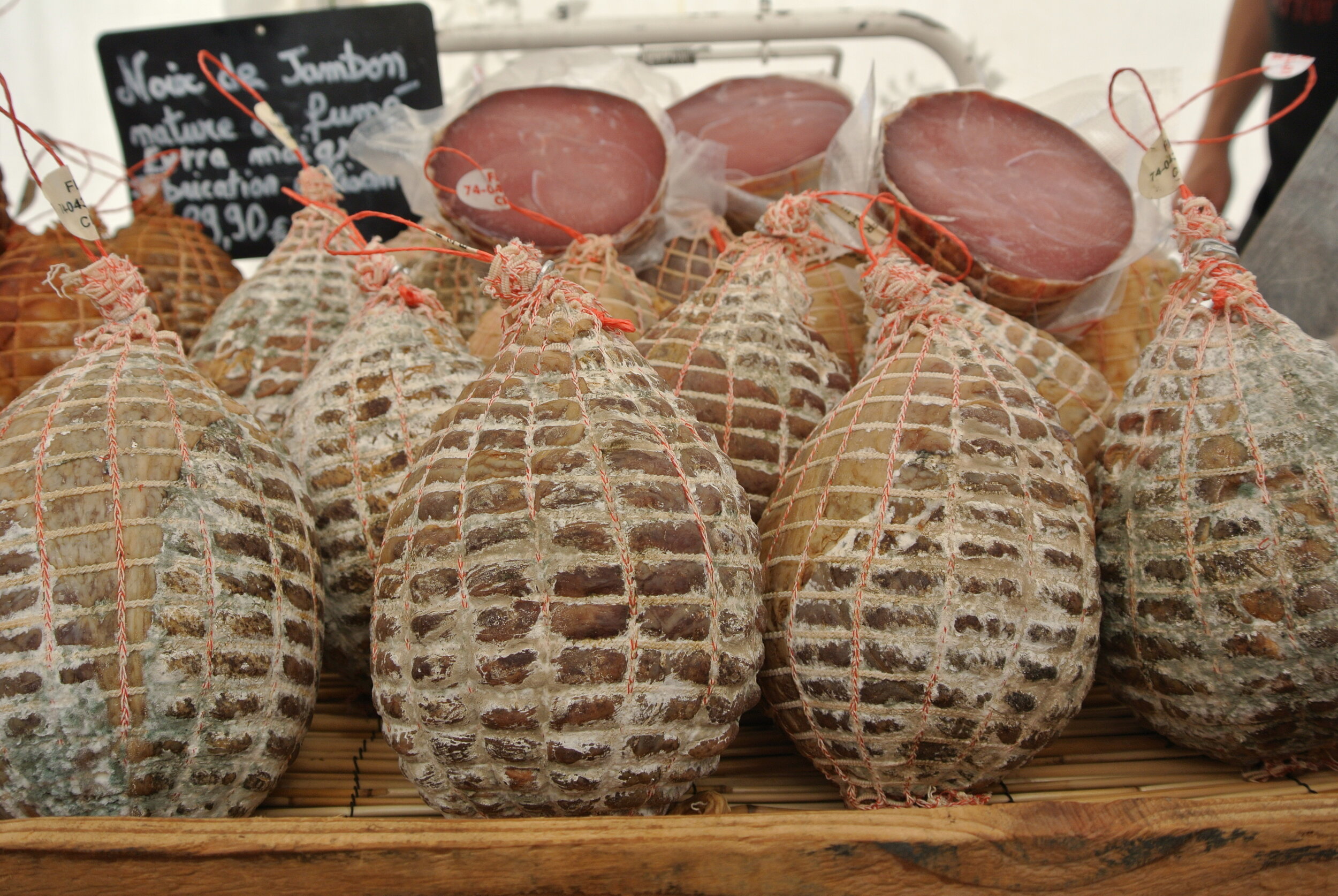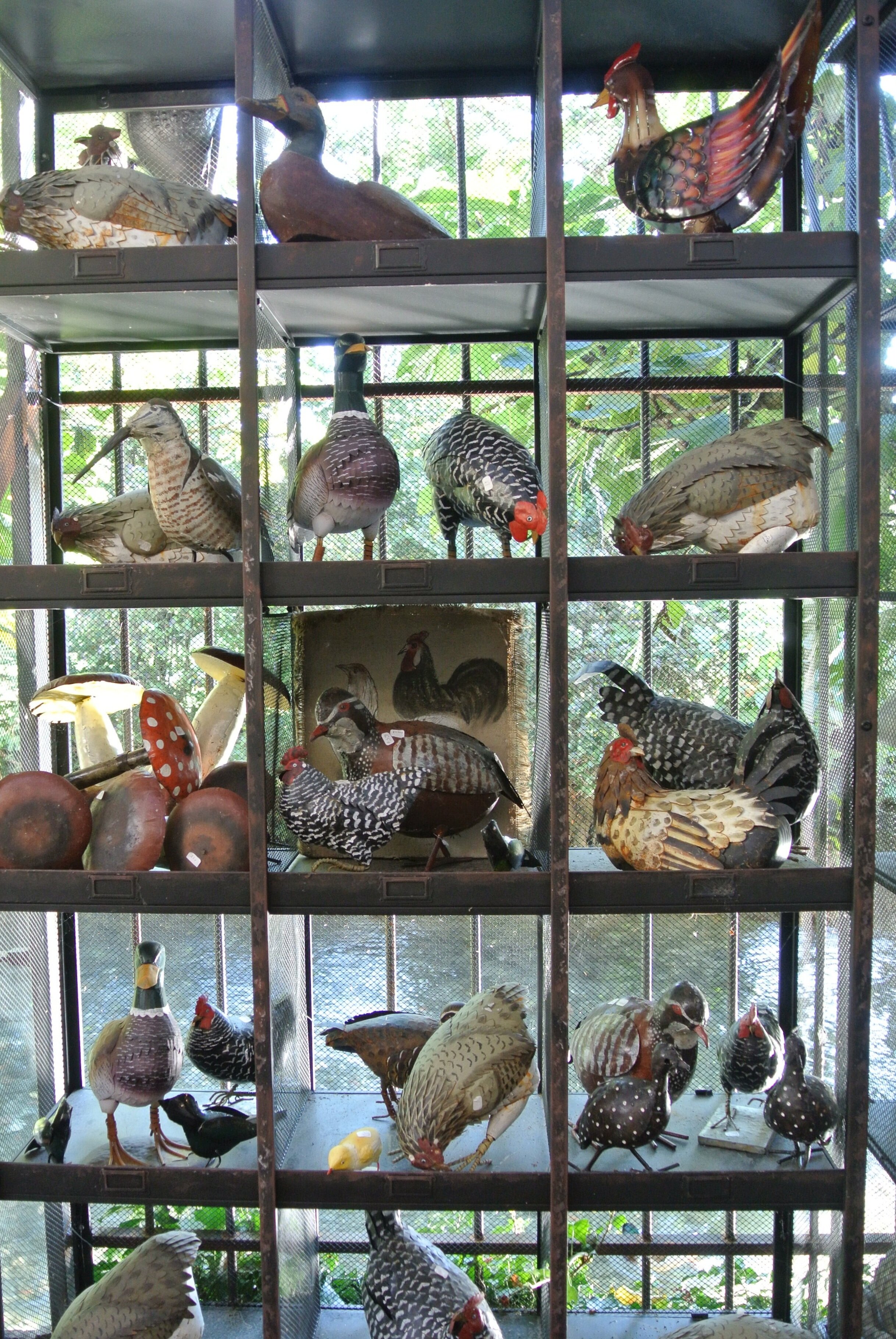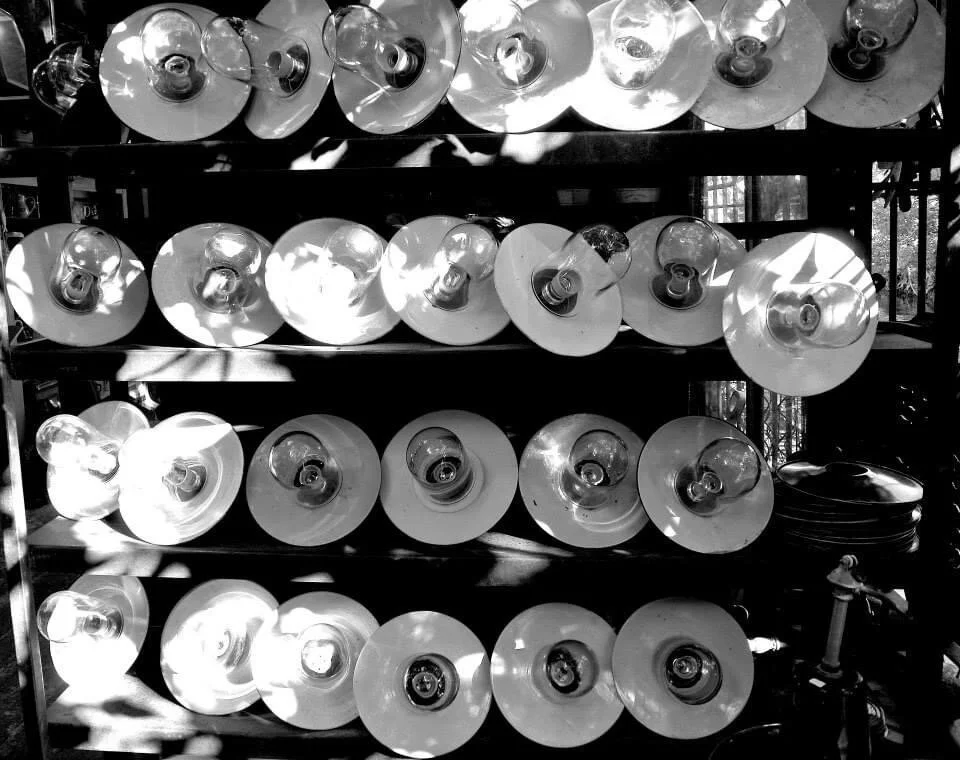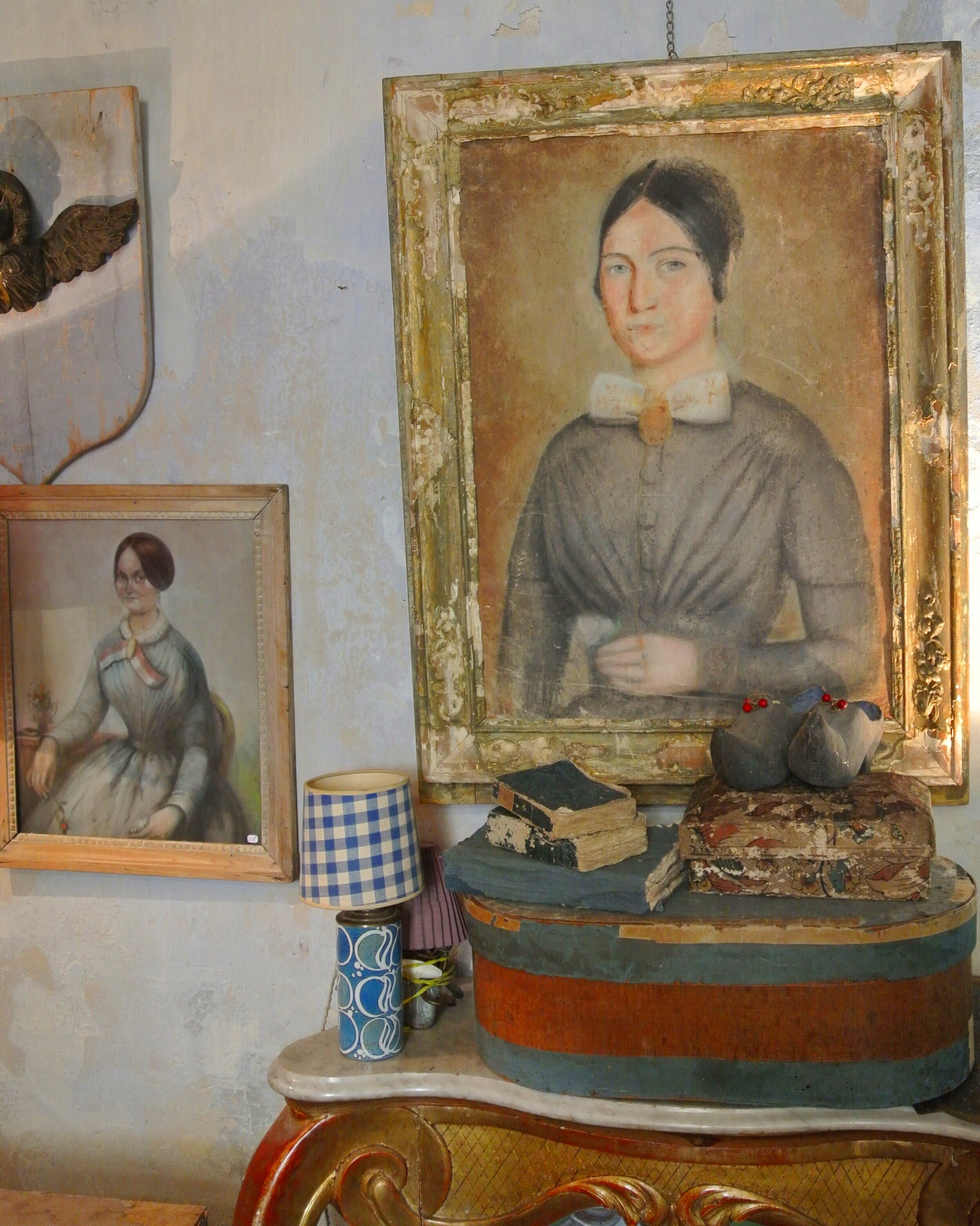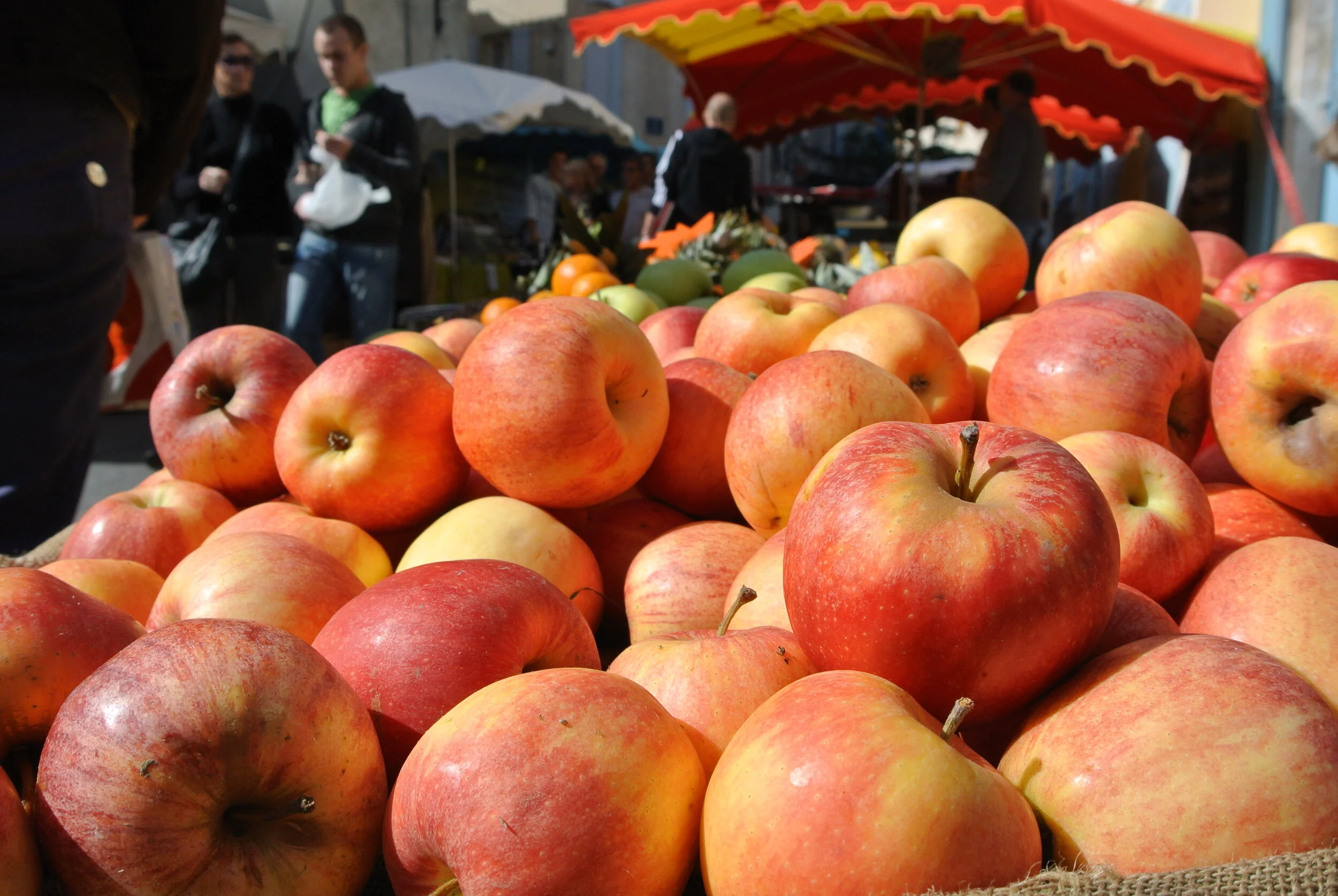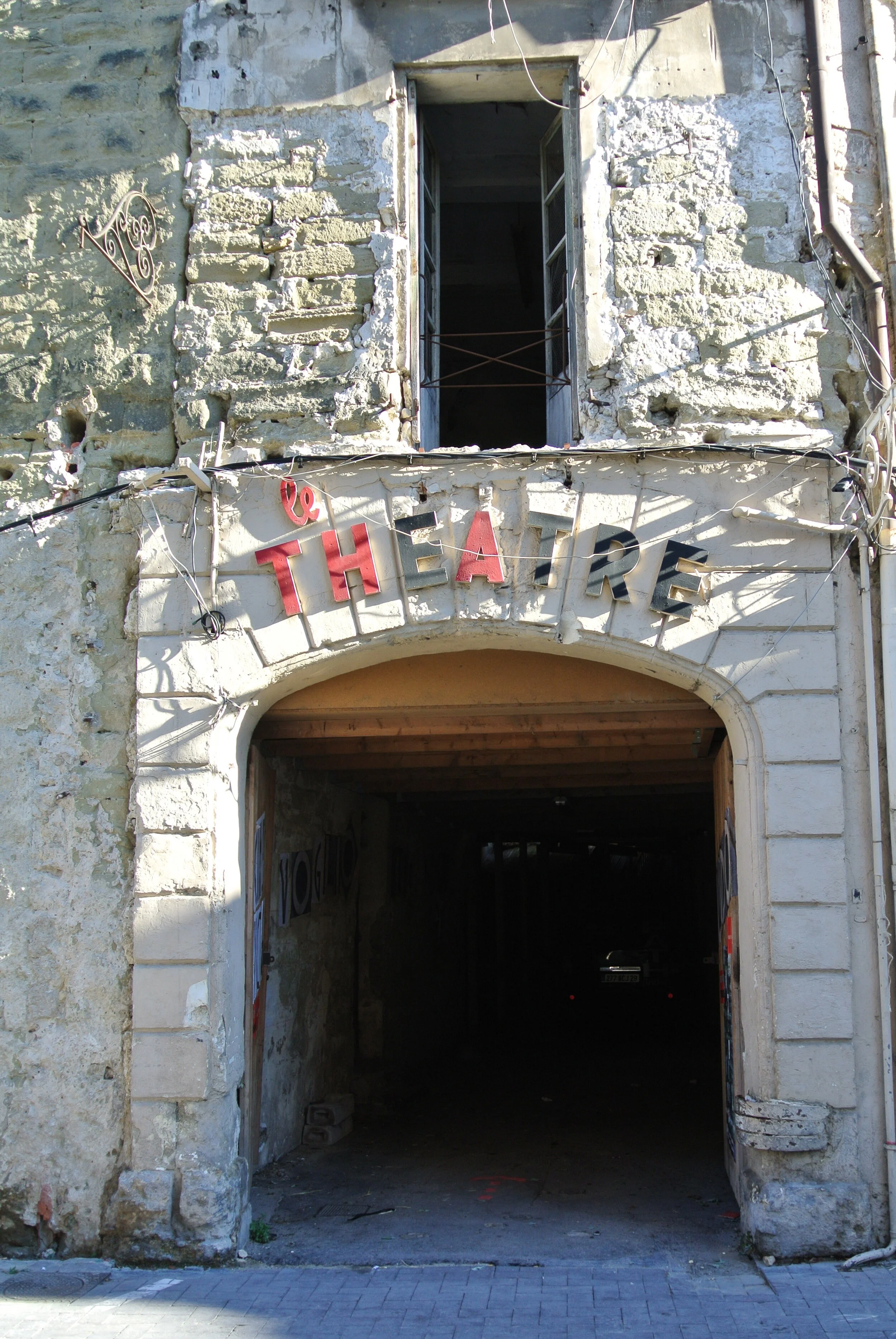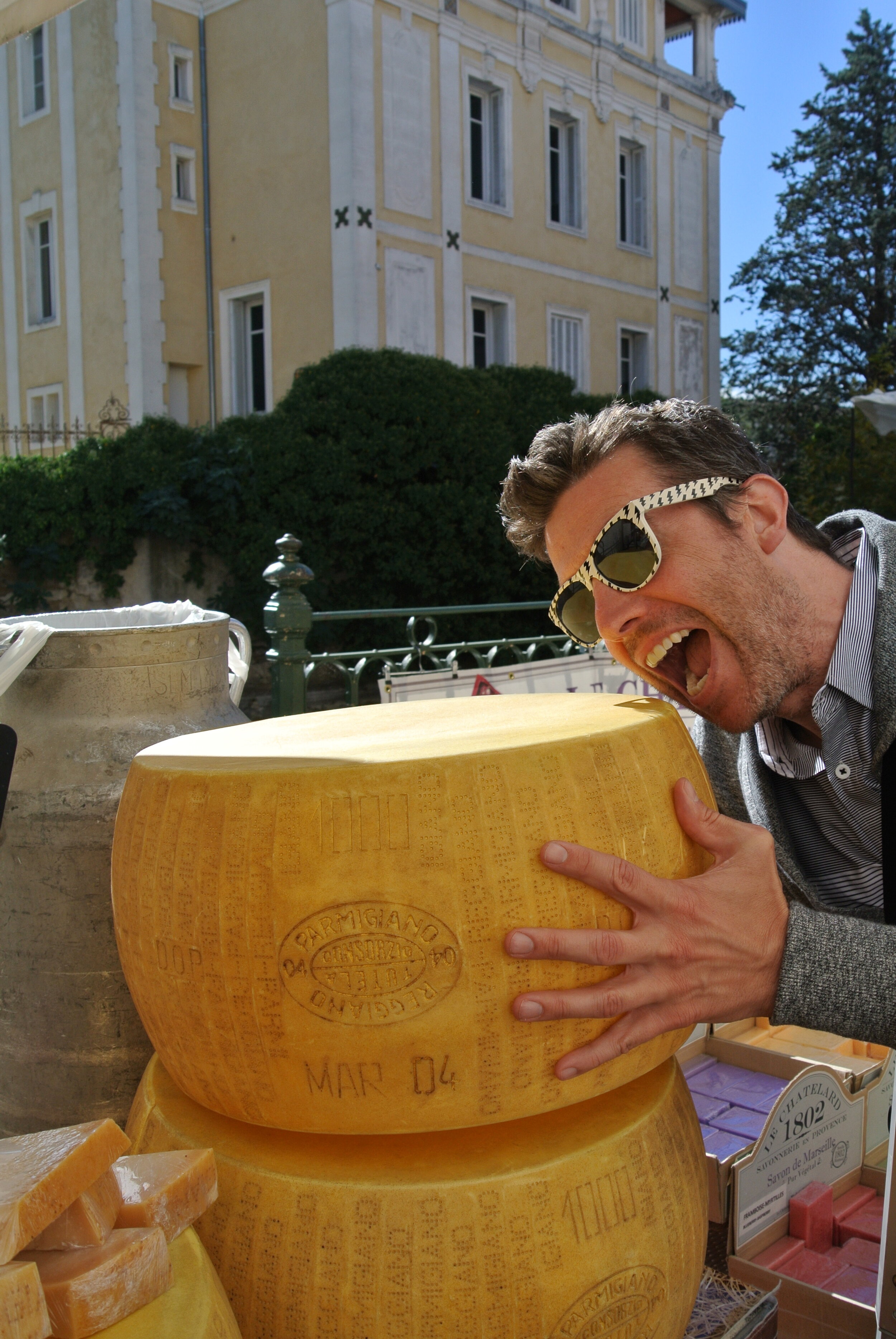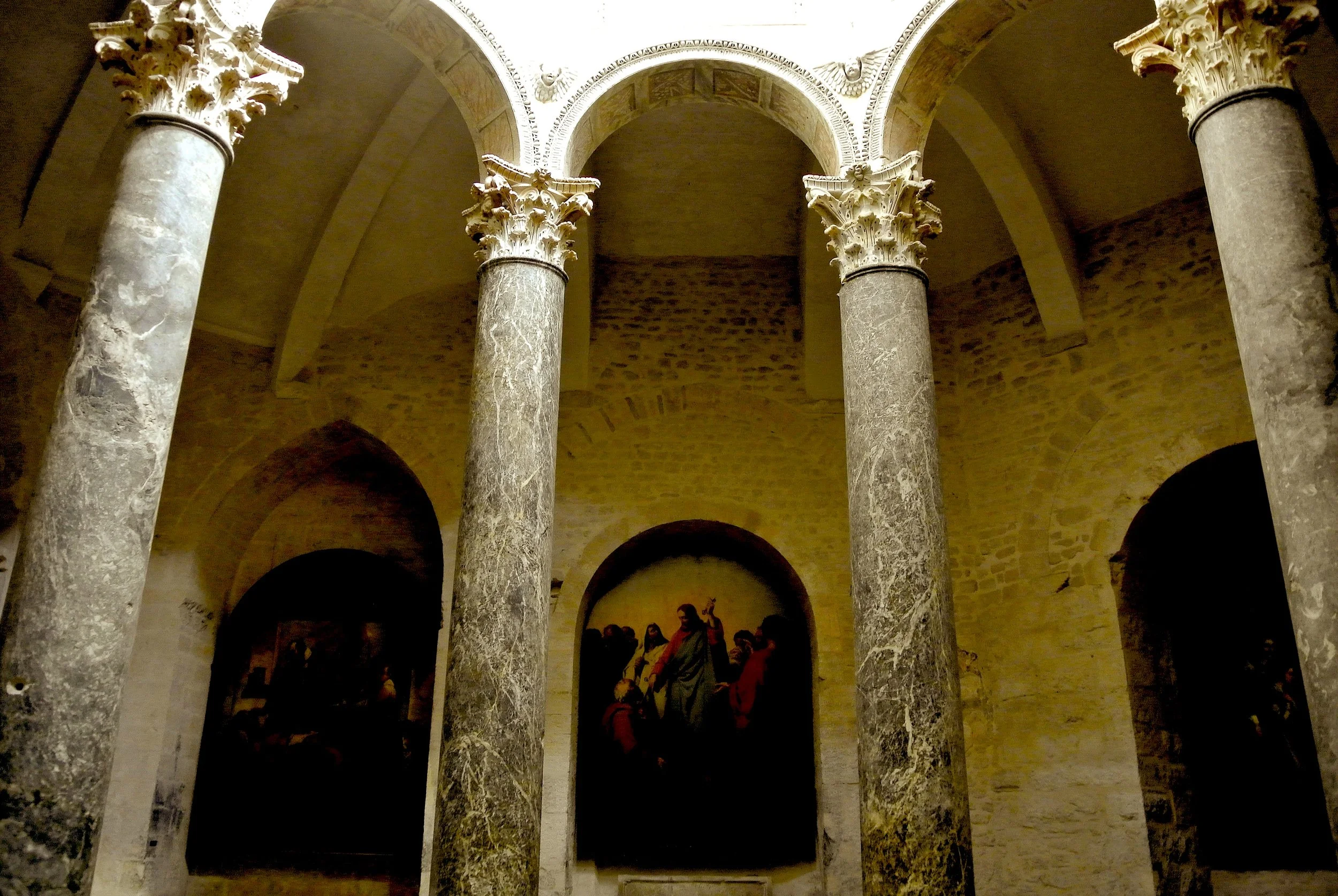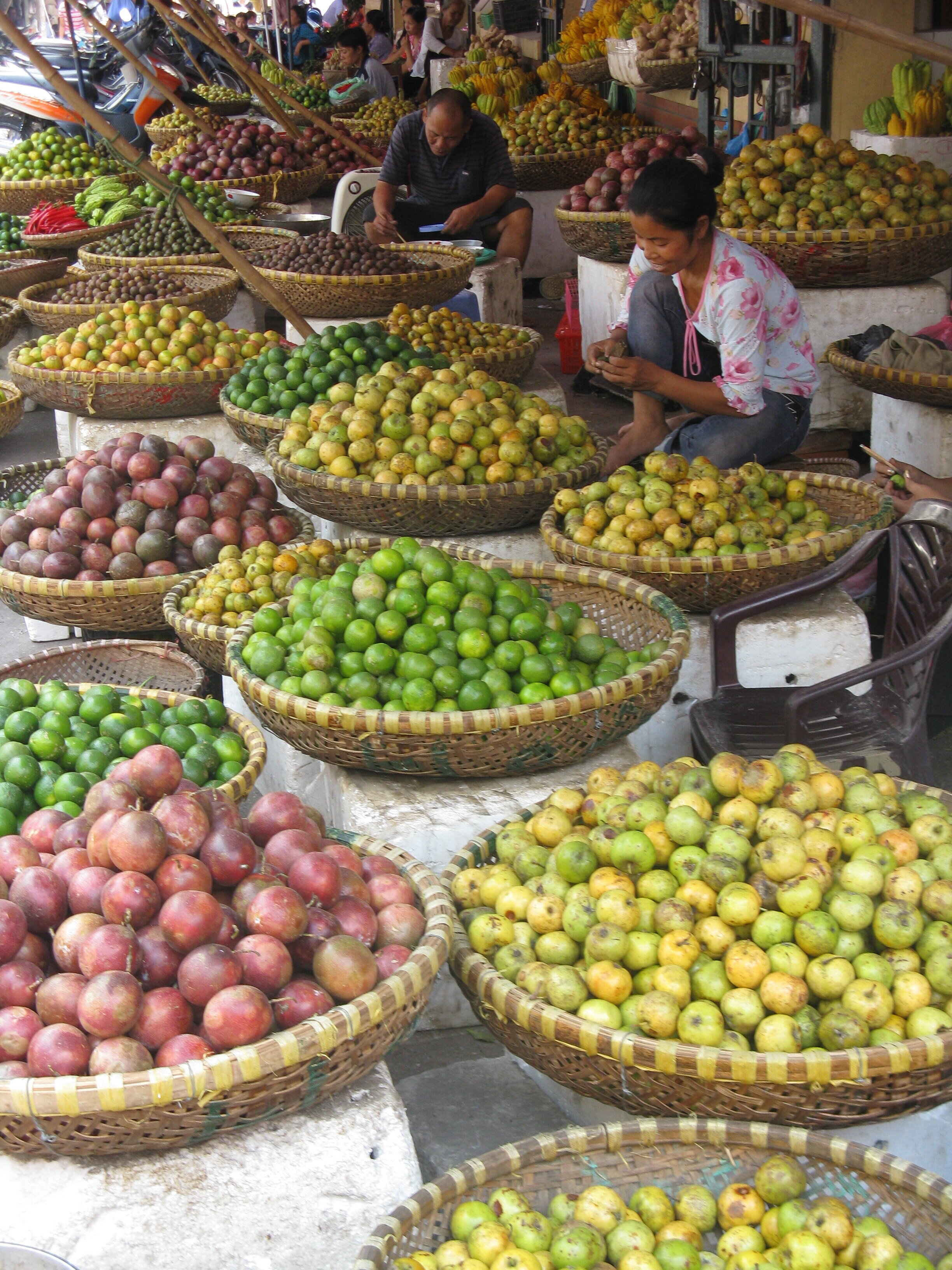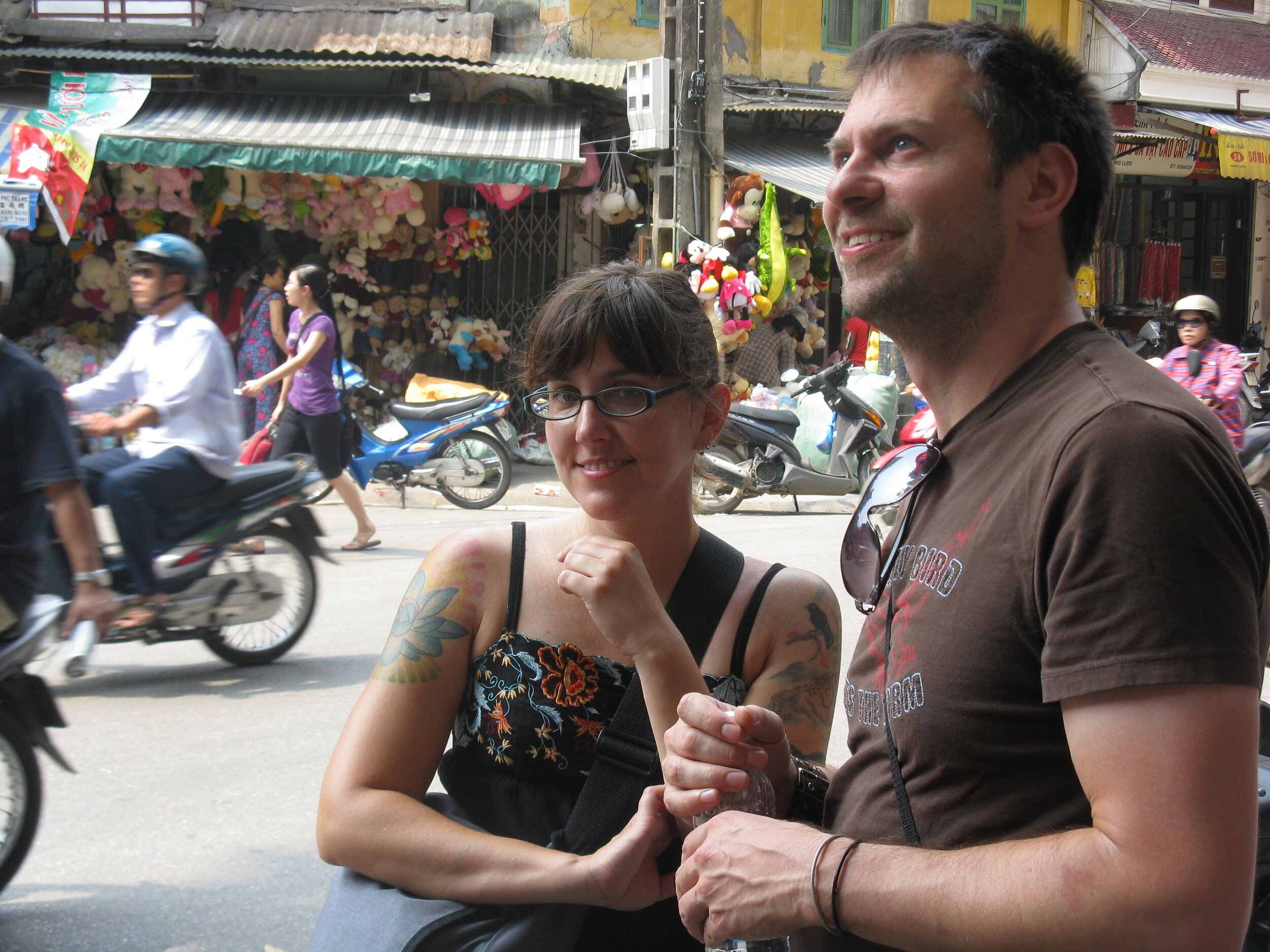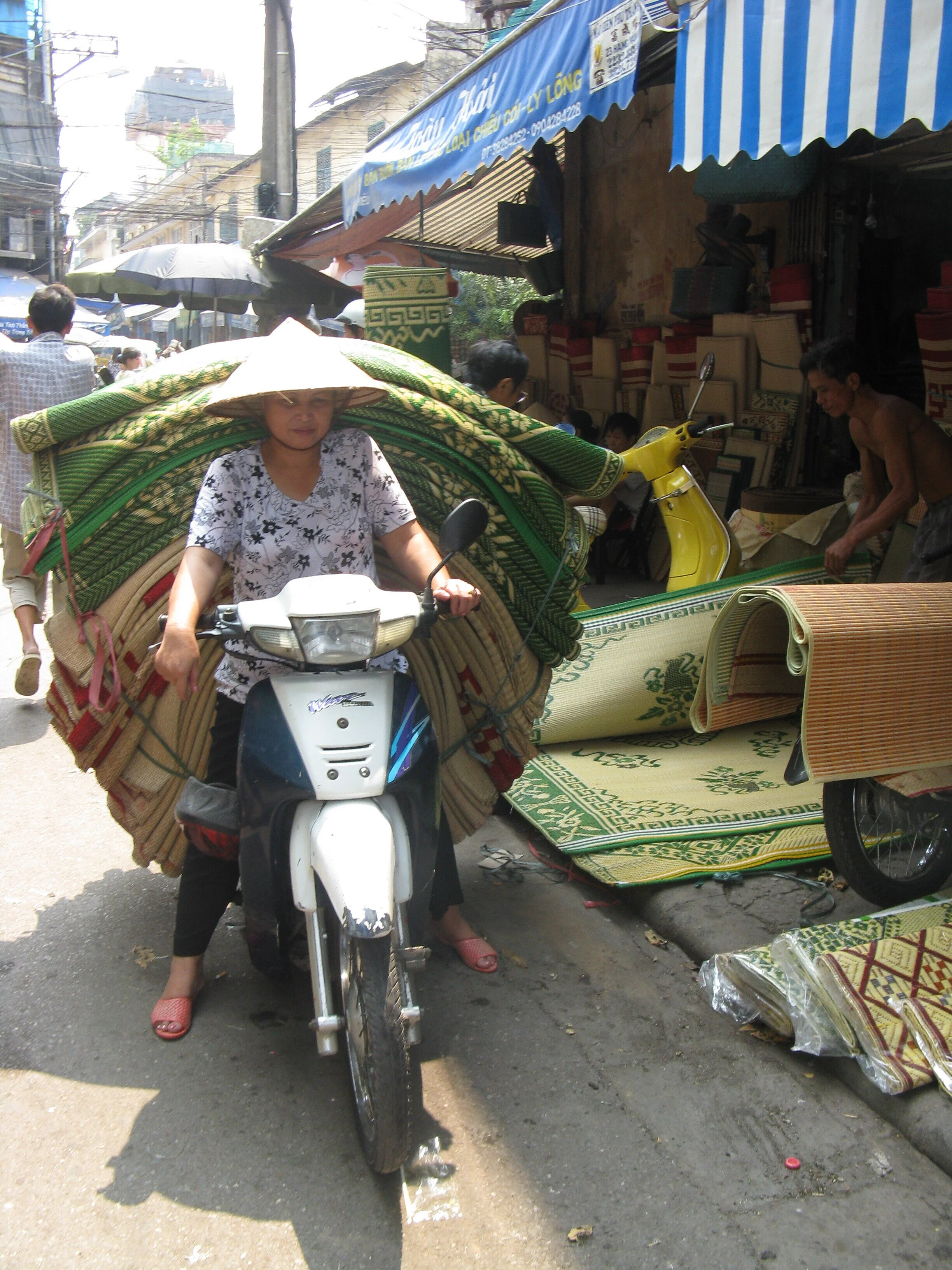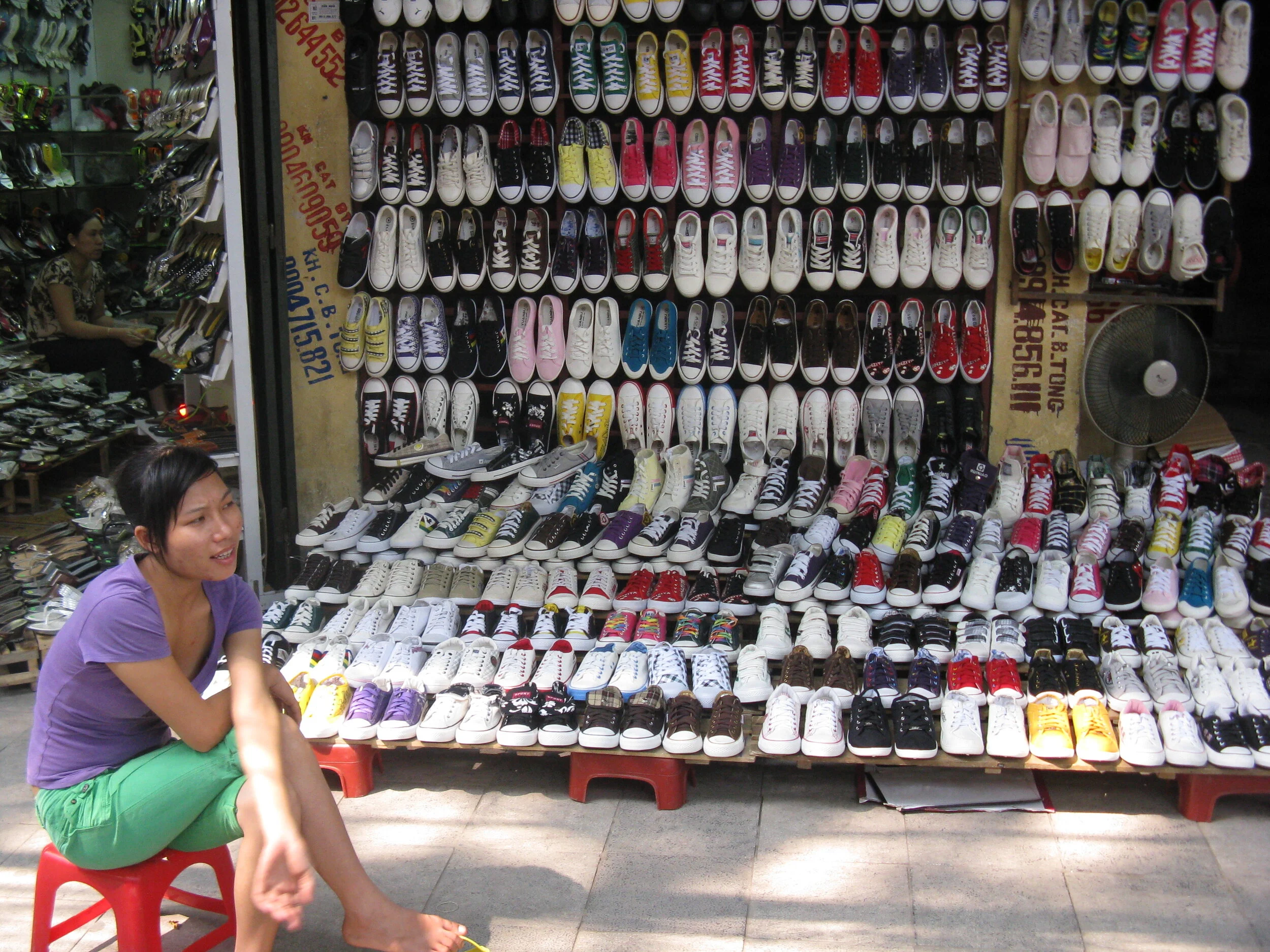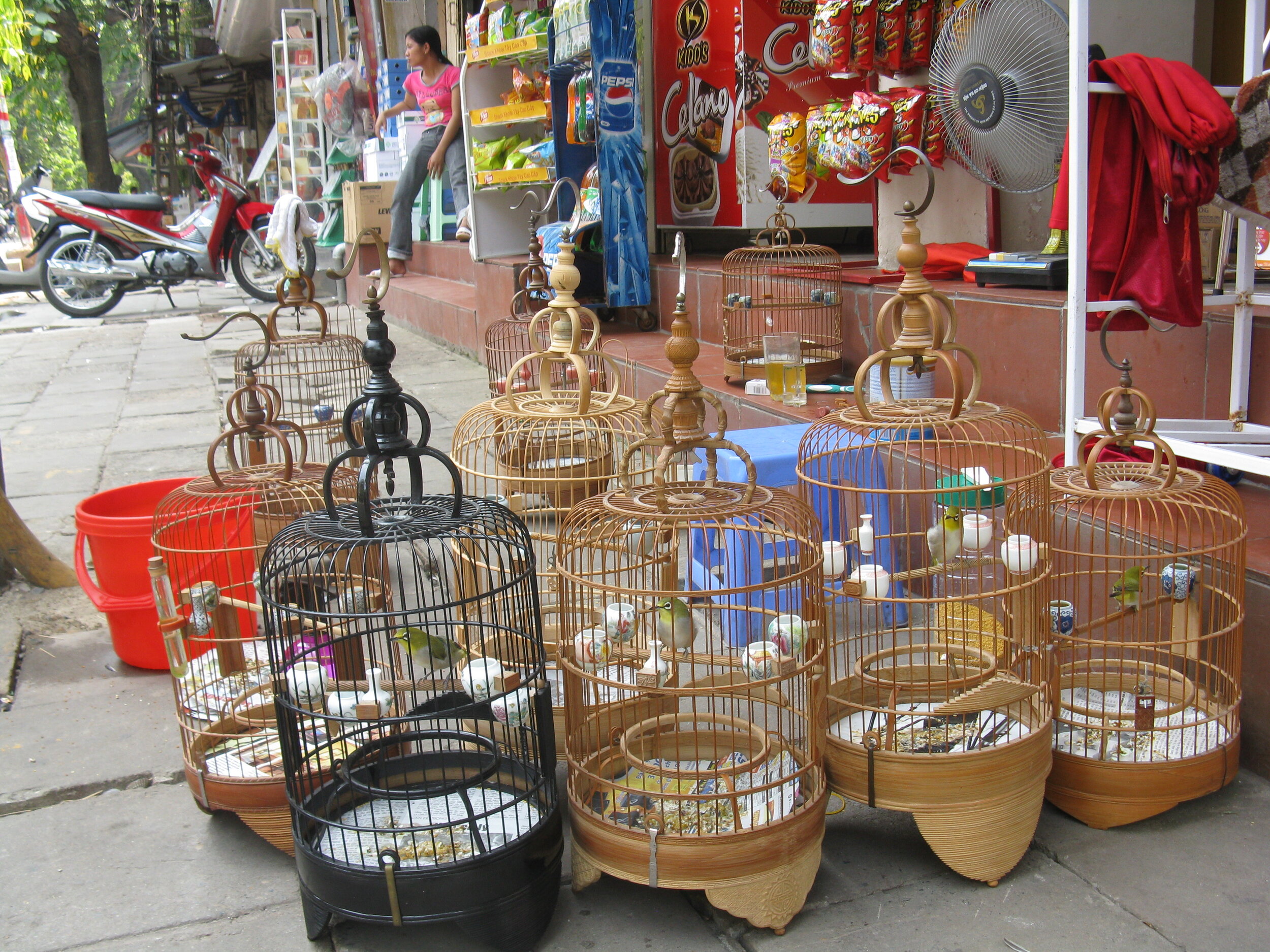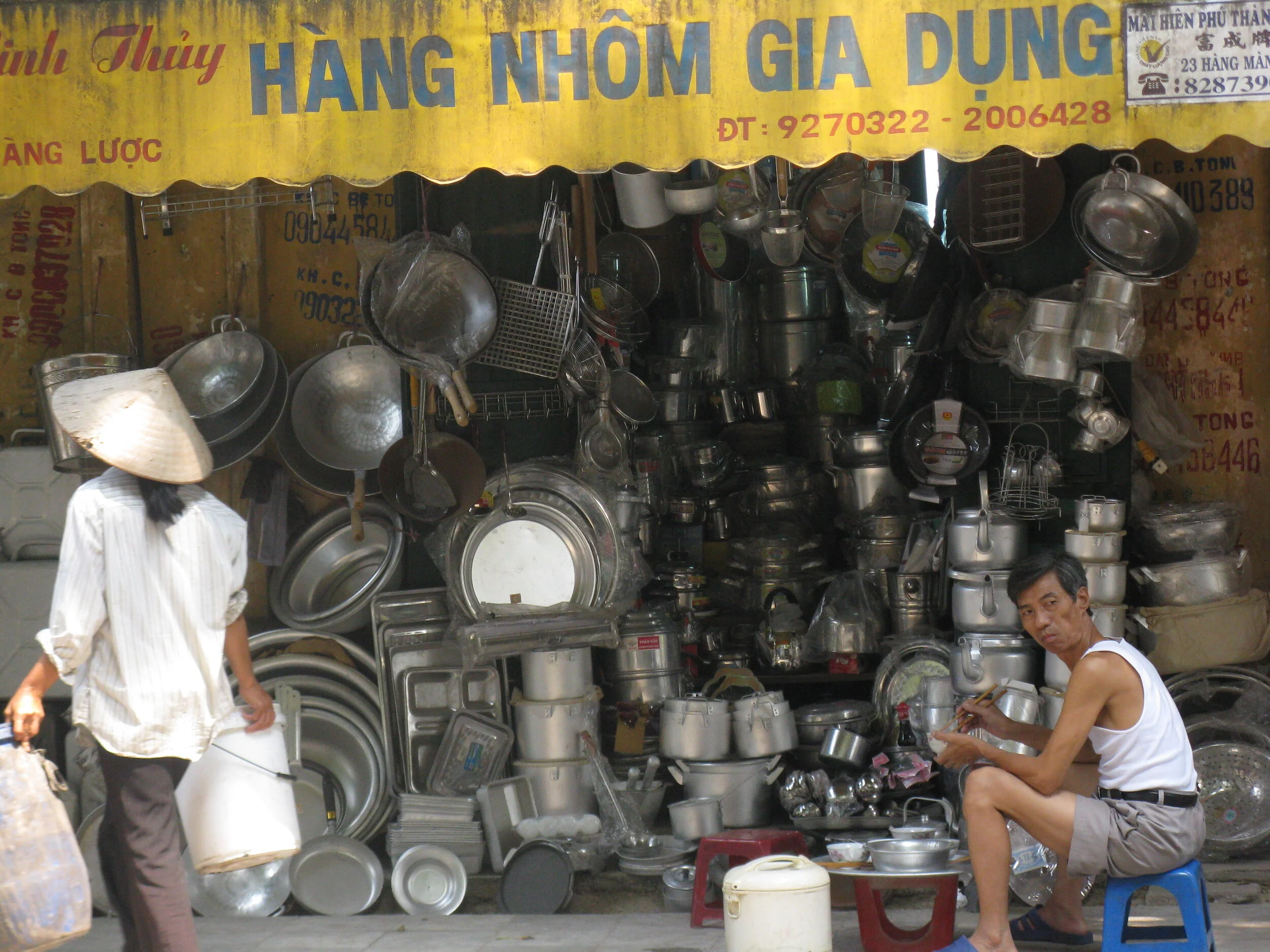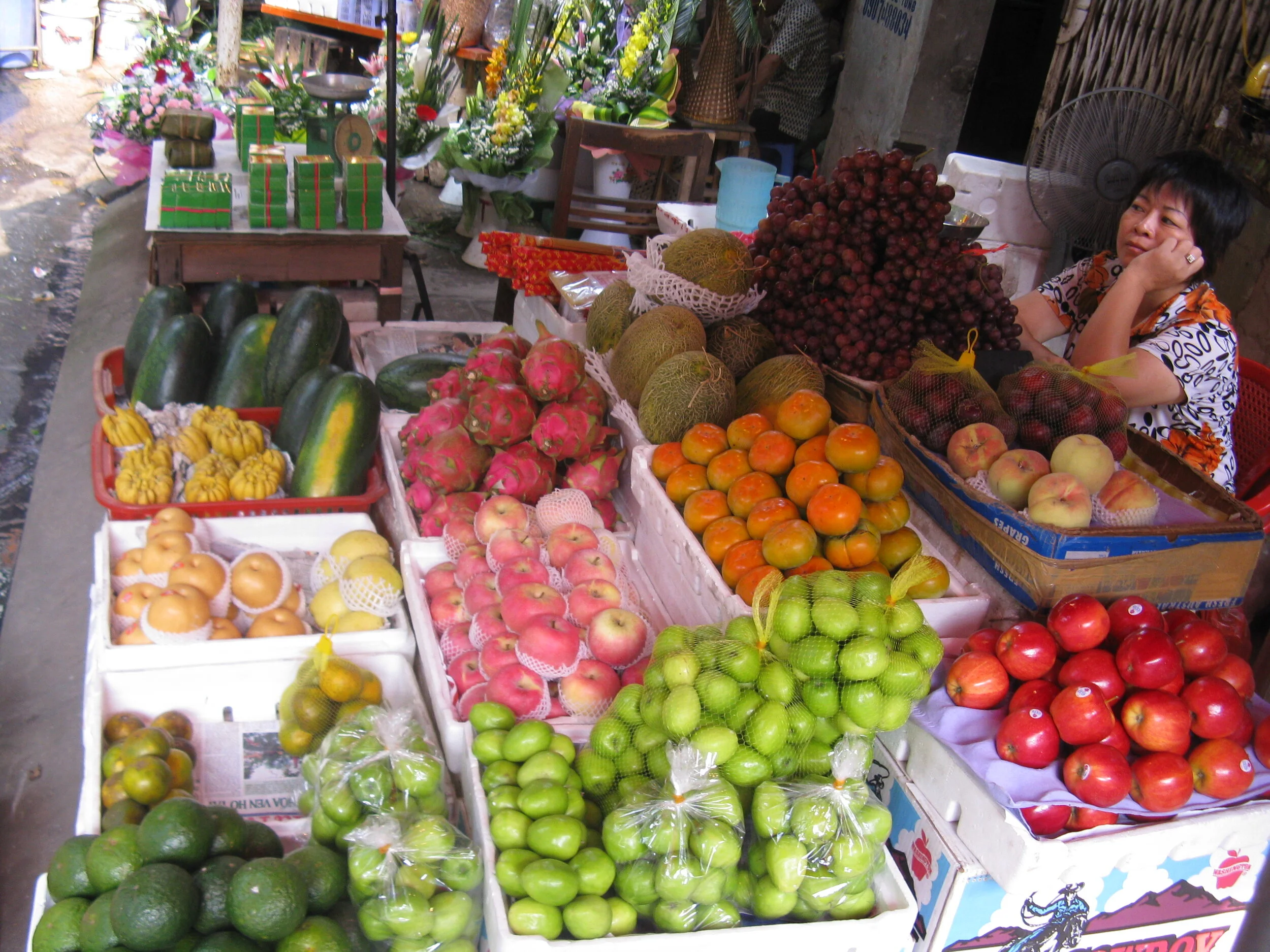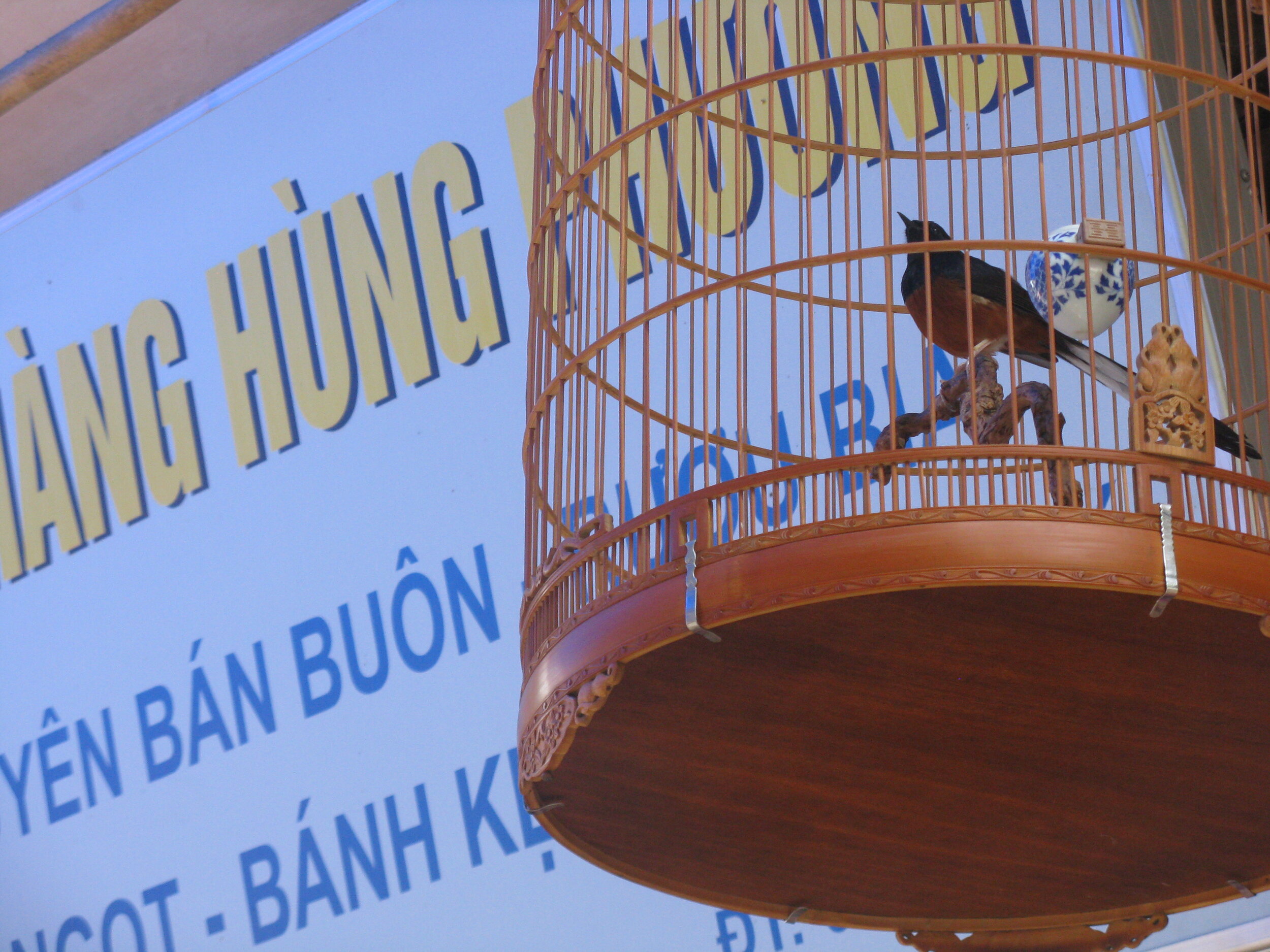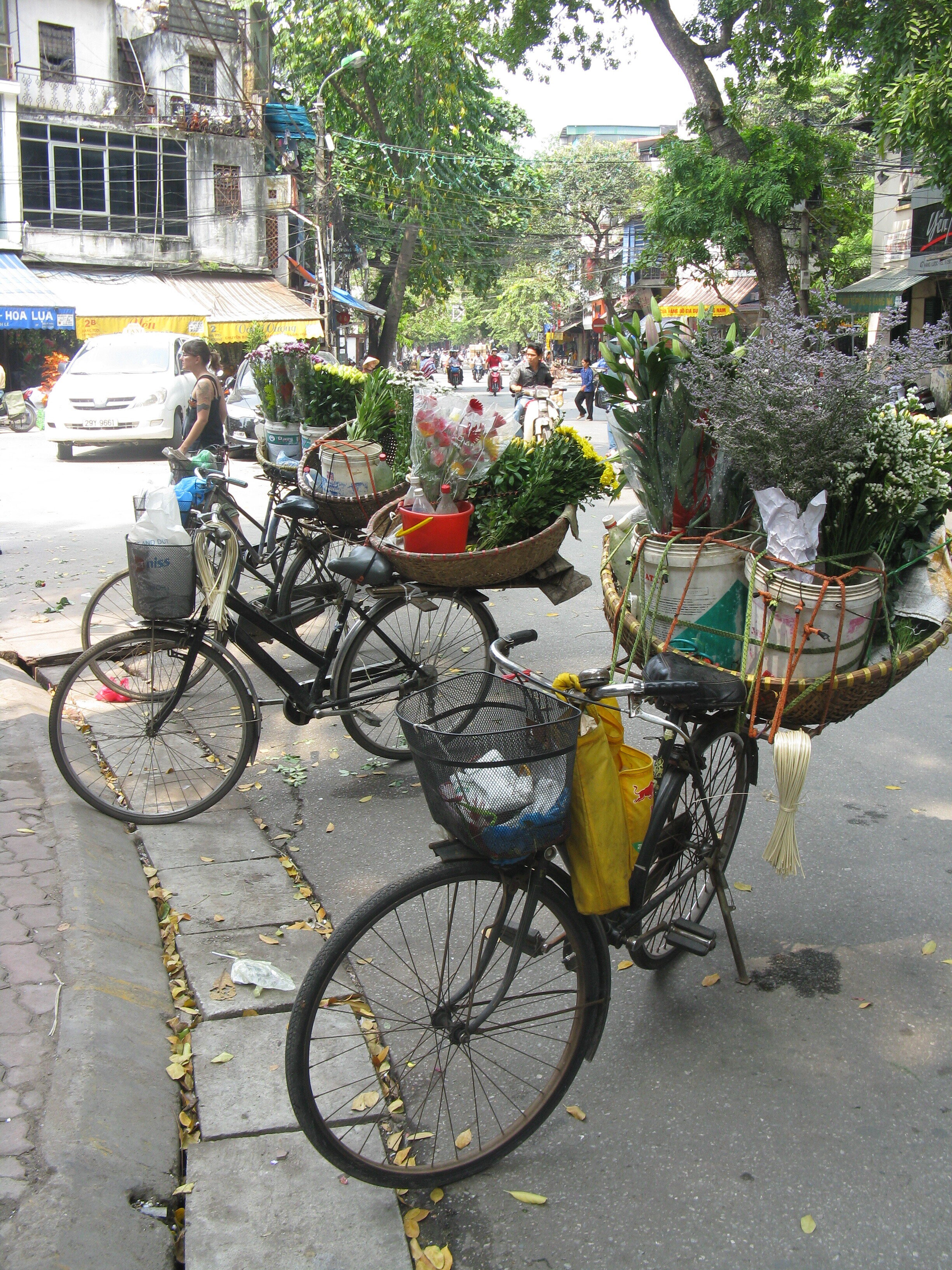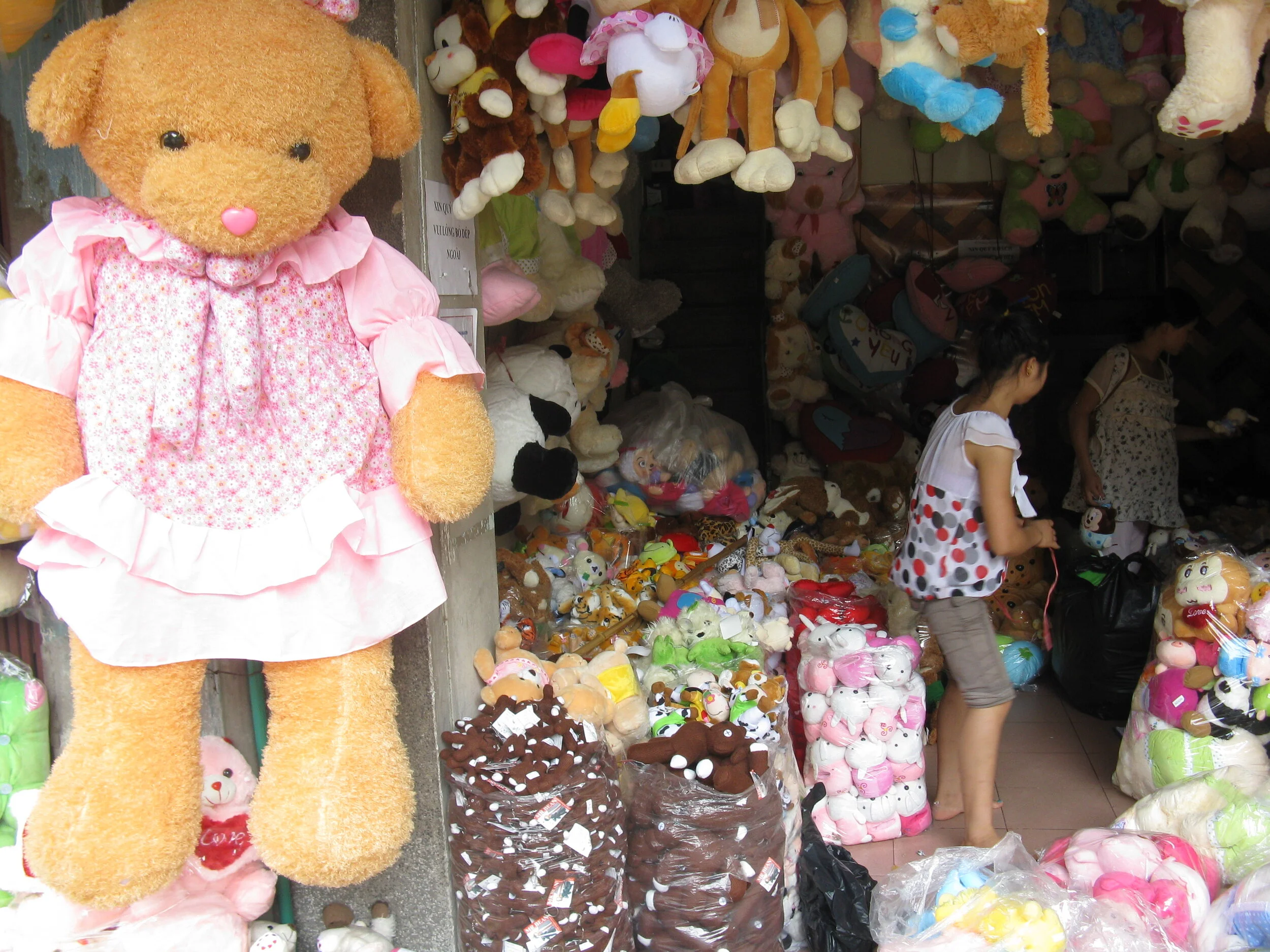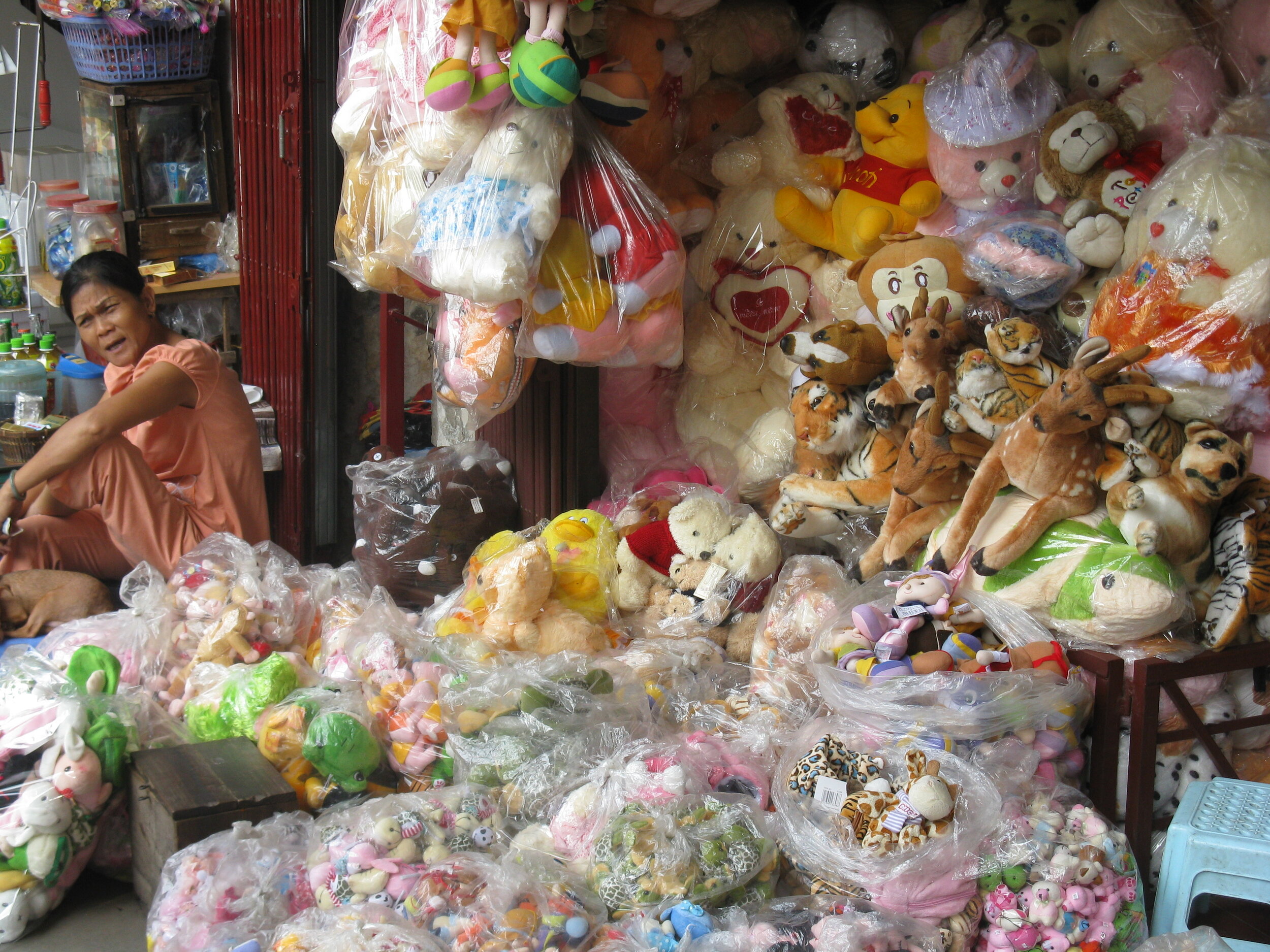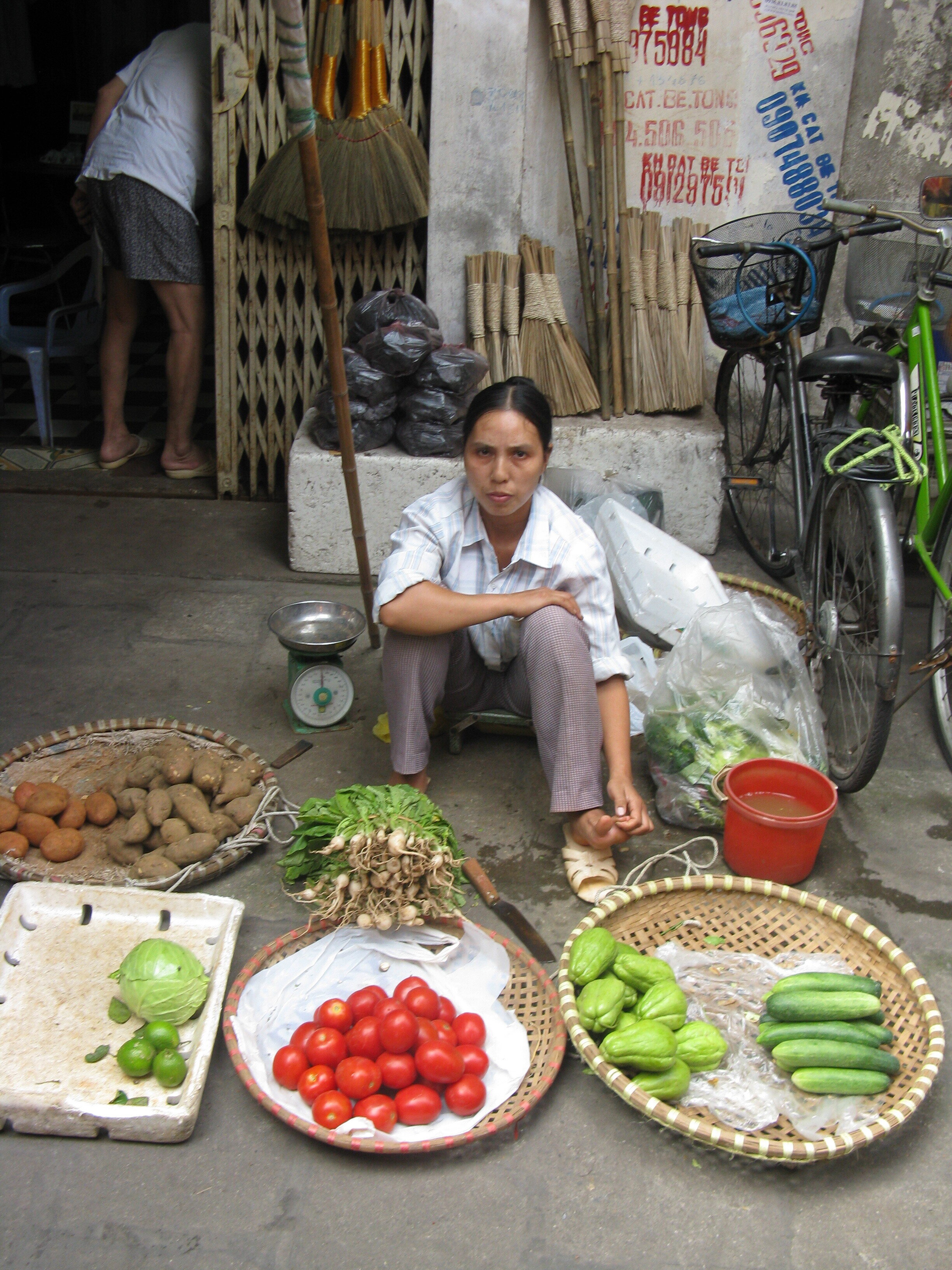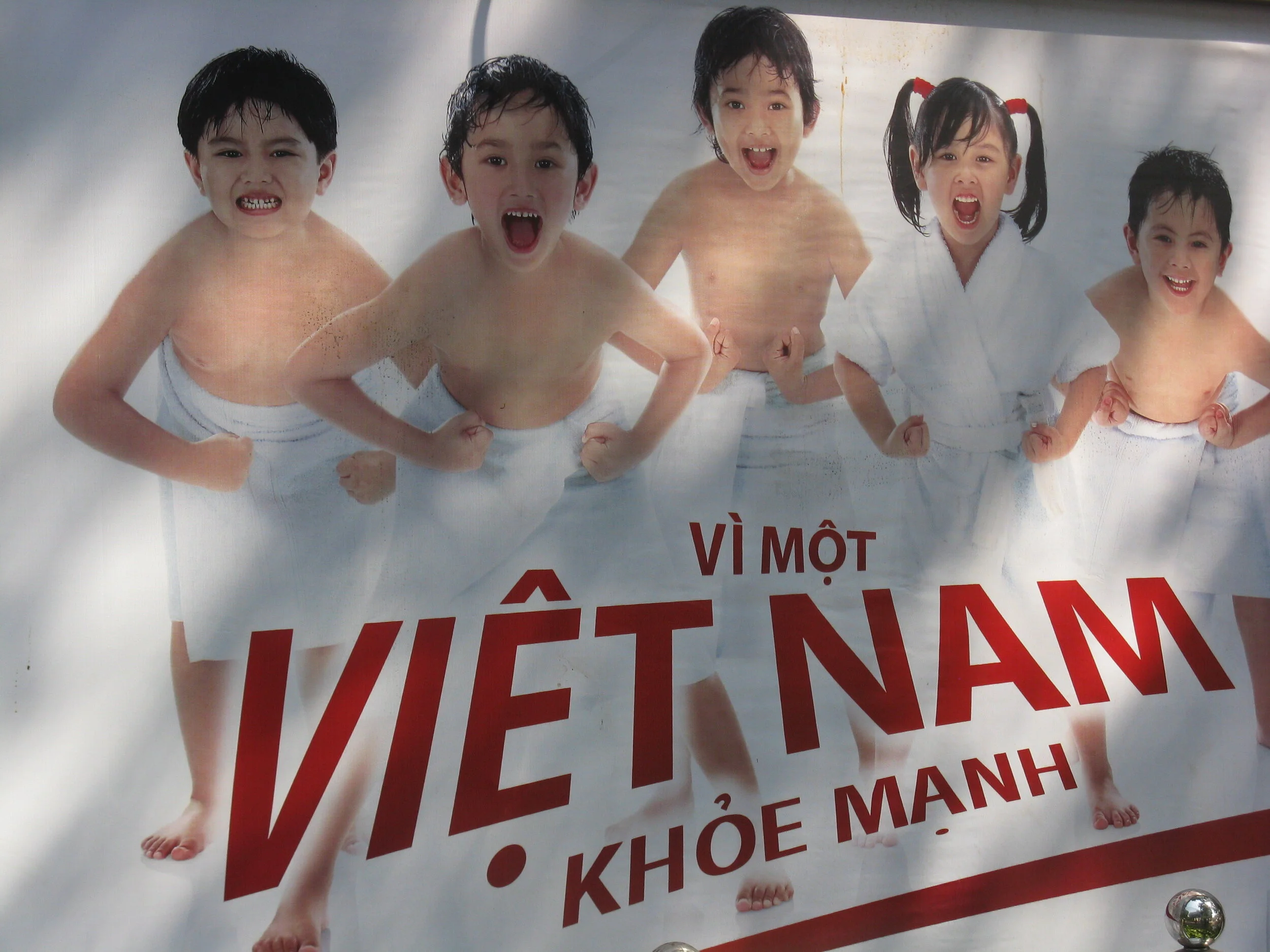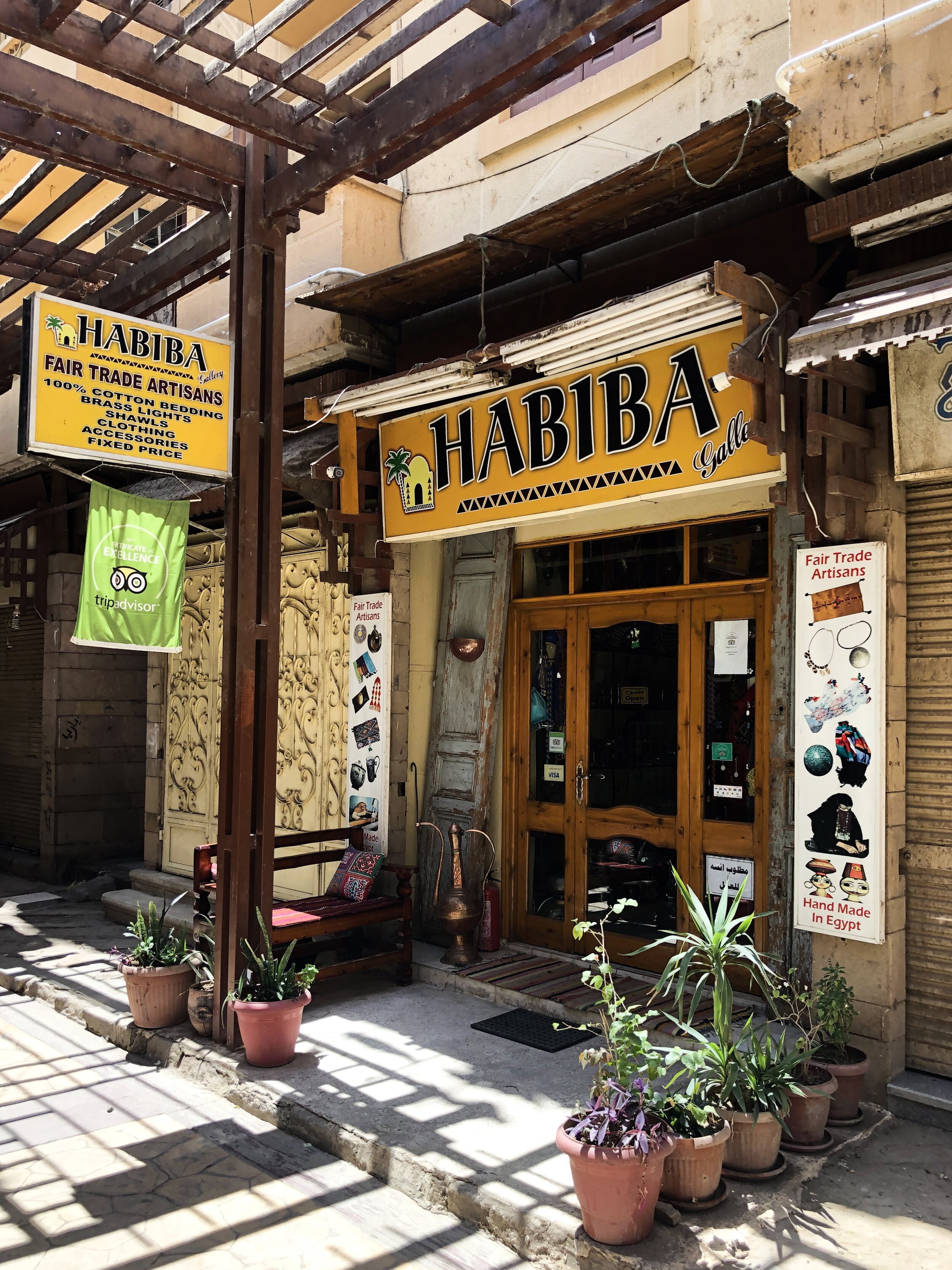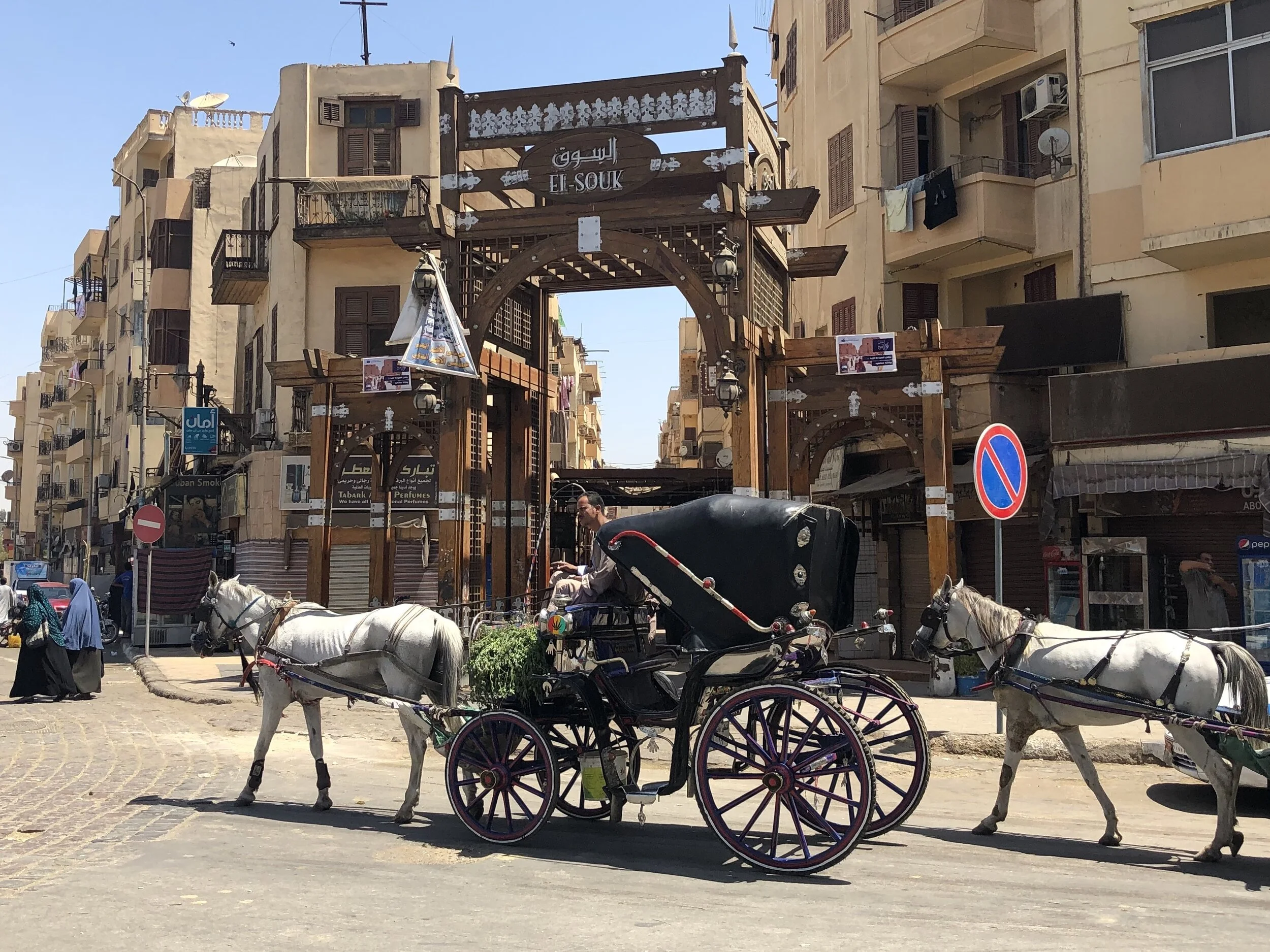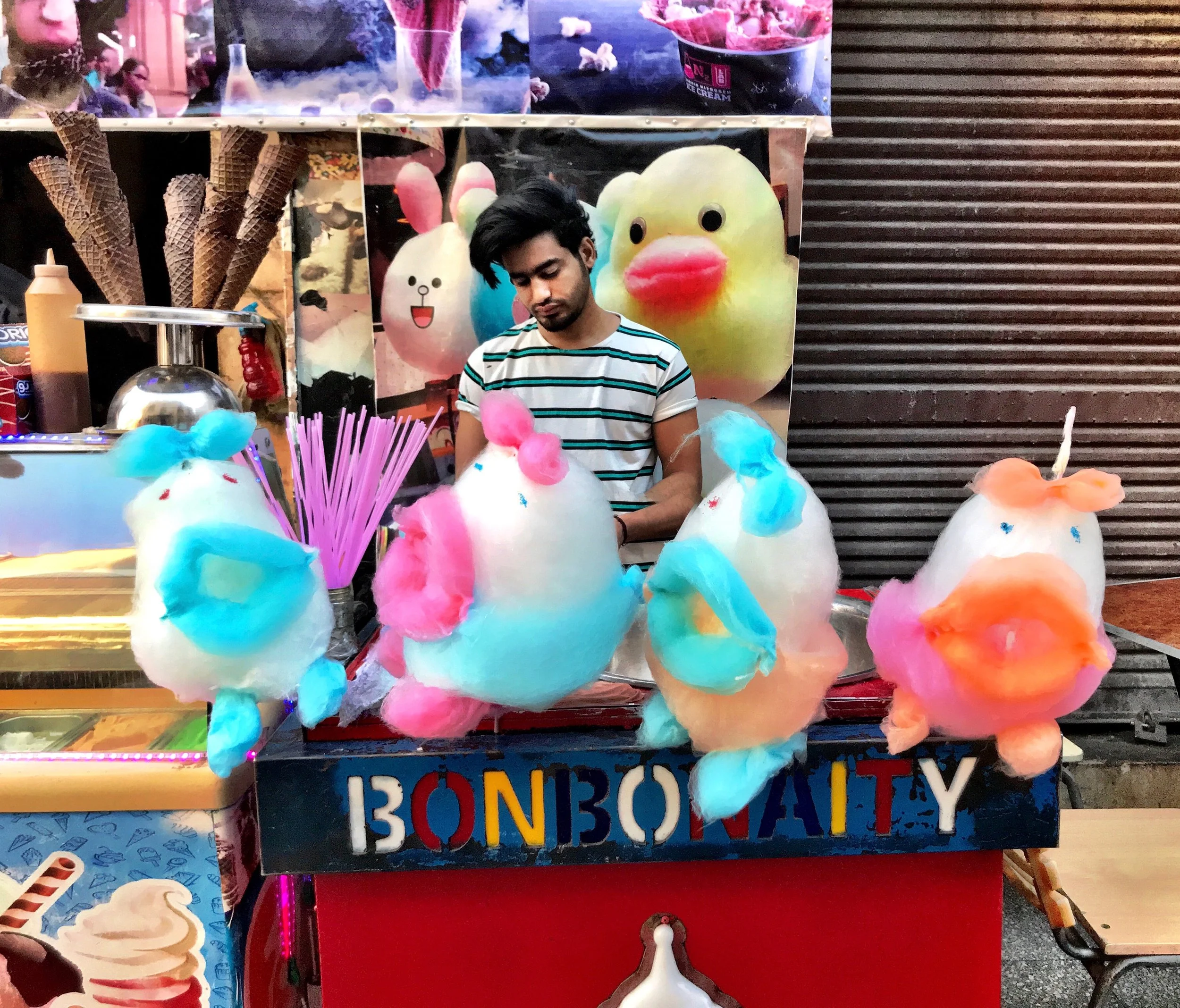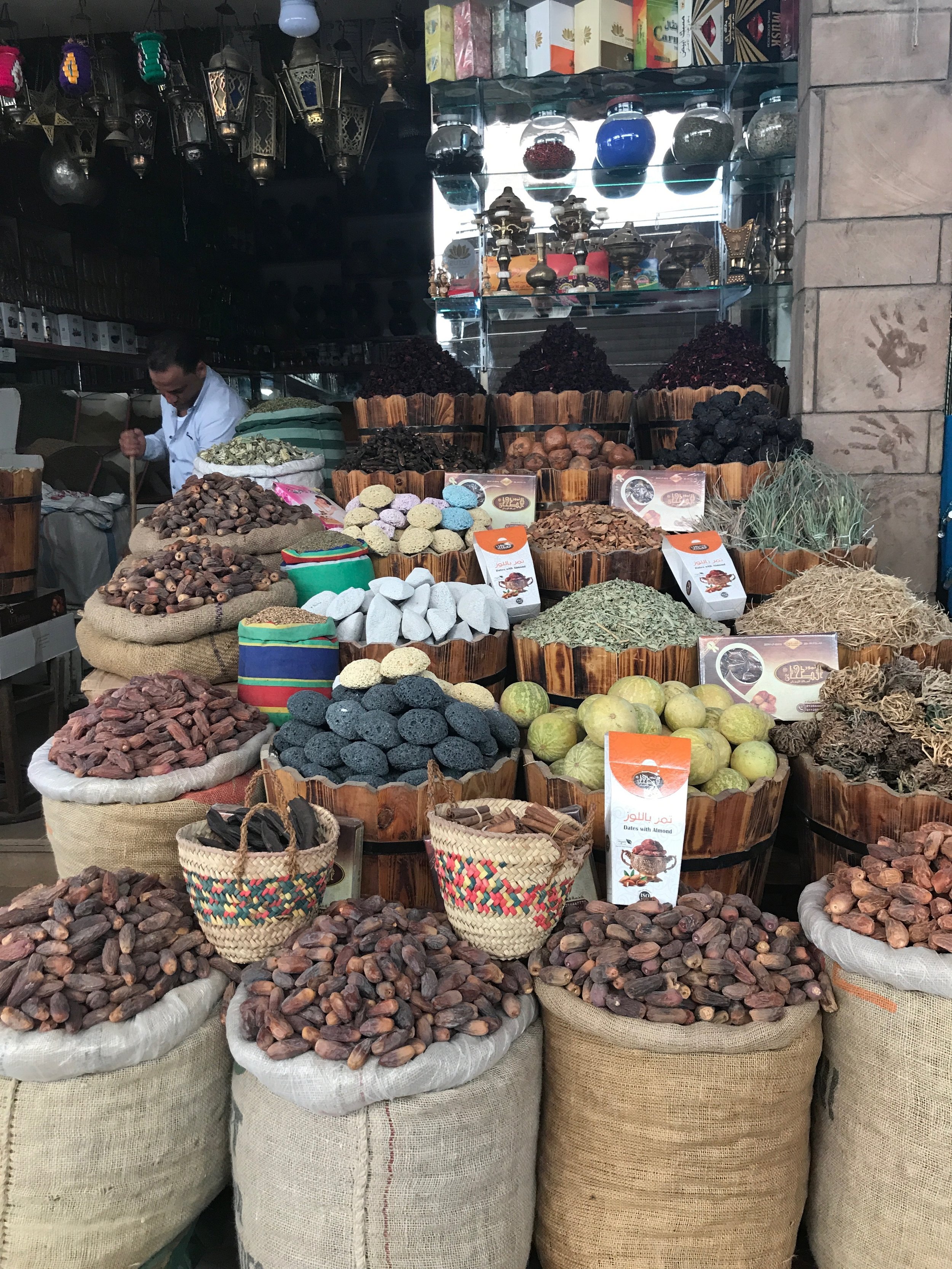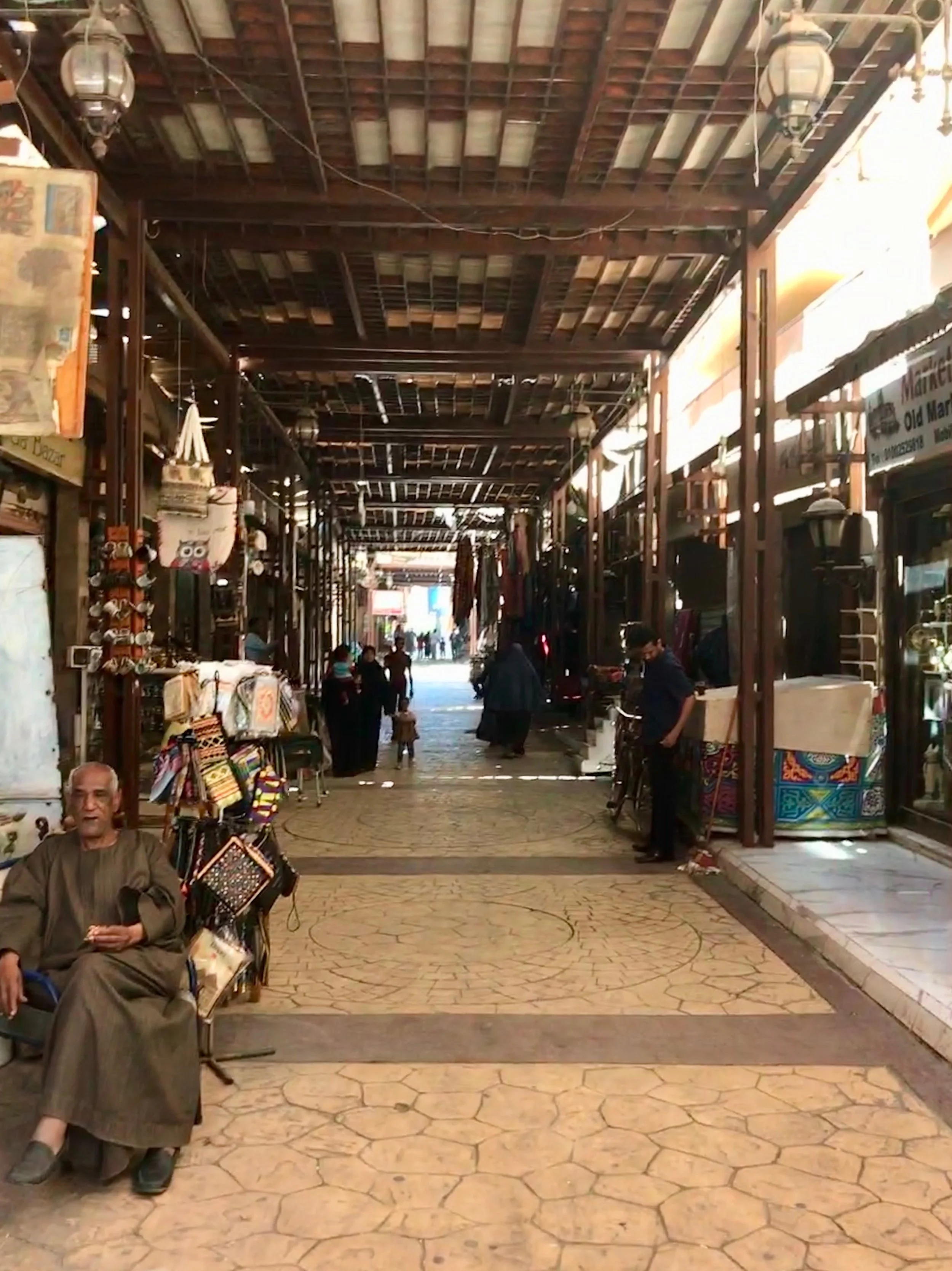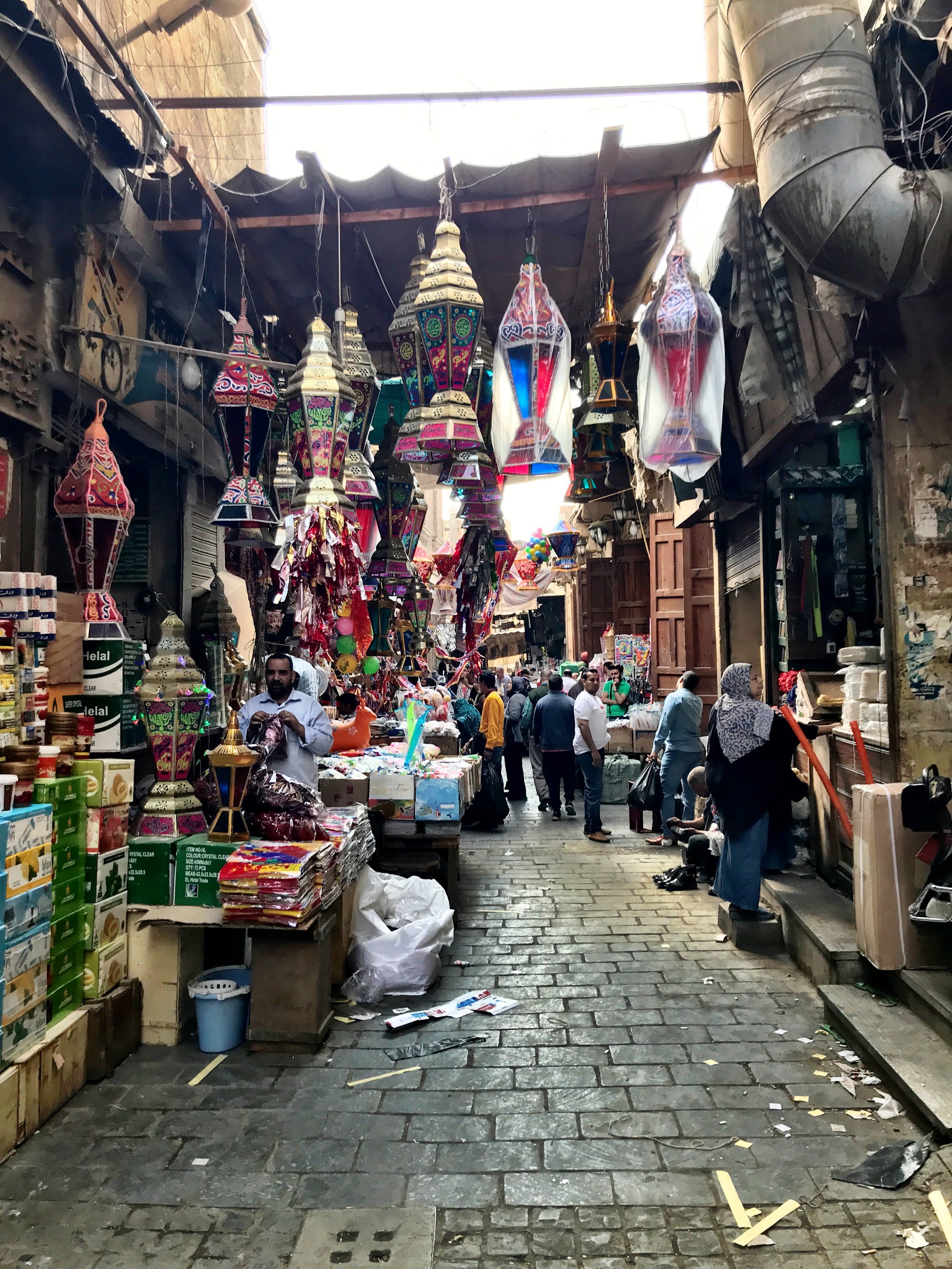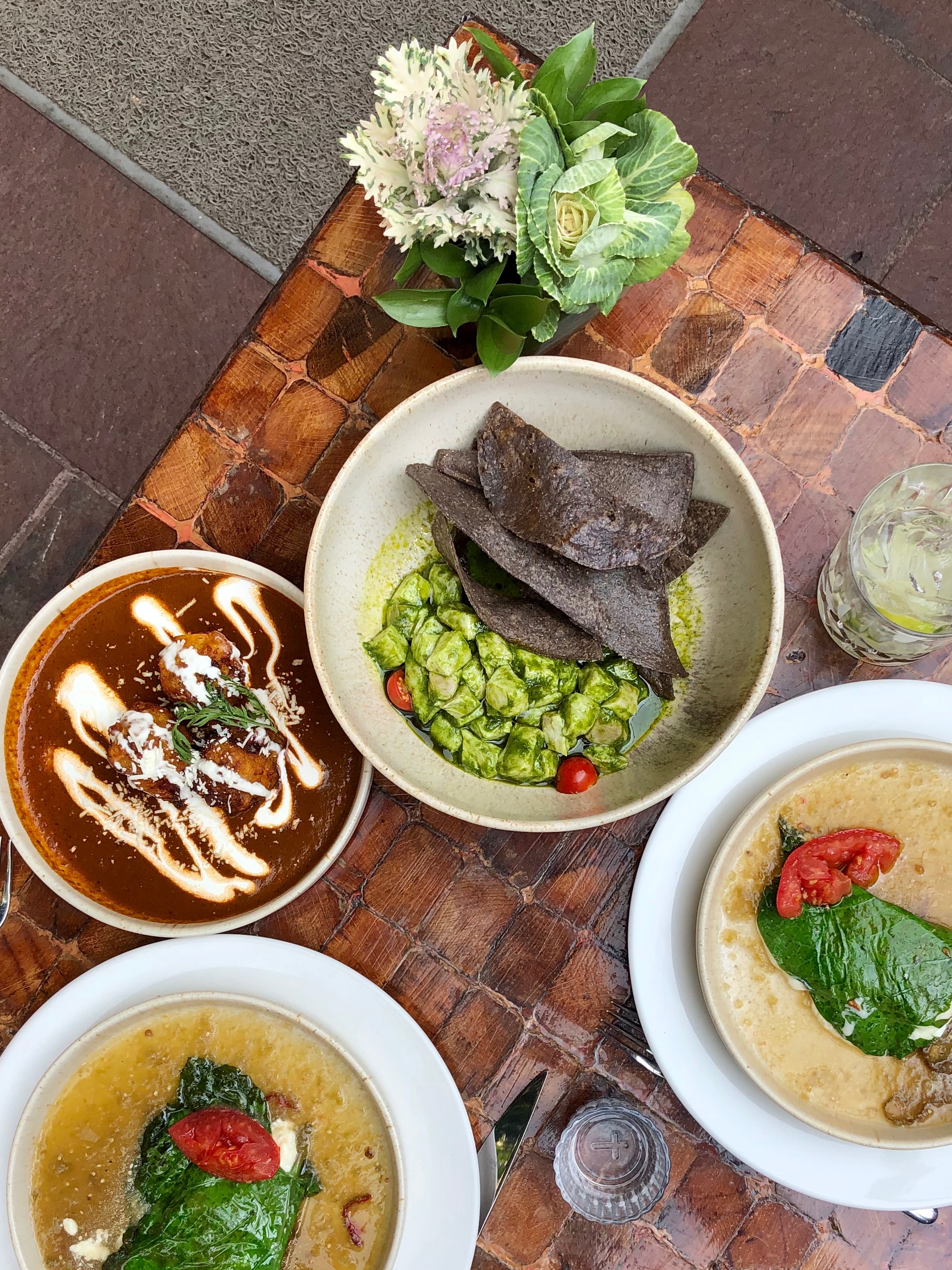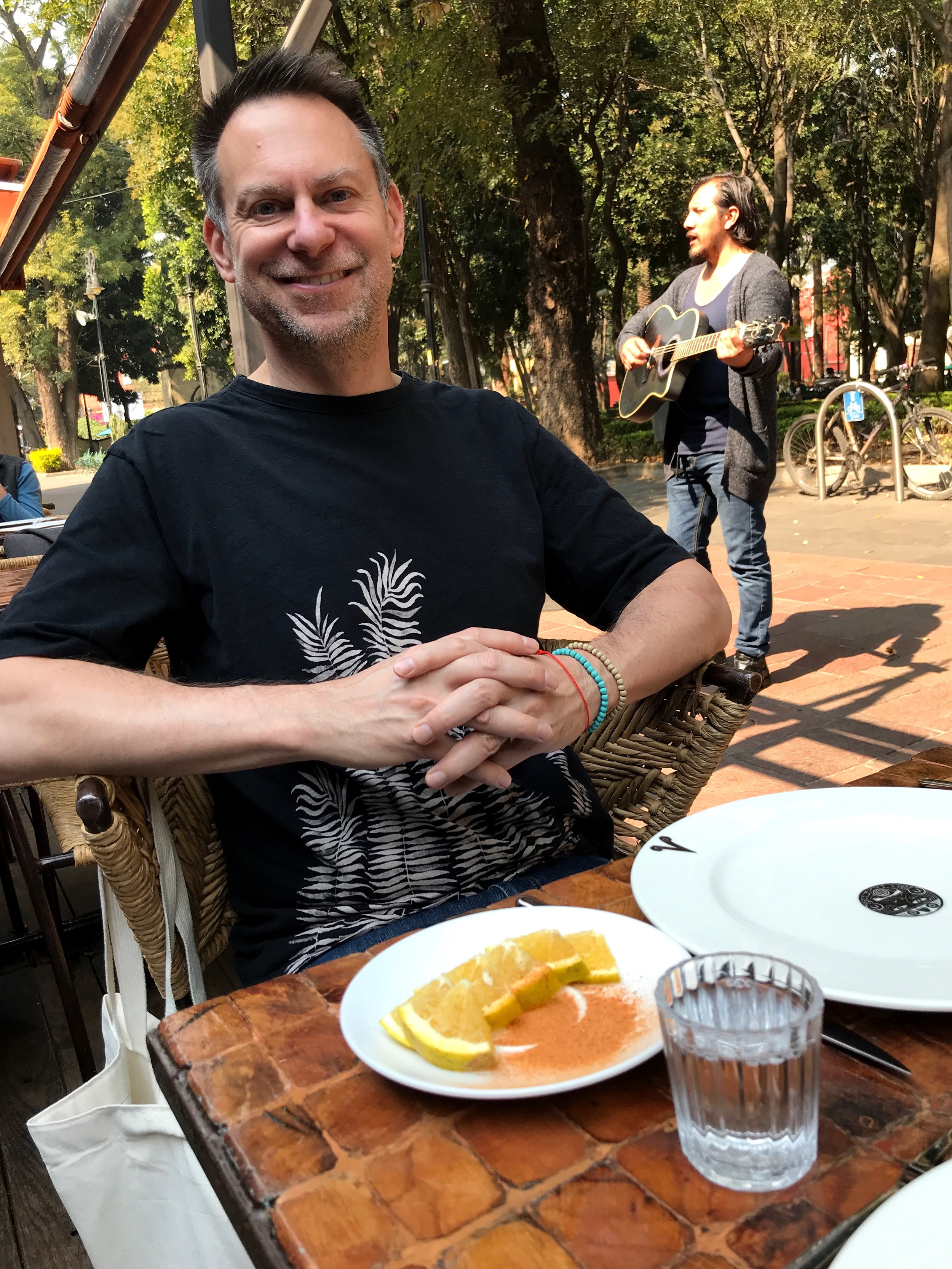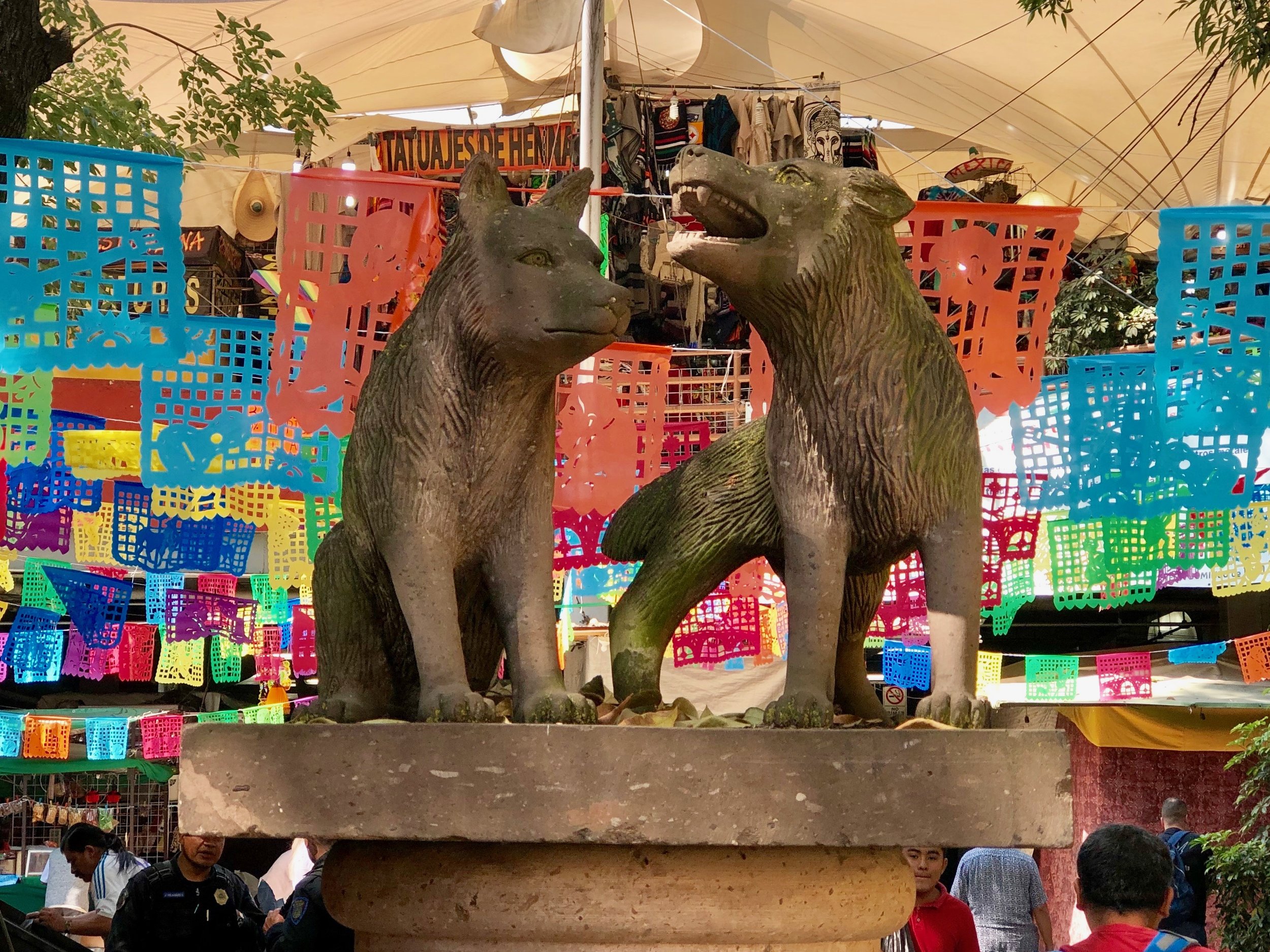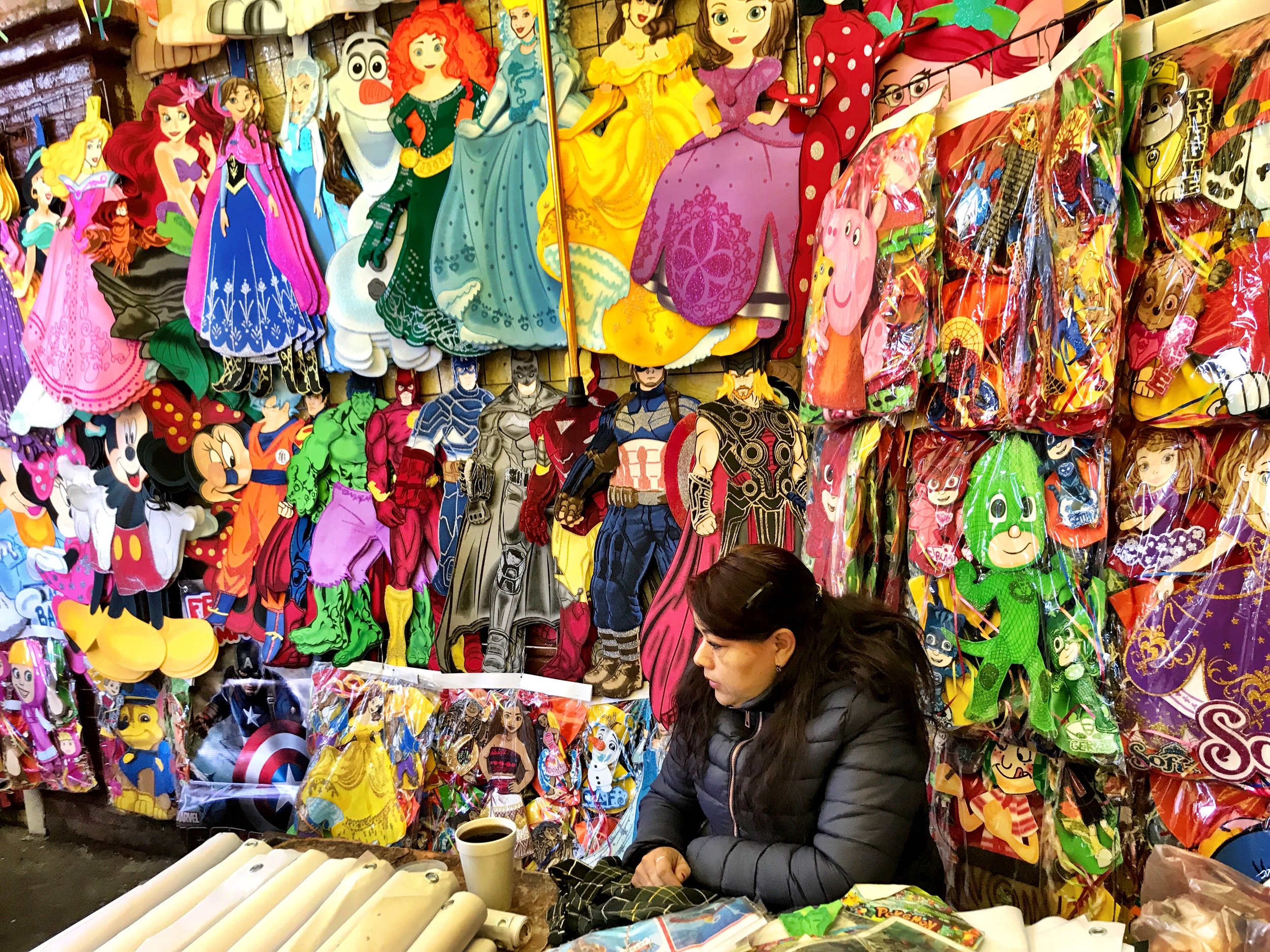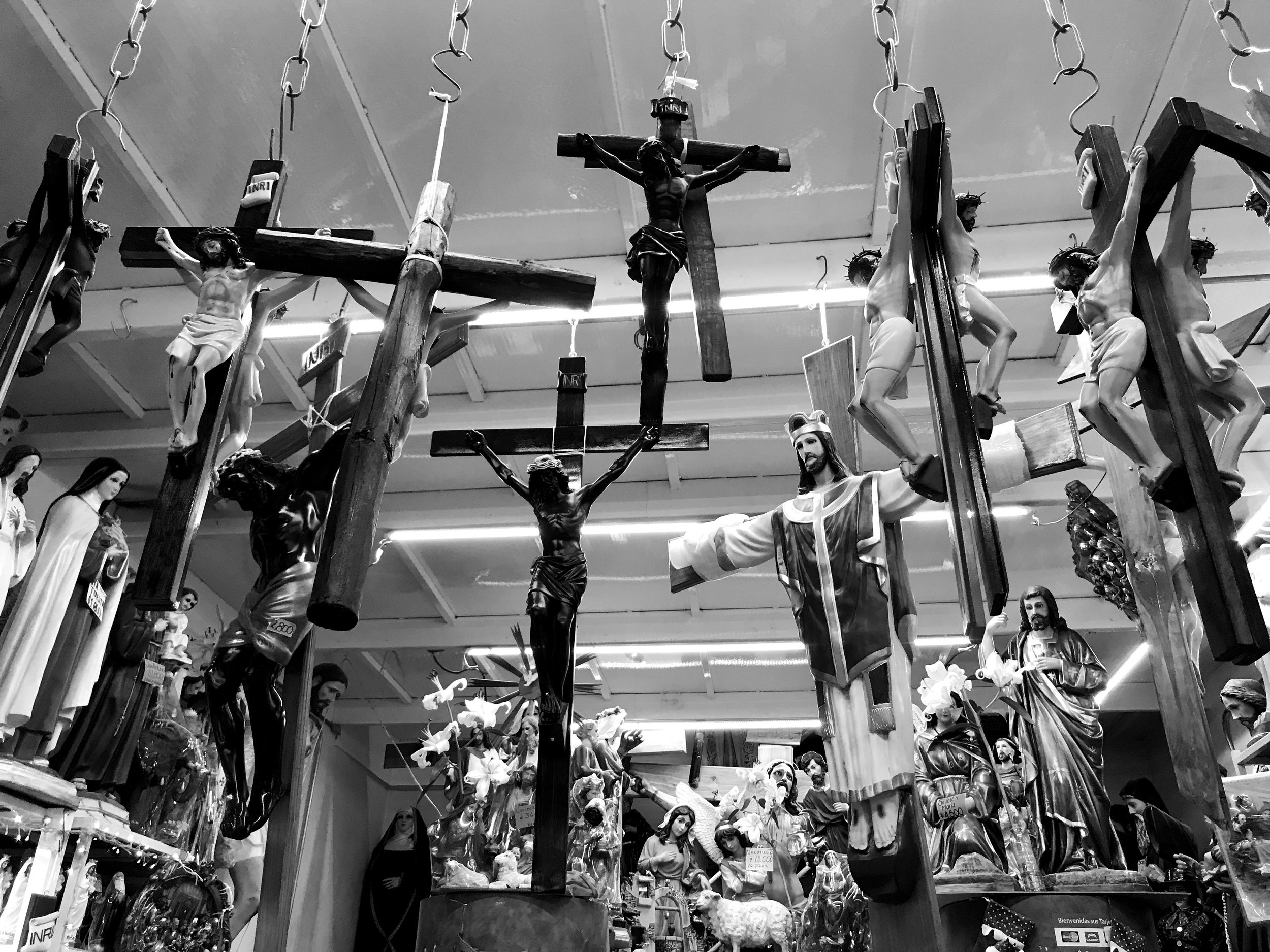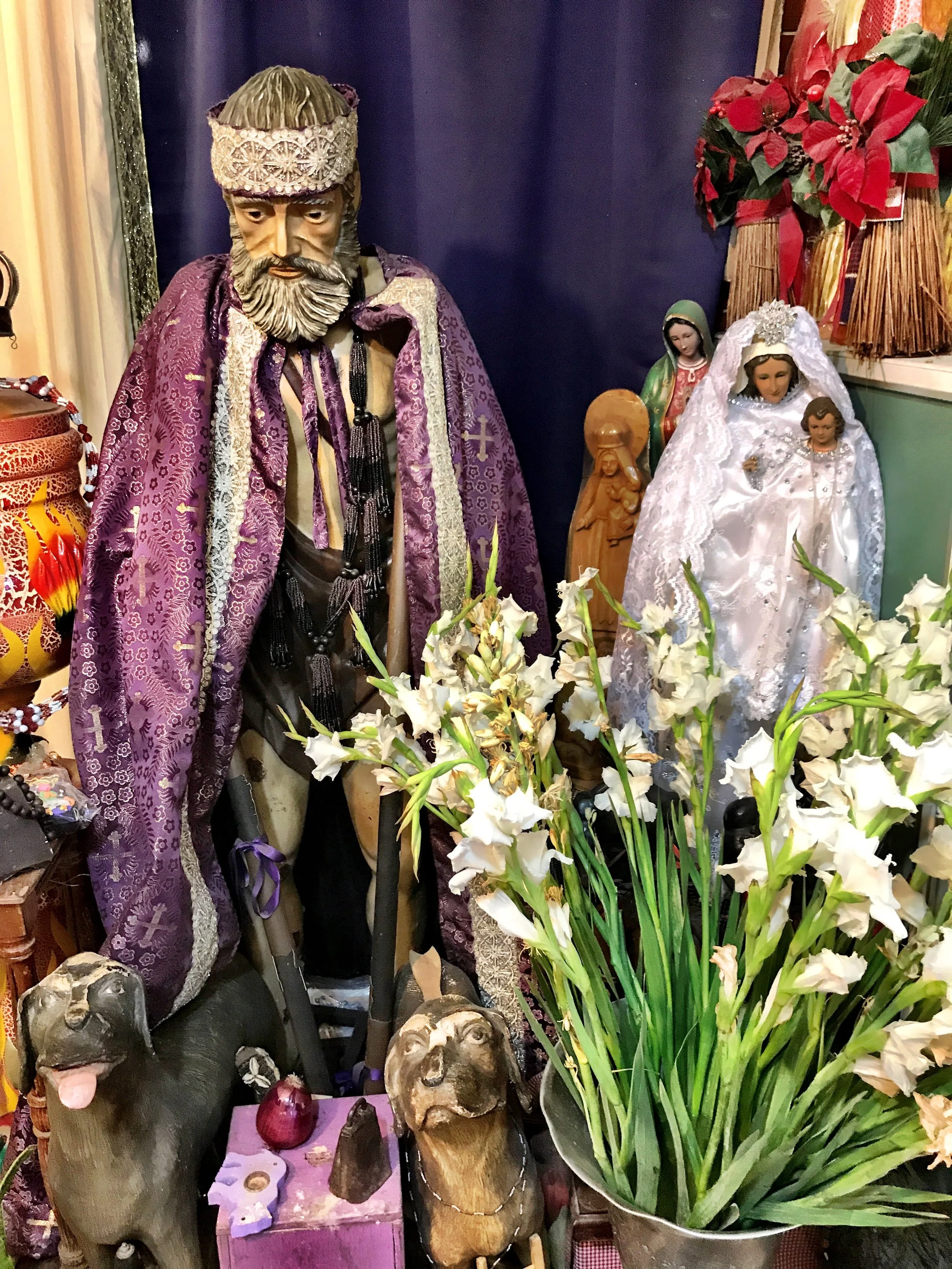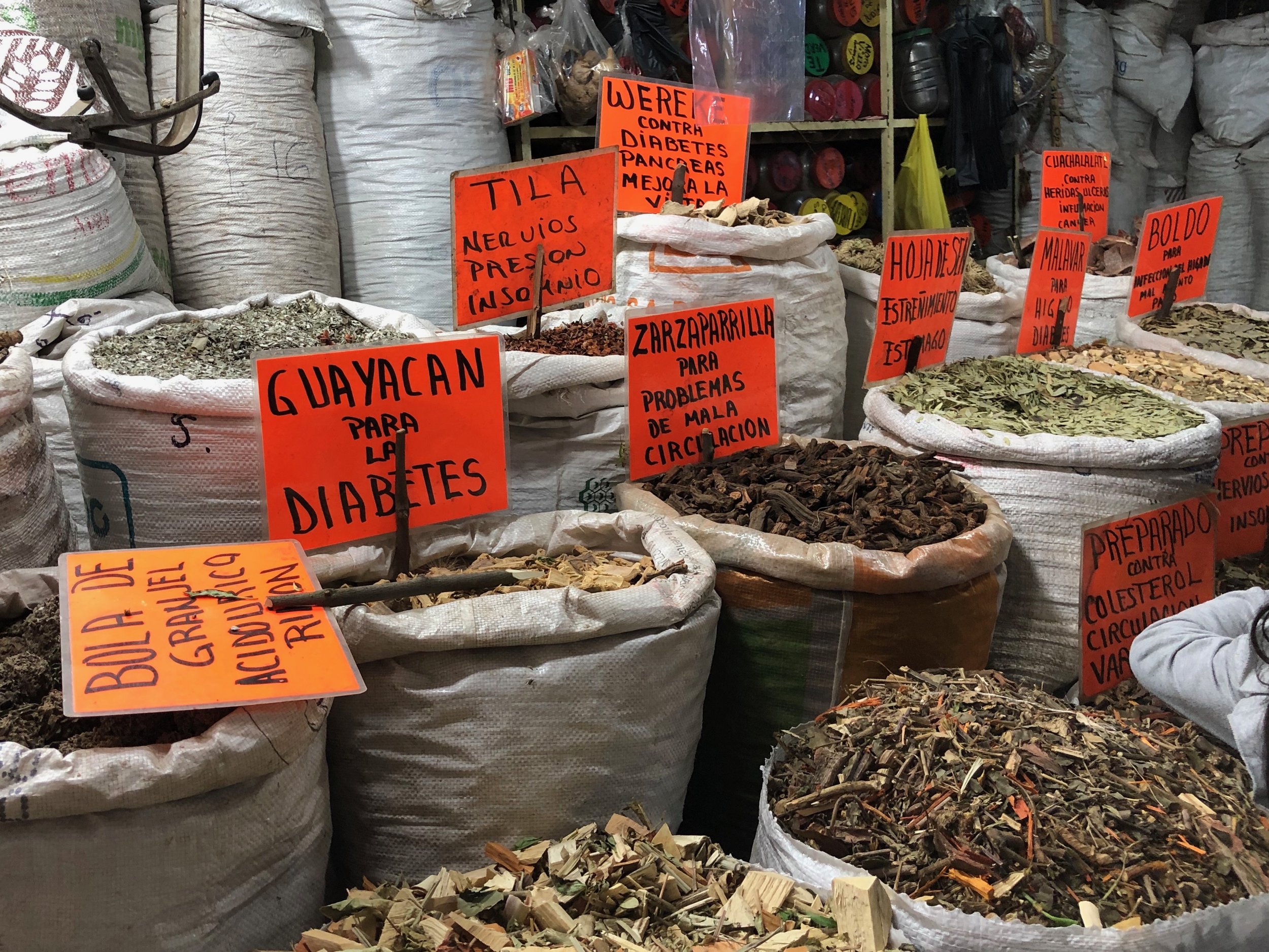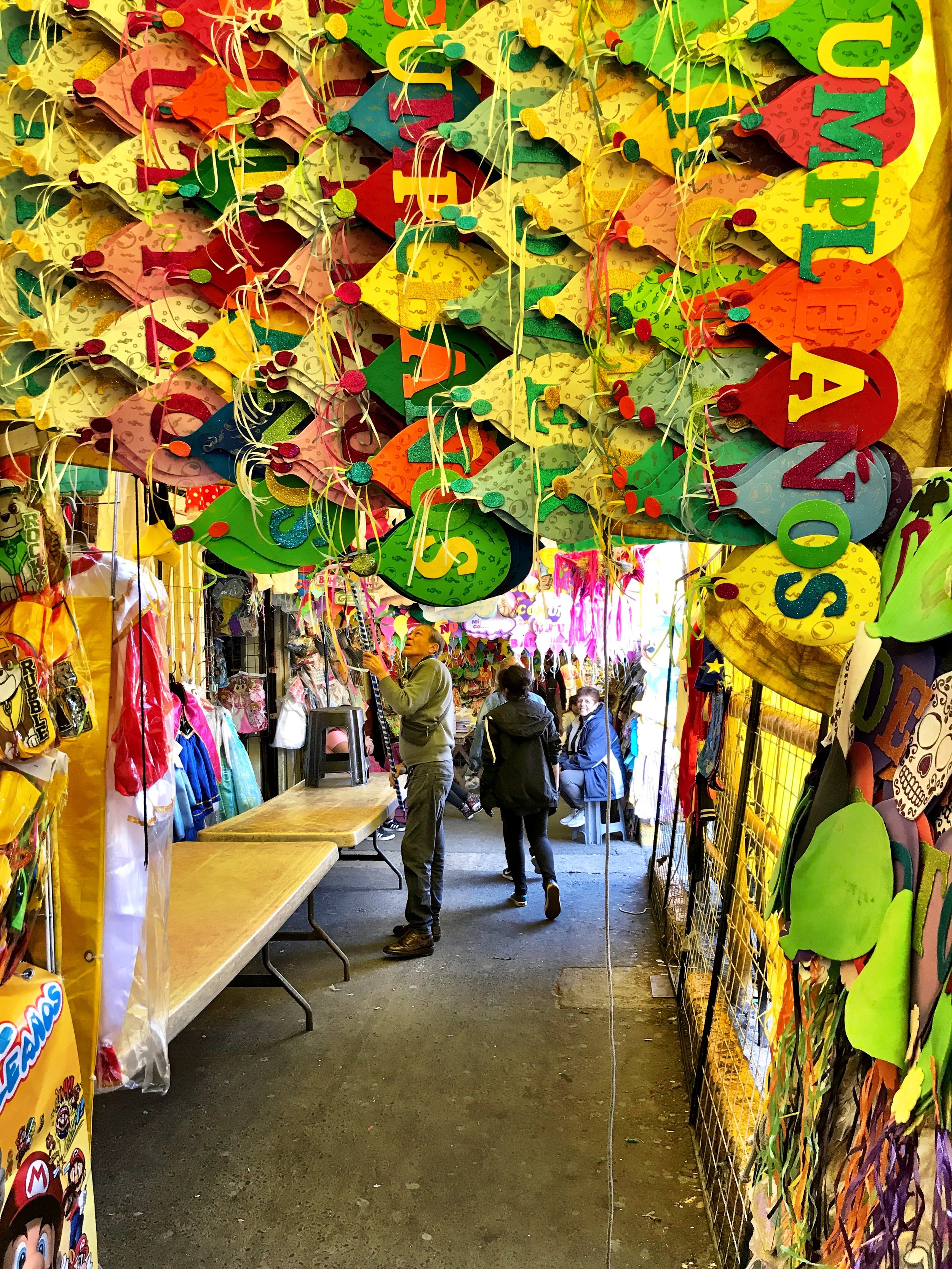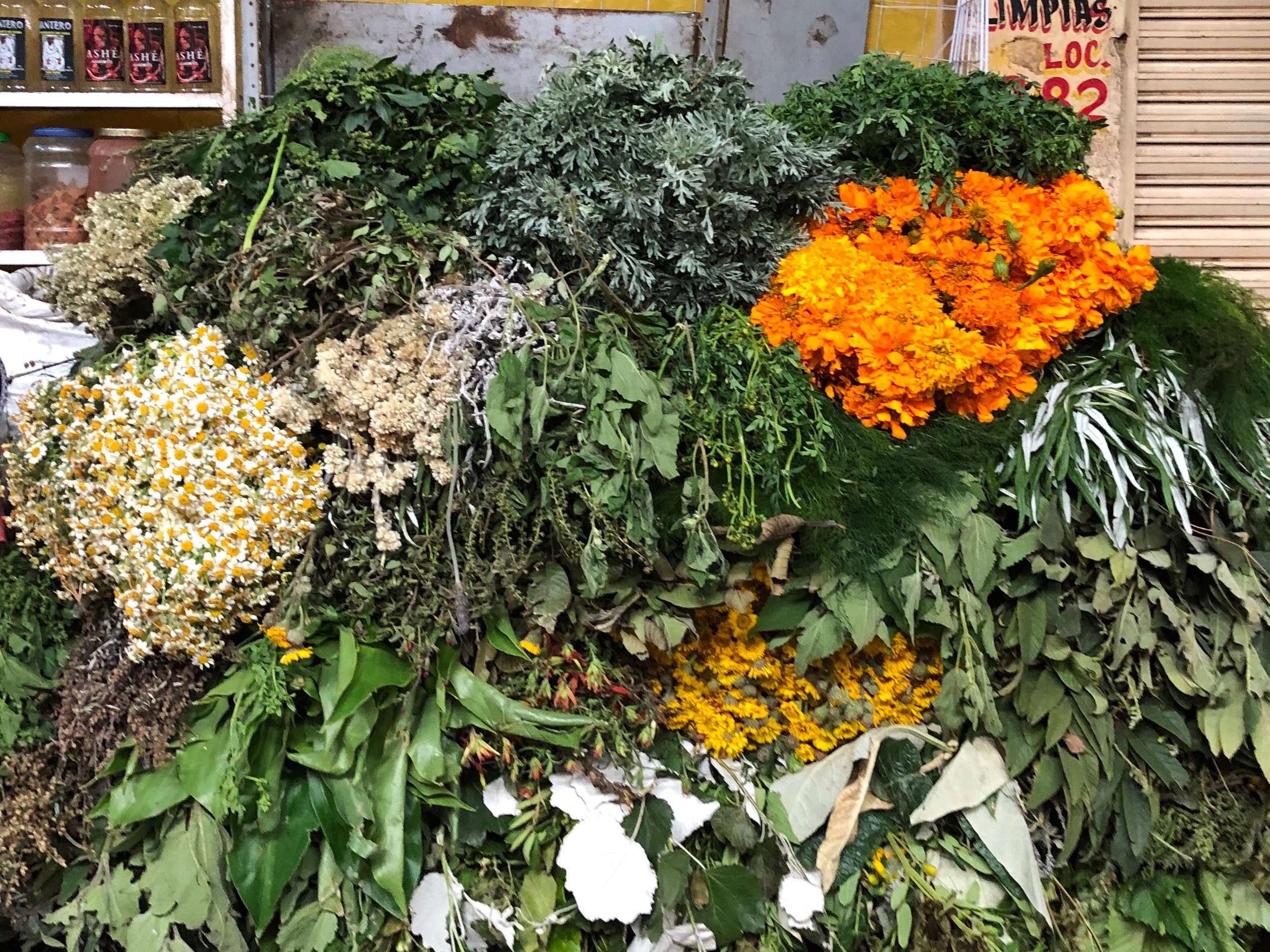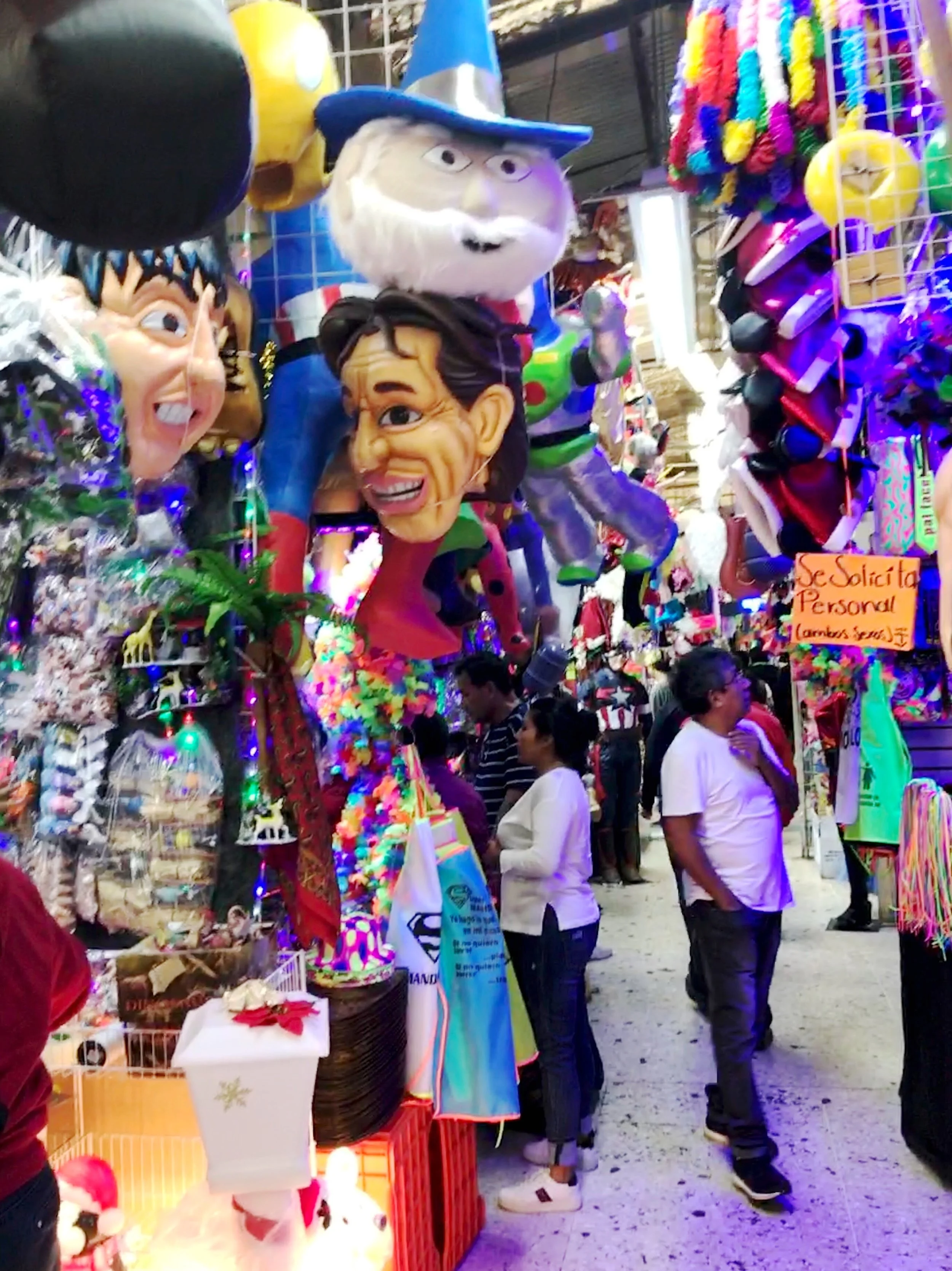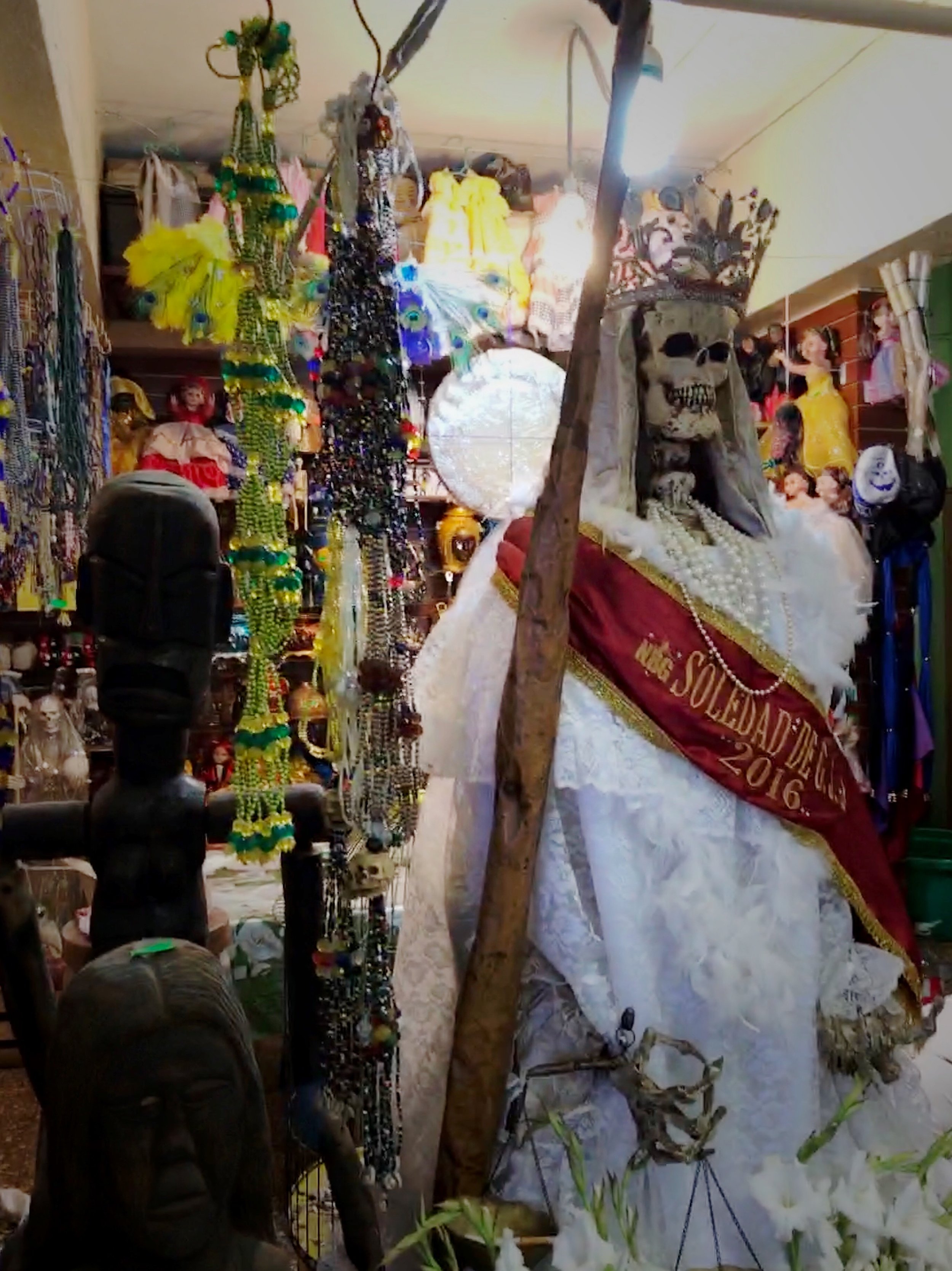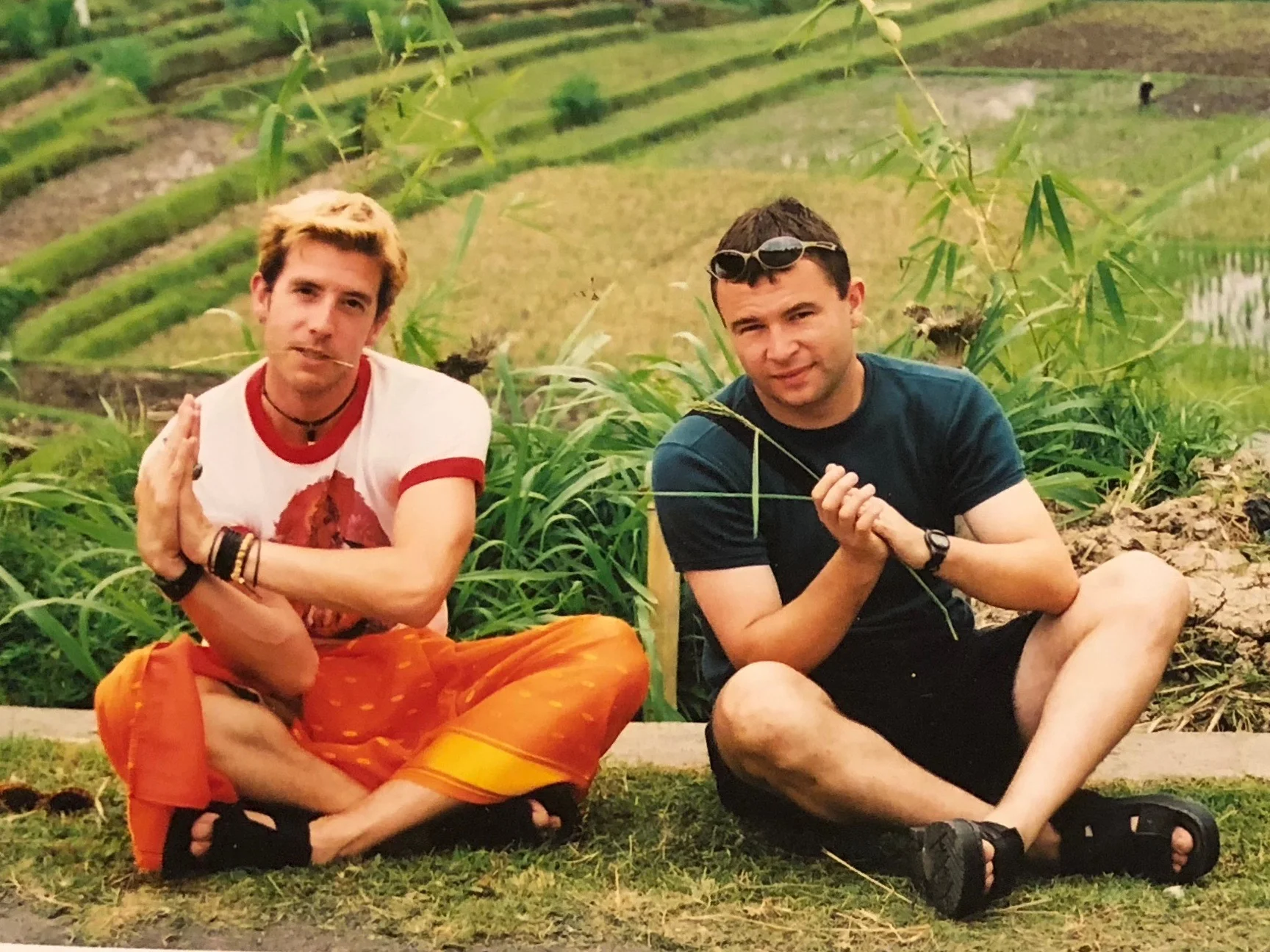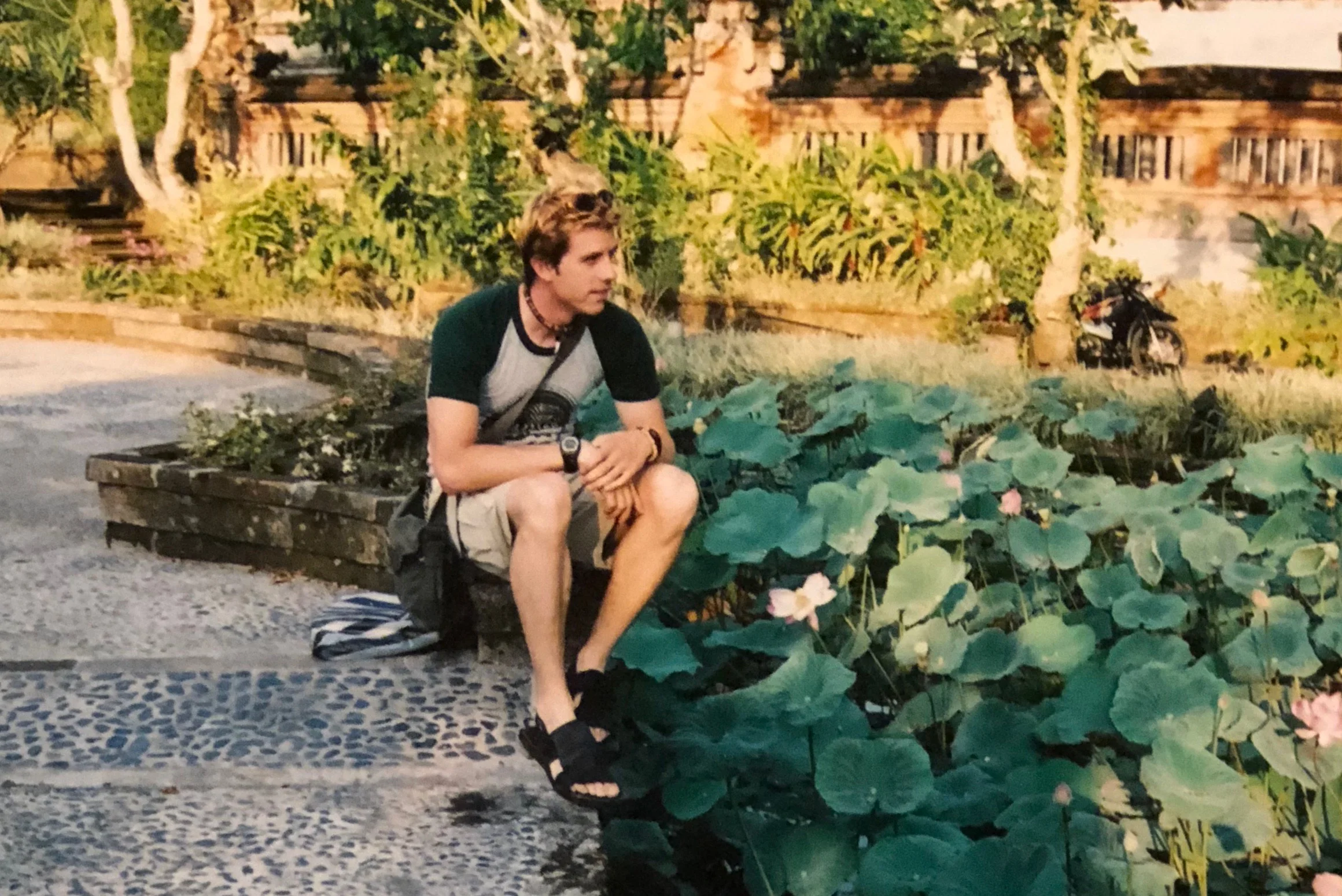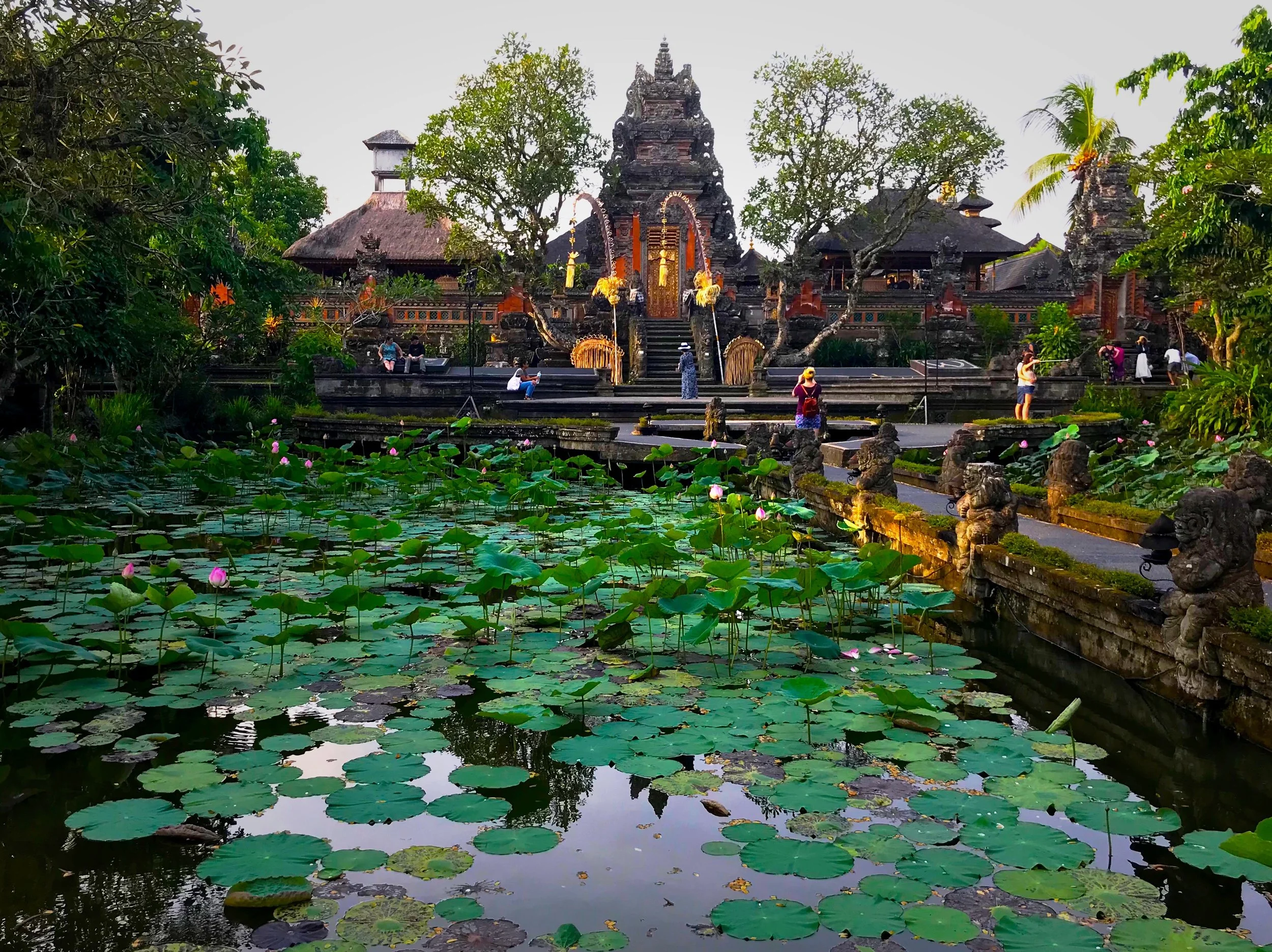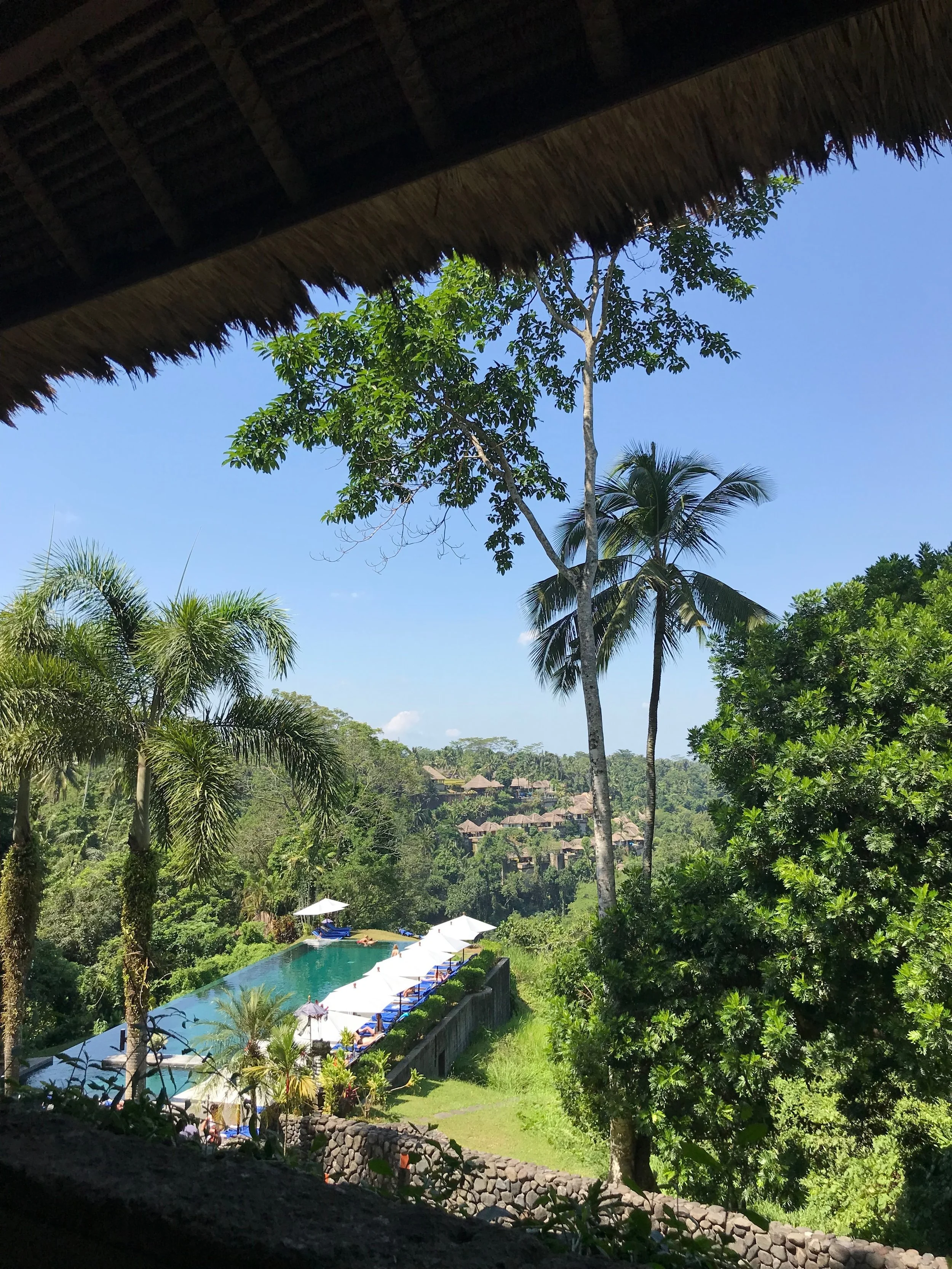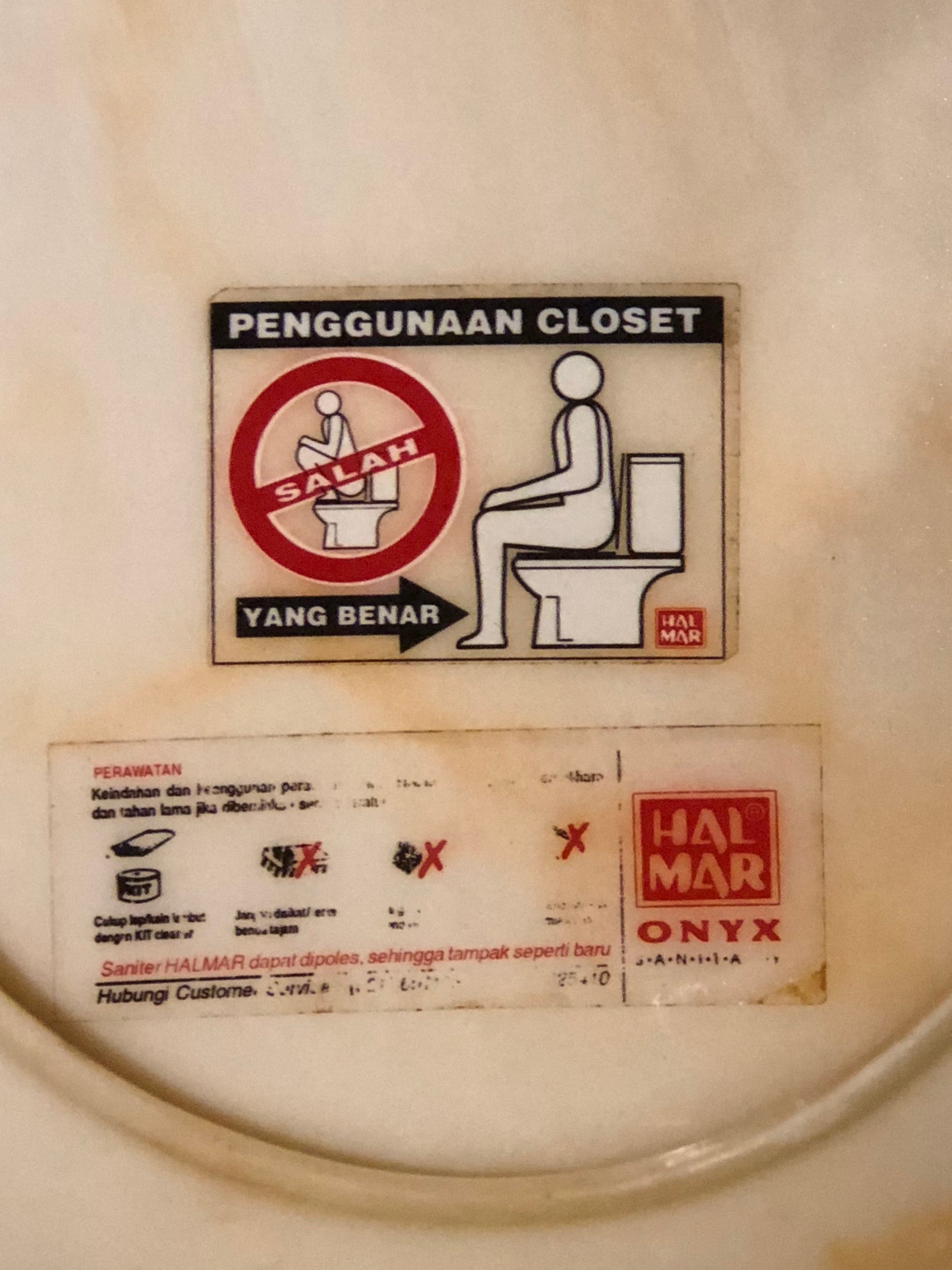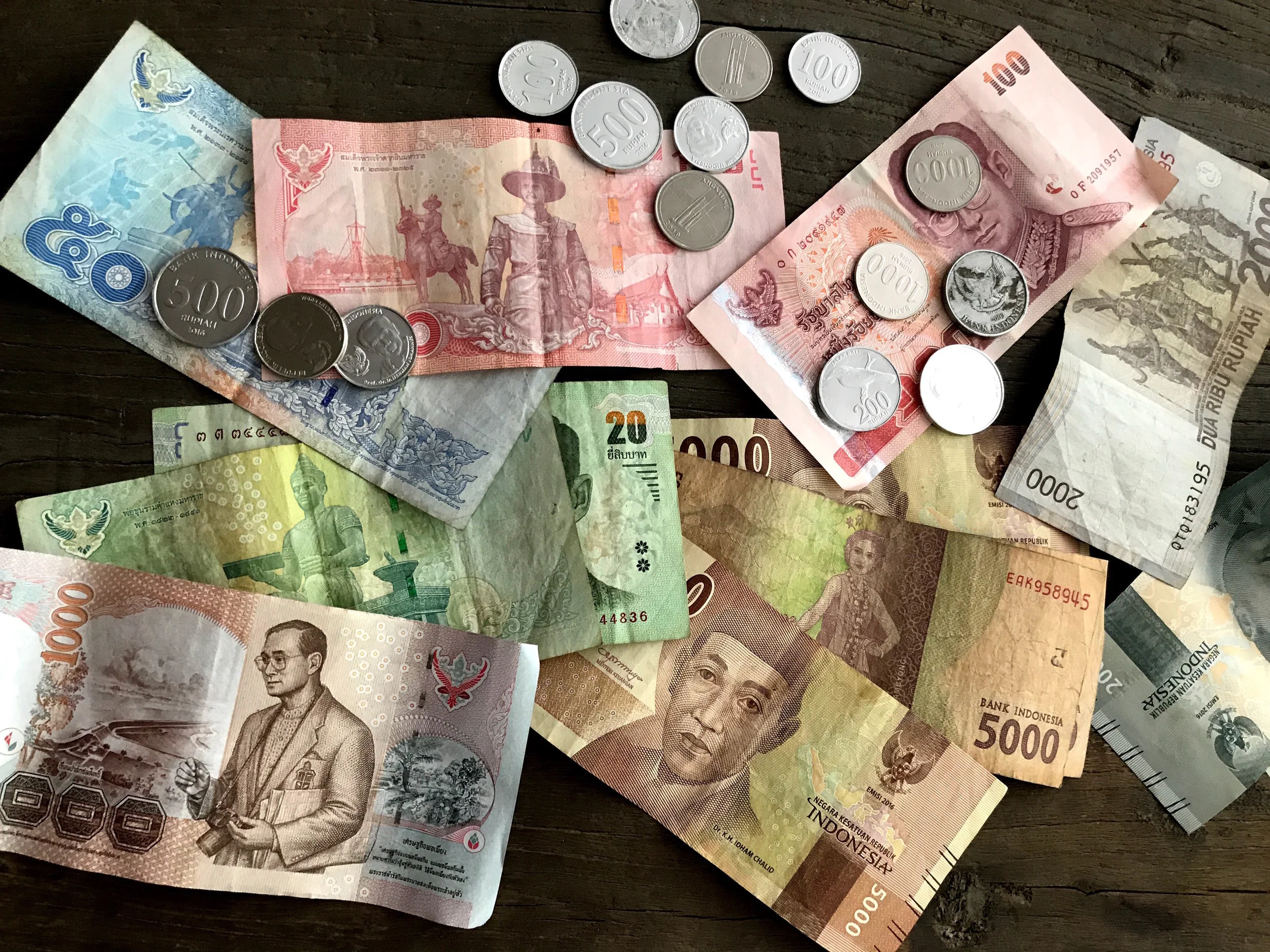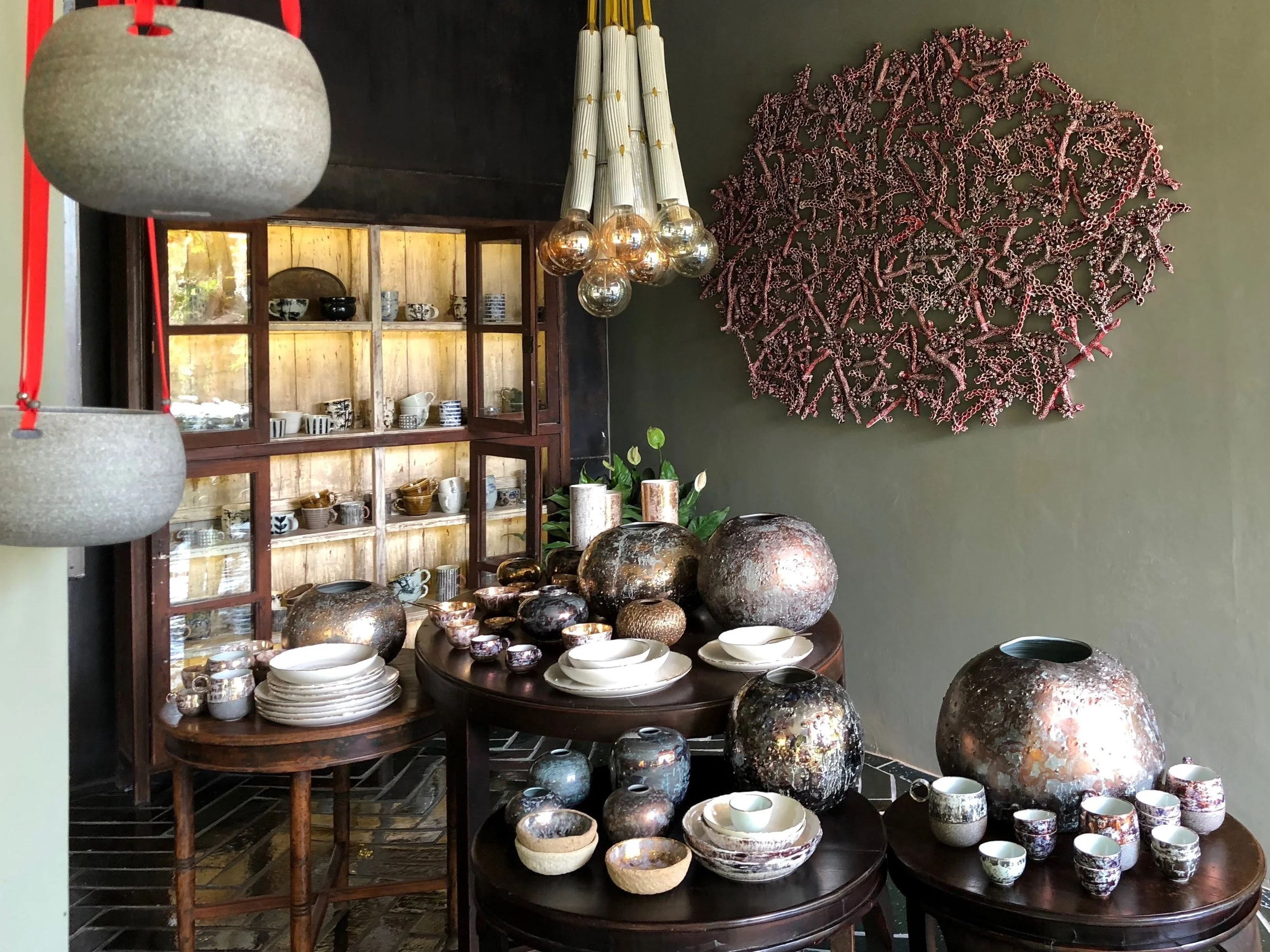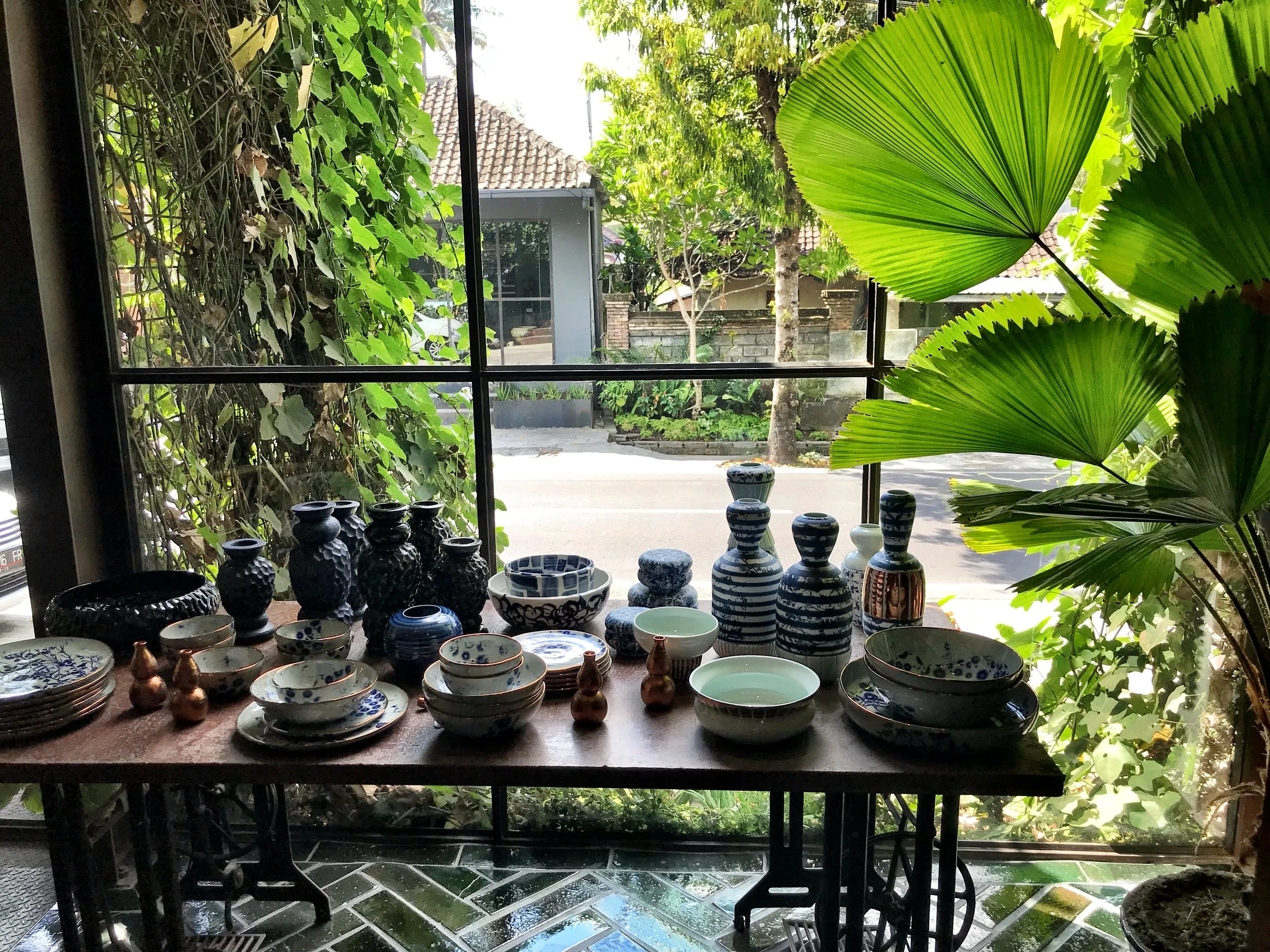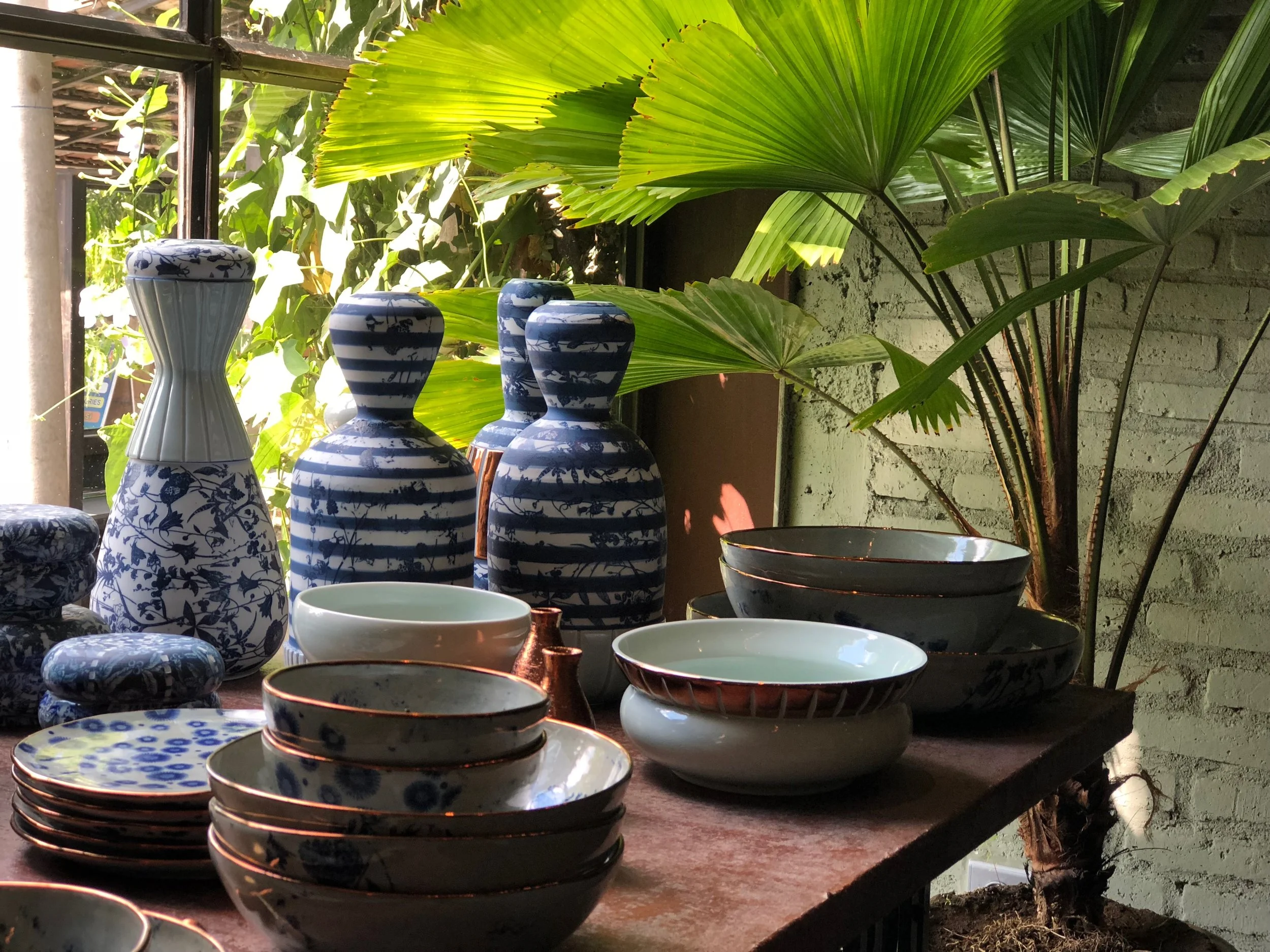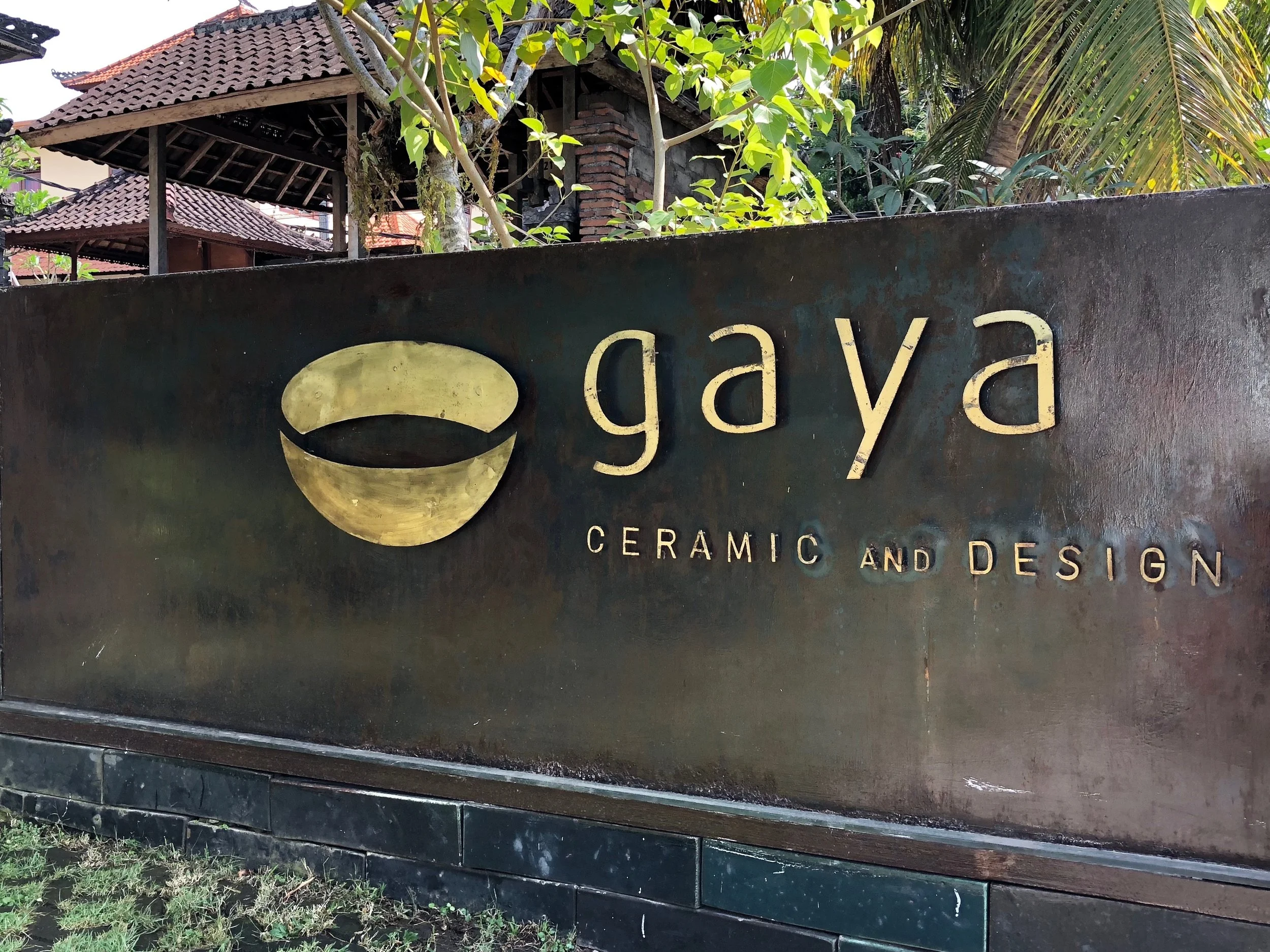The best market in Mexico City is filled with folk art and handicrafts from all around Mexico.
A selection of fantastical alebrijes on sale at La Ciudadela
Mexico City has no shortage of markets. There’s the Saturday art market along the adorable cobblestone streets on the hills of San Ángel. There’s La Lagunilla, the Sunday antiques market. There’s also the Mercado Sonora, with a witch market tucked into a back corner, and the vibrant, two-story Mercado Coyoacán. And market stalls pop up all over the city, including in the Plaza de la Republica at the entrance to the Monumento de la Revolución.
Papier-mâché devils hanging around the mercado
¡Mucha lucha! A luchadore-themed shop at the Mercado de Artesanías La Ciudadela
Religious artifacts on sale at the Mercado de Artesanías La Ciudadela
But if you’re into folk art, handicrafts and arte popular, as Duke and I are, the Mercado de Artesanías La Ciudadela is a dream come true. It’s so massive you couldn’t even hope to cover it all on one visit. We’ve been there on both visits to CDMX — and will make it a stop every time we go back.
If I’m being perfectly honest, Duke and I have a problem. We just love traditional handicrafts so much we can’t help but bring home half a suitcase full of goodies. As you can imagine, our home is practically overflowing with these souvenirs of our world travels.
A nun is amazed at the selection of folk art on sale at the Mercado de Artesanías La Ciudadela.
We bought a few things at this stall with clay artworks in the pre-Columbian style.
Puppets and other arte popular fill every stall at the Mercado de Artesanías La Ciudadela.
Mexican Trees of Life at the Mercado de Artesanías La Ciudadela
A typical shop at La Ciudadela
Break up your shopping — and grab a margarita — at the cantina in the market.
Tips for Shopping at Mercado de Artesanías La Ciudadela
When you enter, the main part of the market is to your right — but don’t miss the smaller section off to the left as well.
The stalls offer handicrafts from various regions all over Mexico: alebrijes, brightly painted wooden fantastical creatures from Oaxaca; colorful Otomi textiles, including hand-embroidered pillow covers and tablecloths depicting animals, flowers and plants; clay sculptures that surpass those sold at the Museo Nacional de Antropología gift shop with many in the pre-Columbian style.
There are handicrafts for sale from all over Mexico at the Mercado de Artesanías La Ciudadela.
At La Ciudadela, prices are set — but it doesn’t hurt to ask for a bit of a discount if you’re buying multiple items from one vendor.
We always eat lunch at Fonda Carmelita, the cantina in the middle of the market.
There’s a cantina in the middle of the market called Fonda Carmelita, where we always stop to get a bite of traditional Mexican fare — and a couple of margaritas, por supuesto. The first time we were here, Duke went to the back to use the baño and returned to the table, reporting that our frozen margs were being whipped up in a blender by an 8-year-old boy.
The cantina will always be a welcome resting spot for us to recharge and discuss the stalls we want to revisit after lunch. Apparently, the loud-talking German-speaking tourist at a neighboring table didn’t get the memo that smoking indoors has been banned in CDMX since 2008. He lit up a cigar after his meal, which was our cue that it was time to ask for la cuenta and get back to shopping.
Right out front of the market, a couple of women whip up tacos with homemade blue corn tortillas.
Exploring the Neighborhood
On the sidewalk outside the market, small vendors set up. The first time we came, we stopped to buy veggie tacos — and were obsessed with watching one of the women make homemade blue corn tortillas on a large metal drum right before our eyes.
And on our most recent visit, a quirky used record stand had popped up.
One of the best traditions of Mexico City: open-air dancing in the parks
After a half-day of shopping, the tote bags we had brought with us stuffed full of amazing finds (some for gifts, most for us), we explored the park across the street, Parque de la Ciudadela. We’re familiar enough with CDMX traditions now not to be surprised to see couples dancing in the open air. These people are doing life right. –Wally
Our fave spot to shop in CDMX
A mural on the wall in front of the mercado
When you see this, you know you’re in for a shopping extravaganza!
Mercado de Artesanías La Ciudadela
Balderas S/N
Colonia Centro
Cuauhtémoc
06040 Cuauhtémoc
CDMX
Mexico


